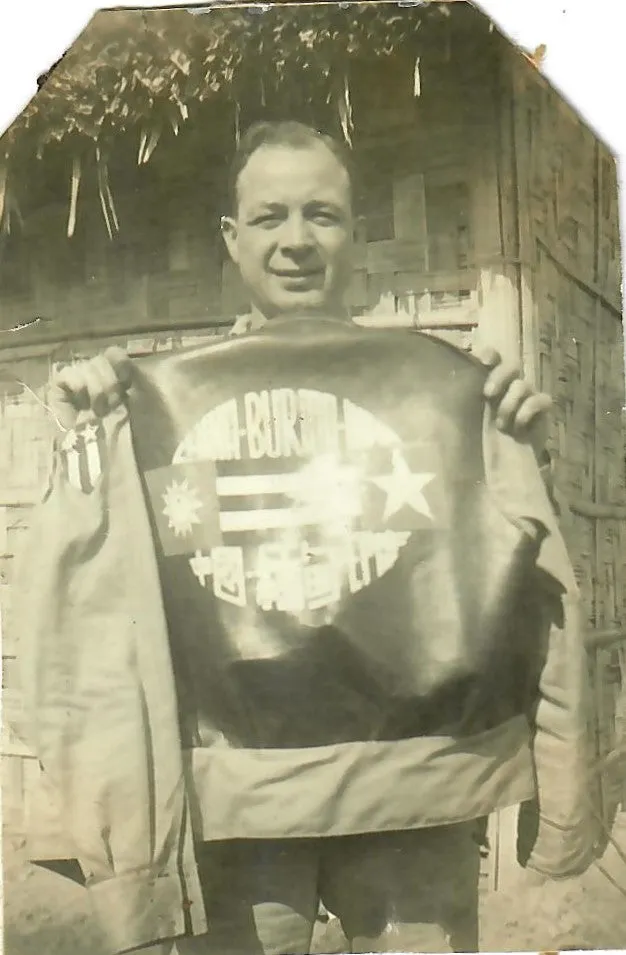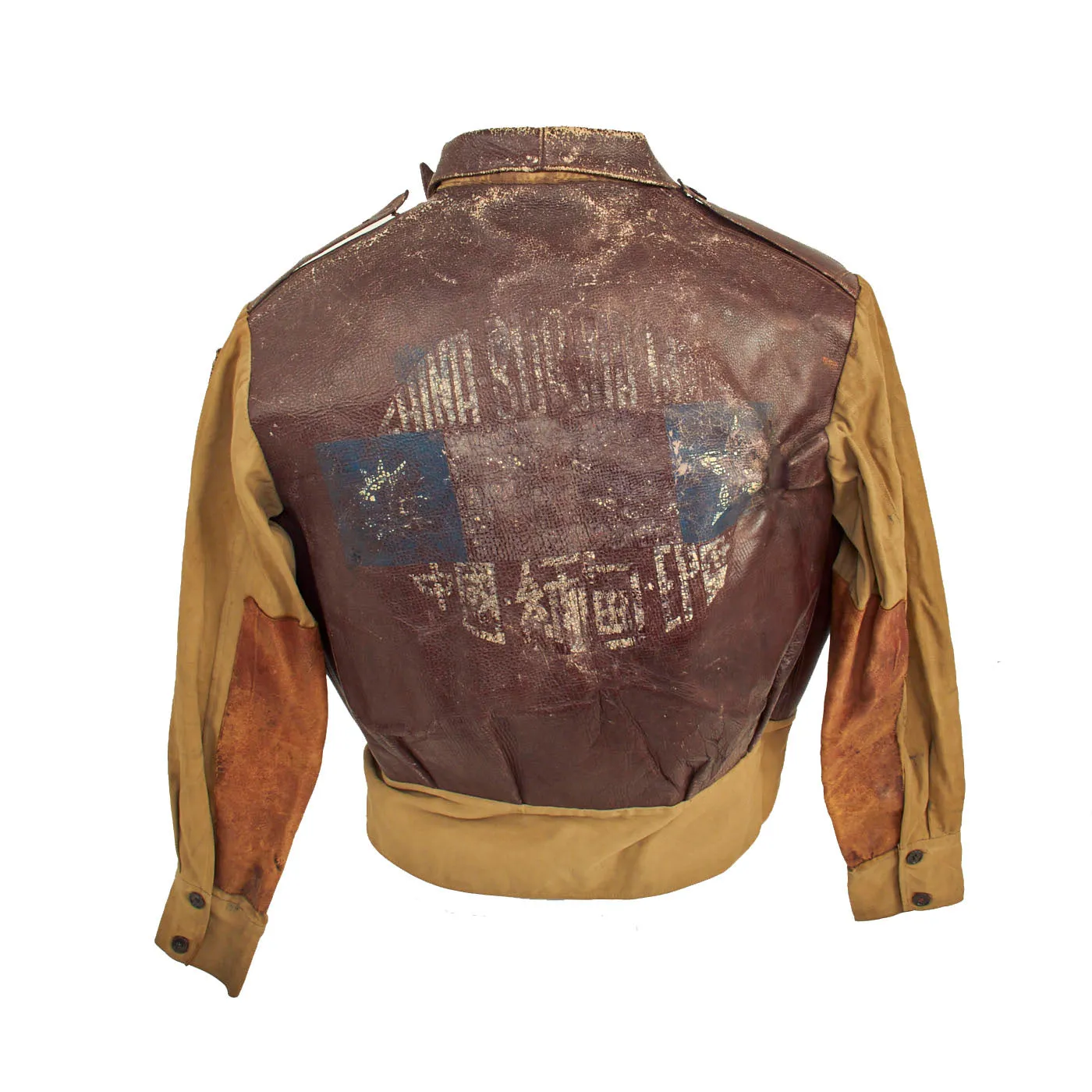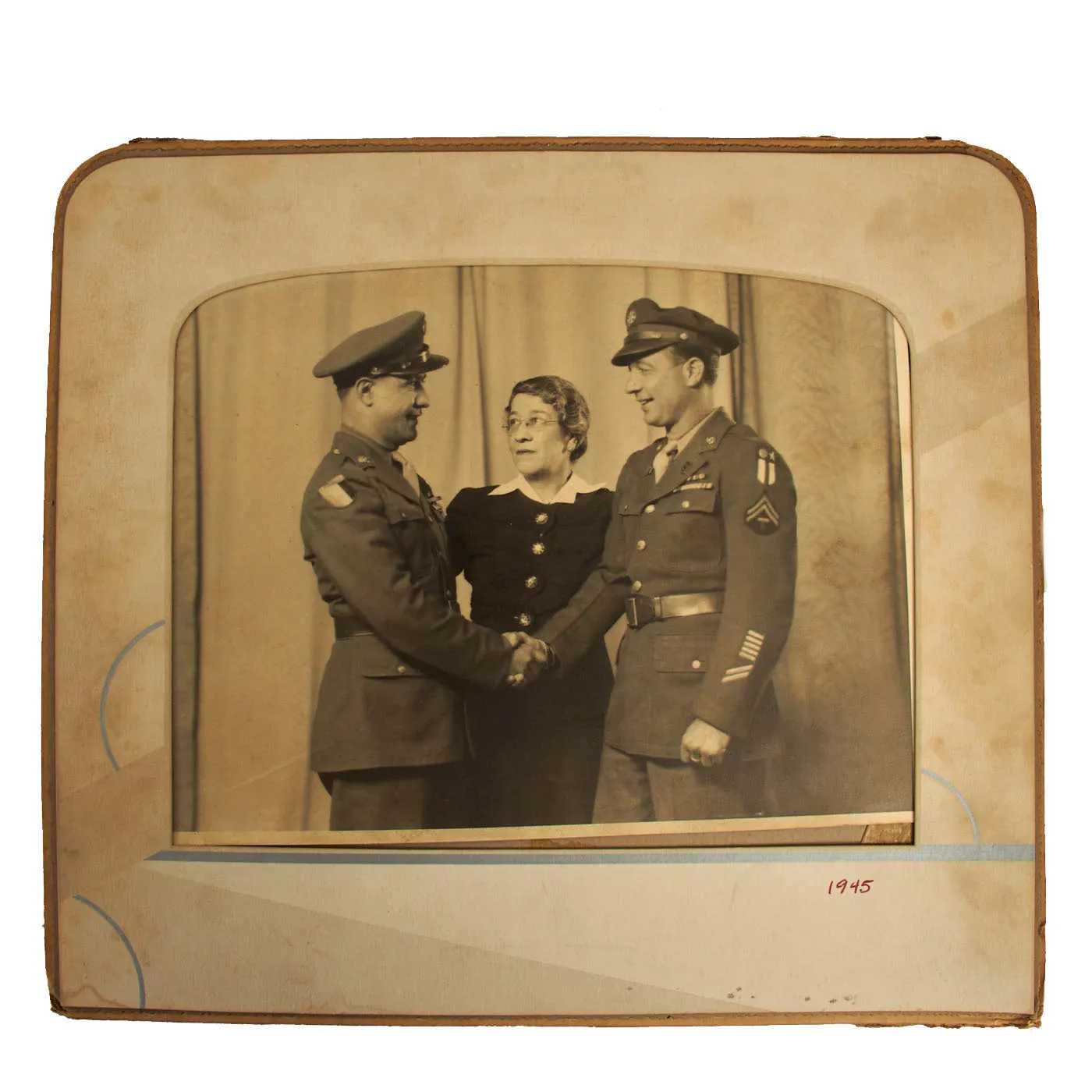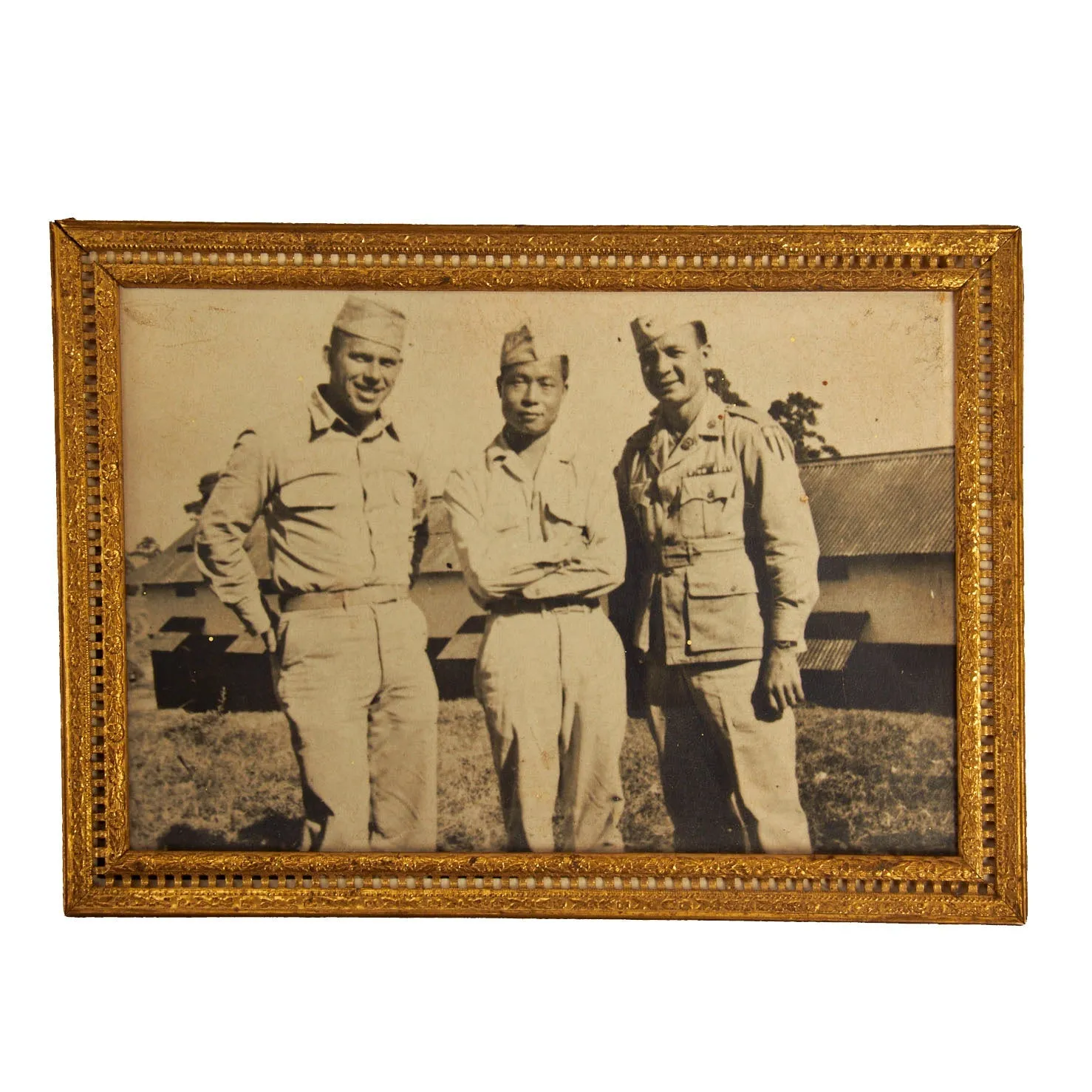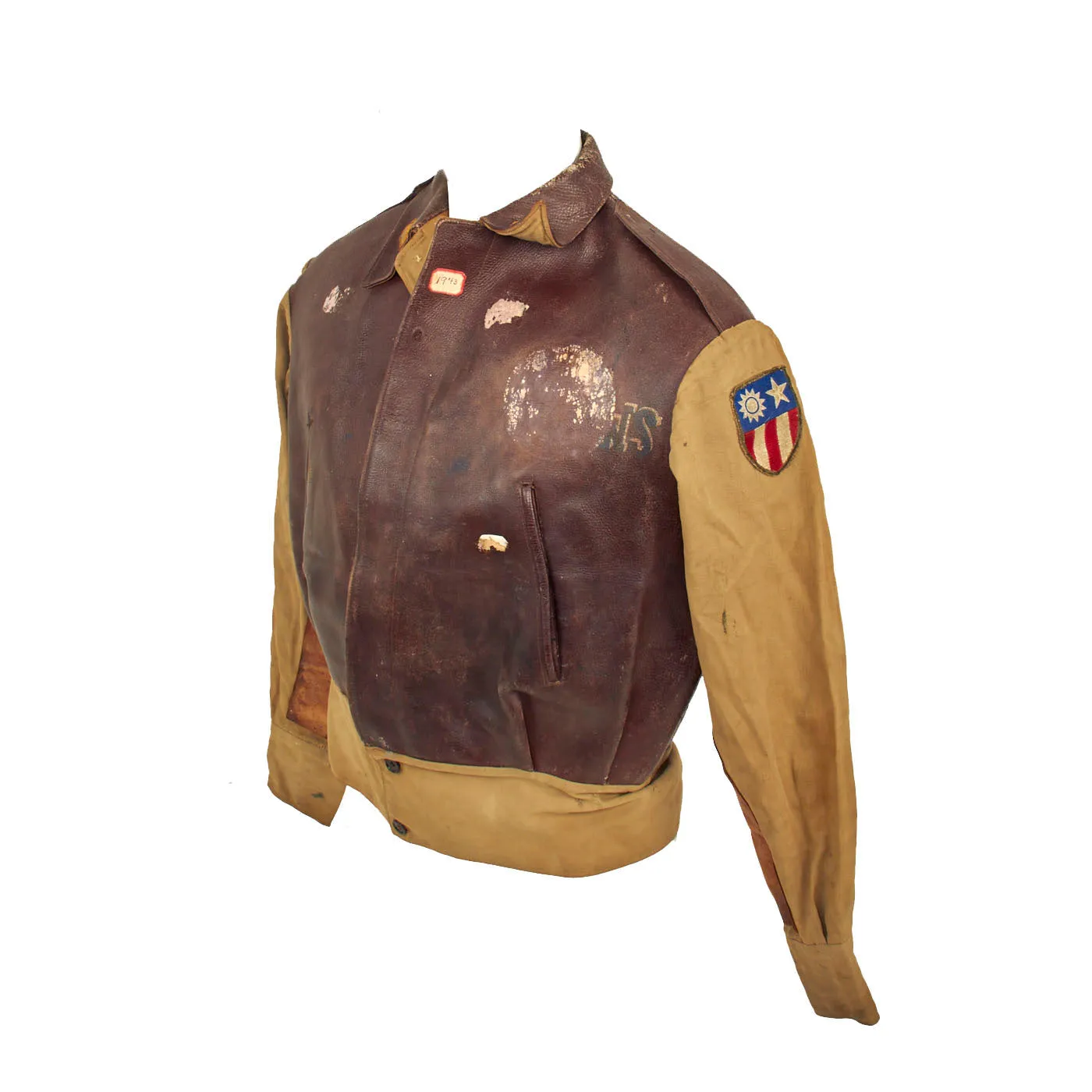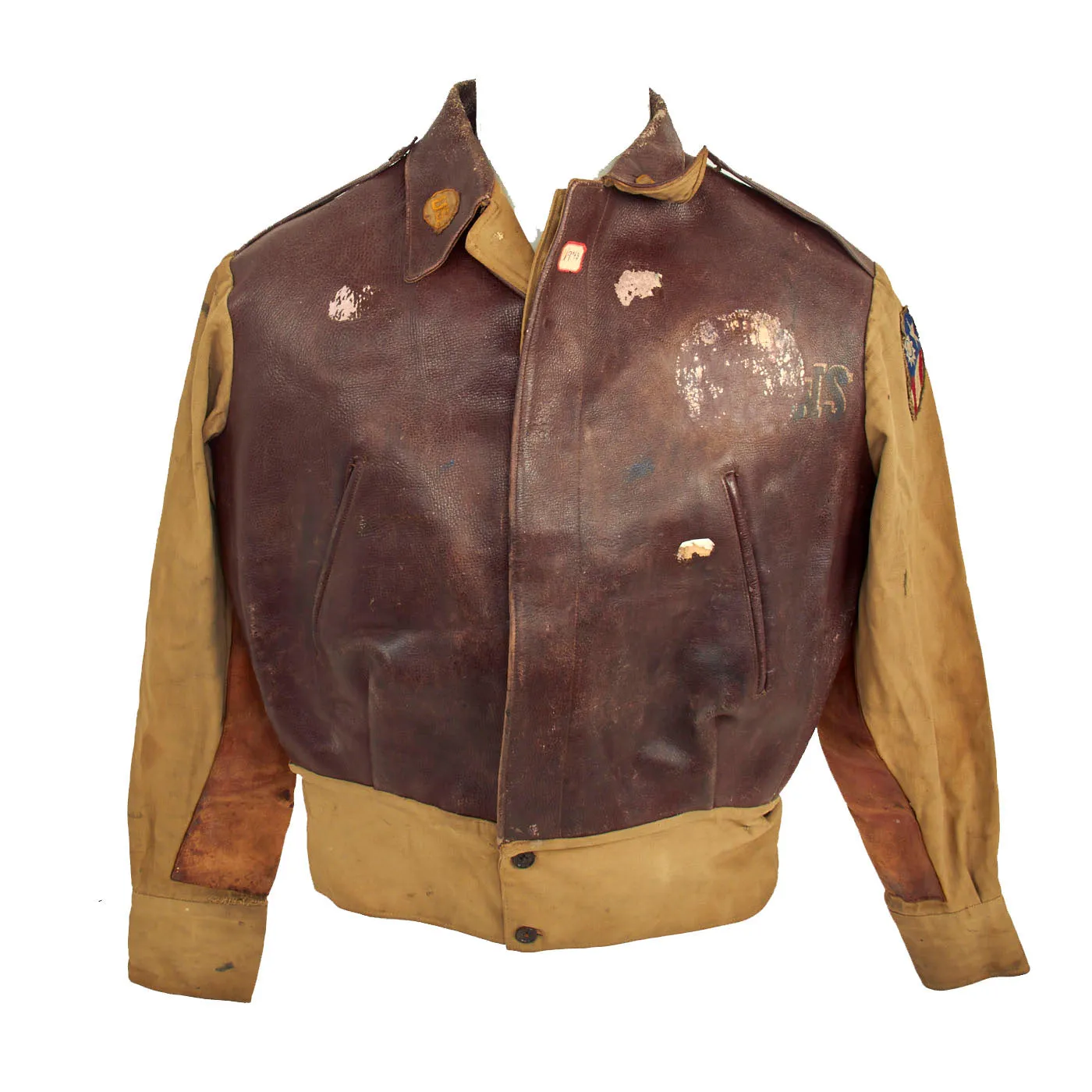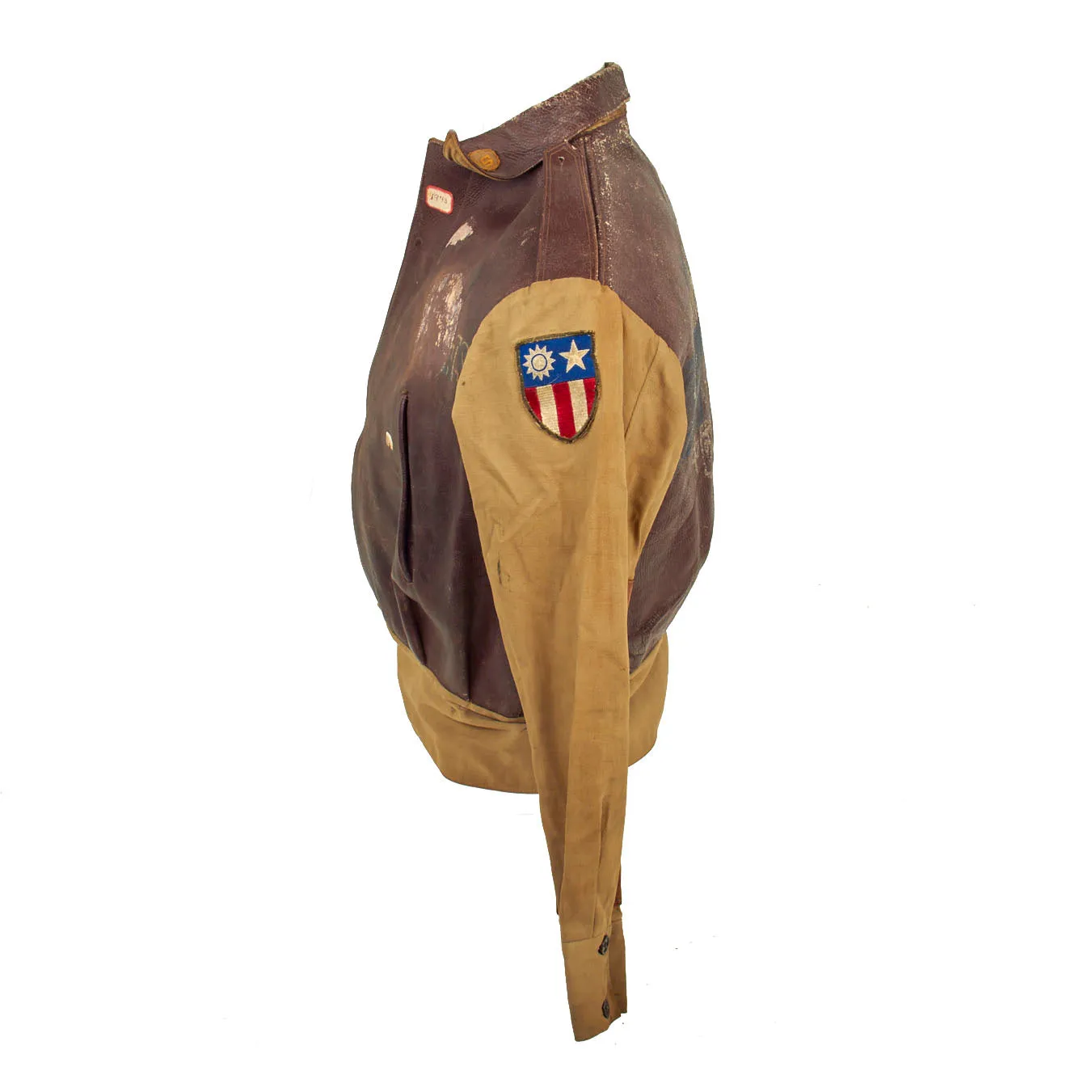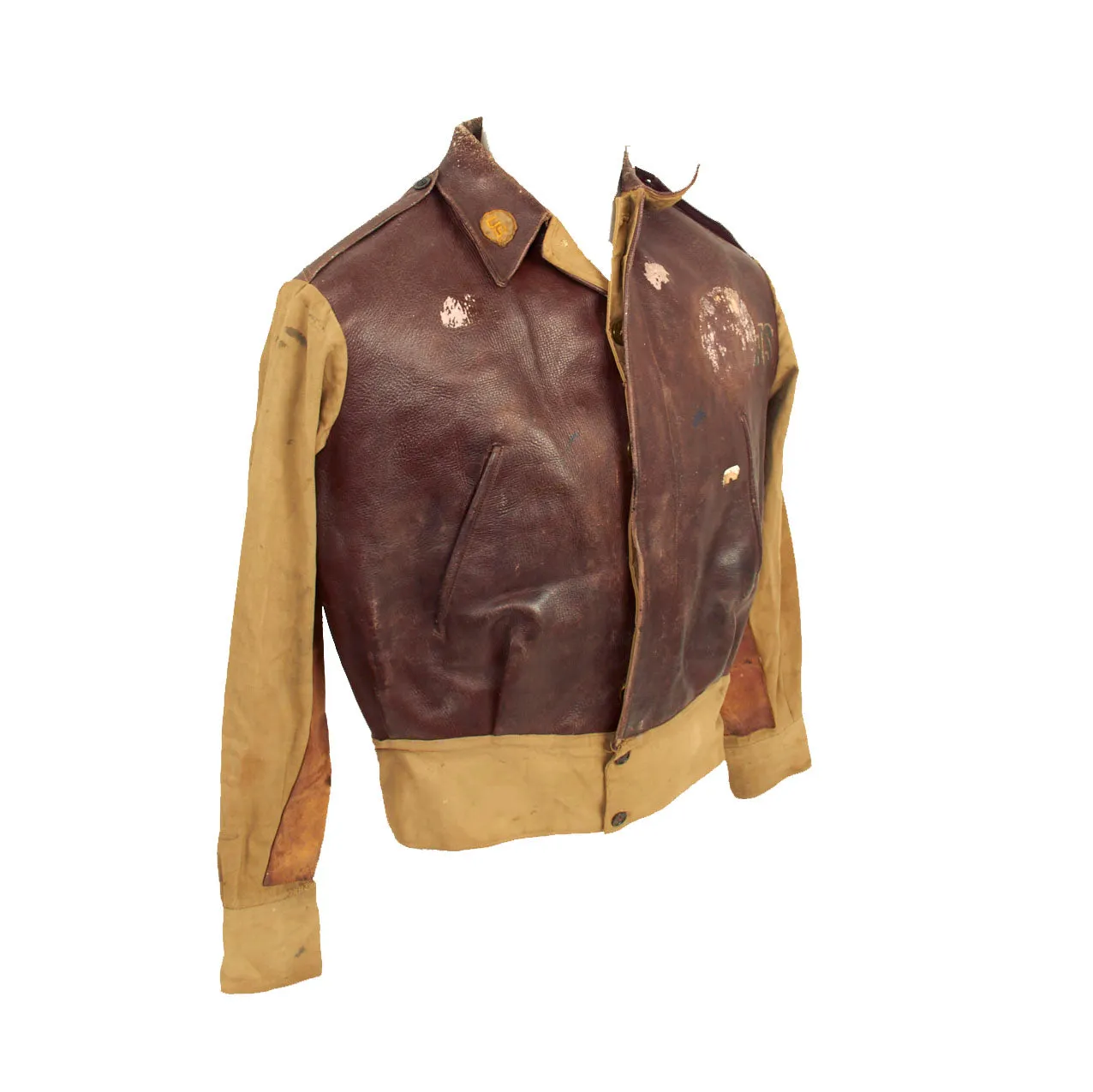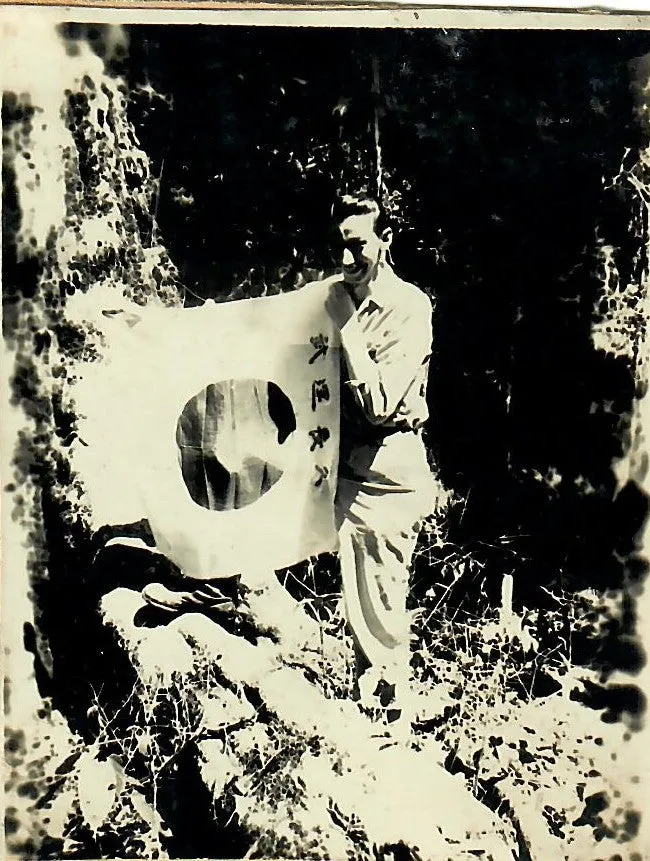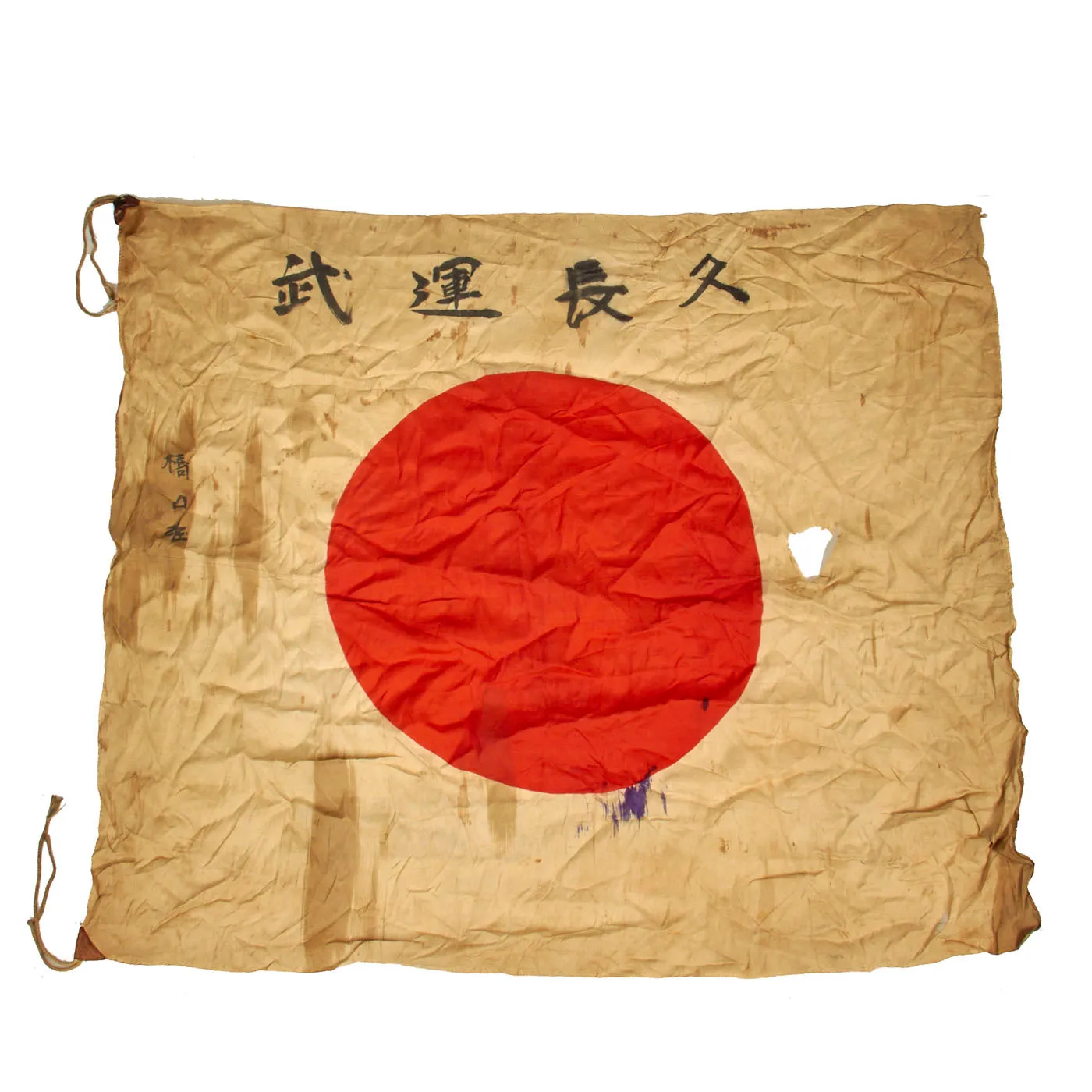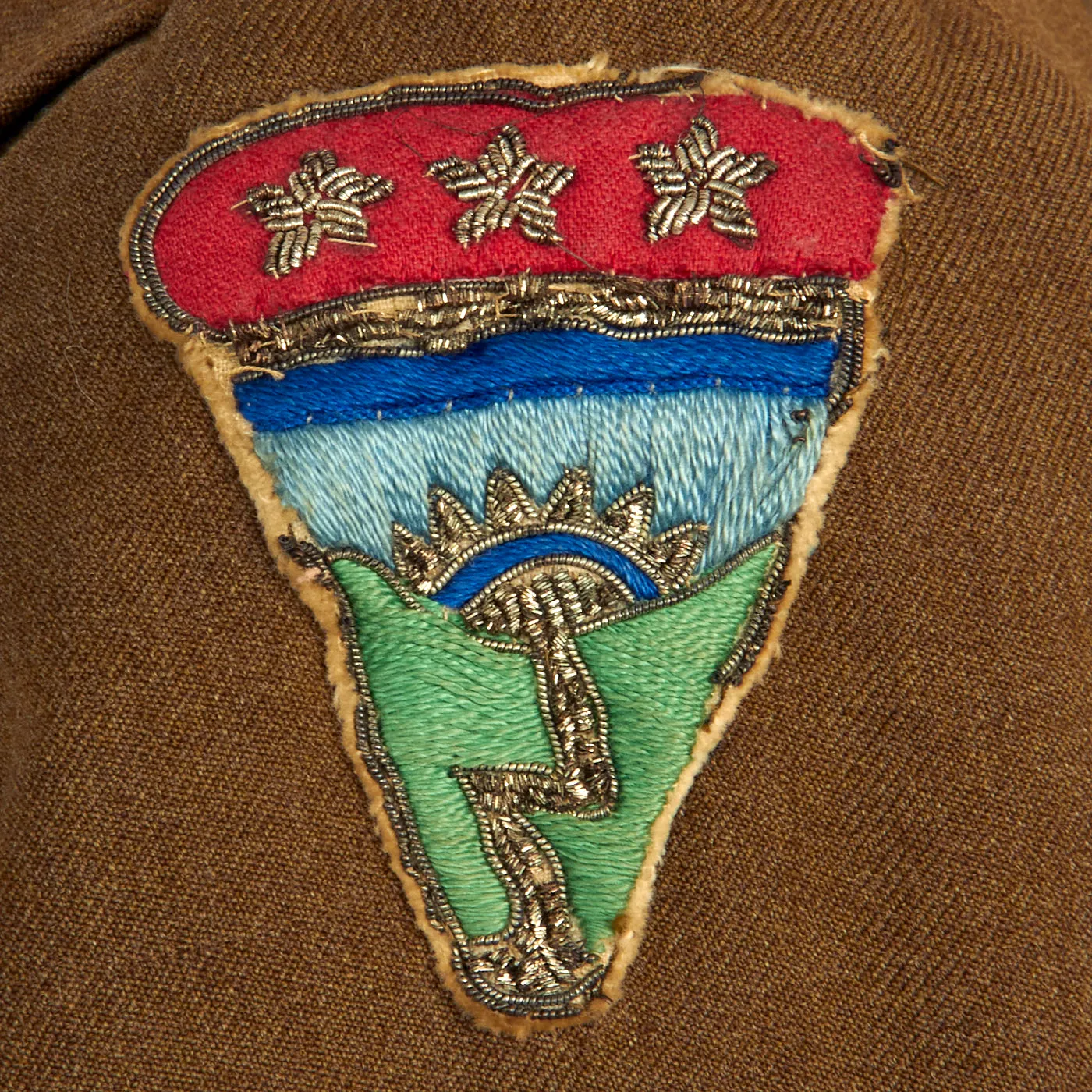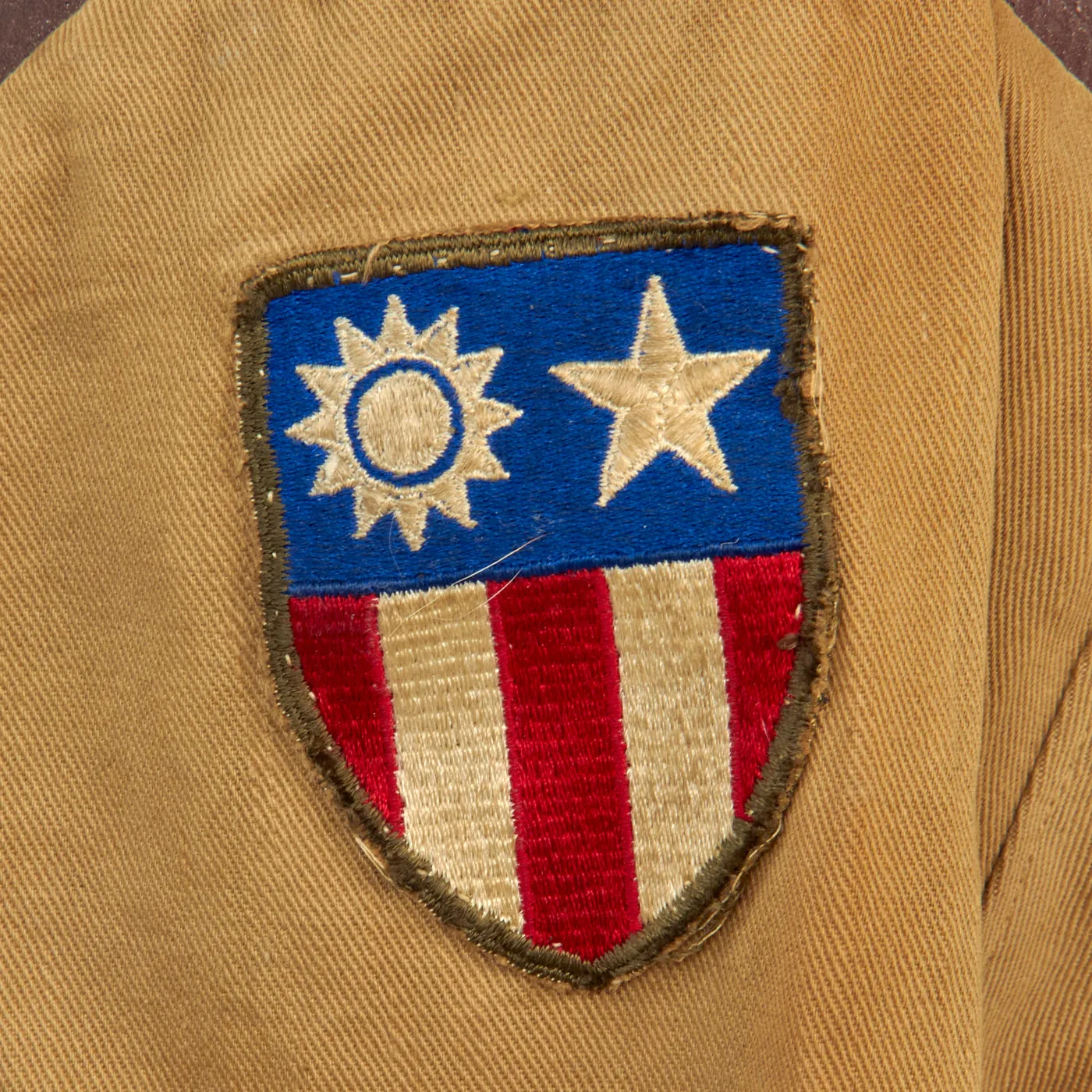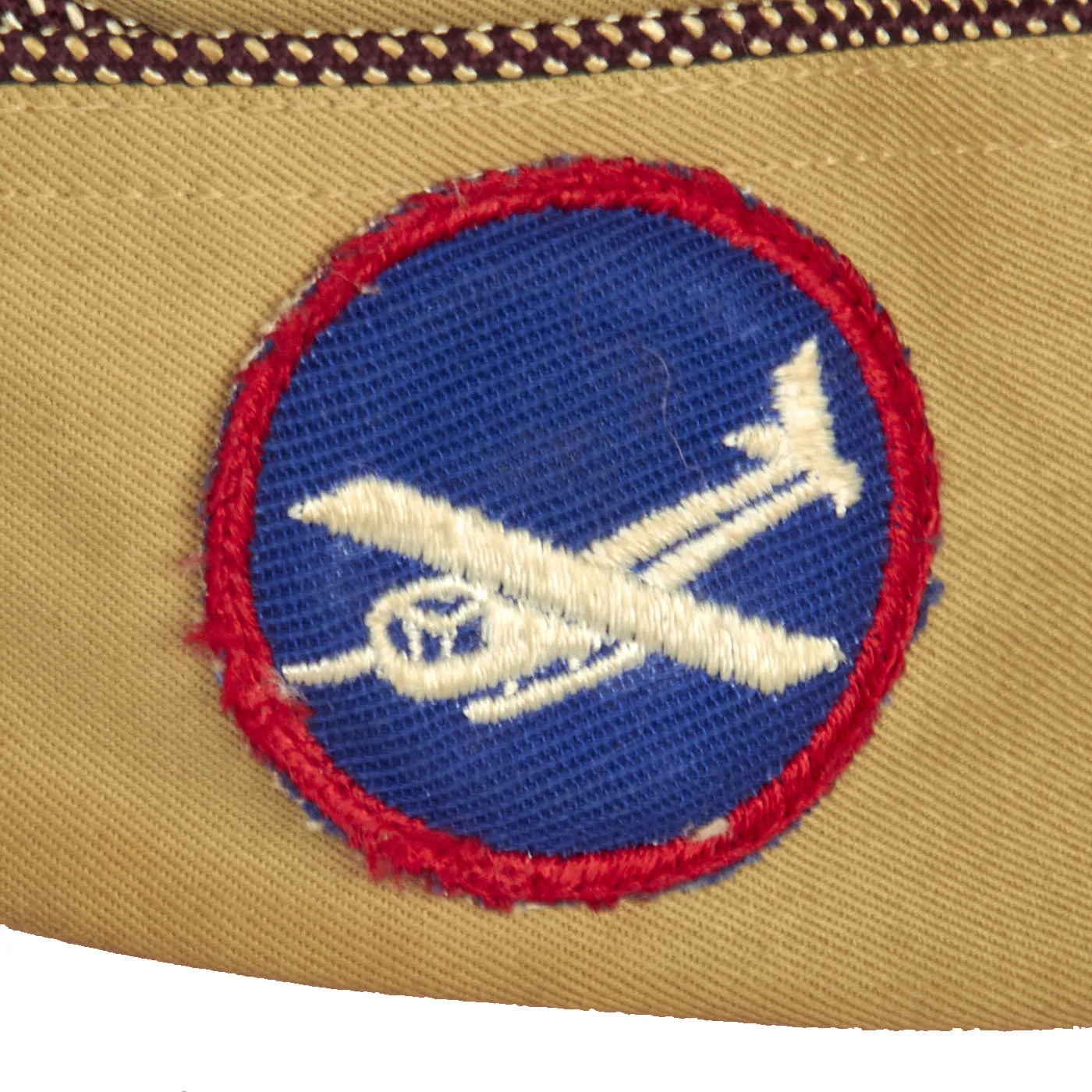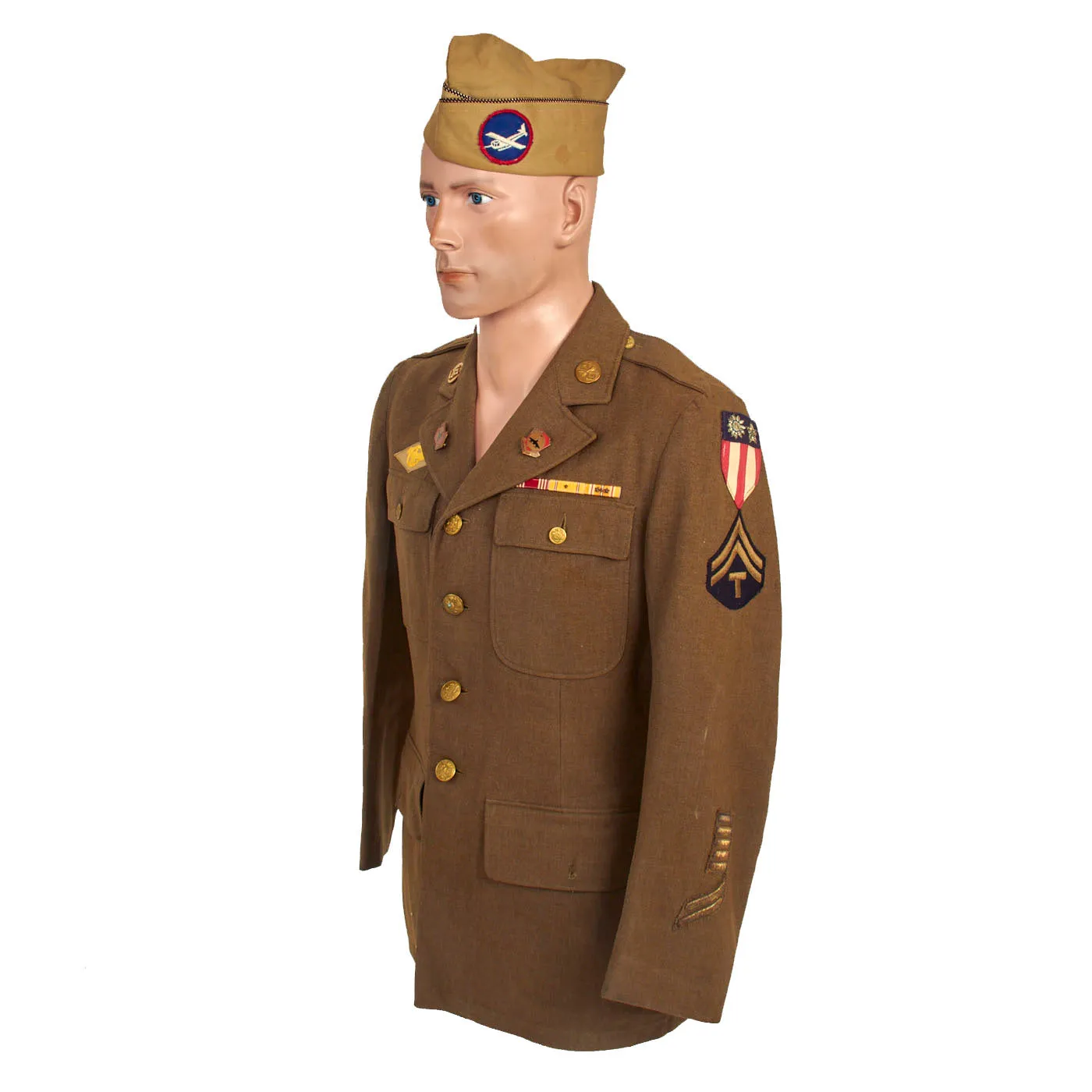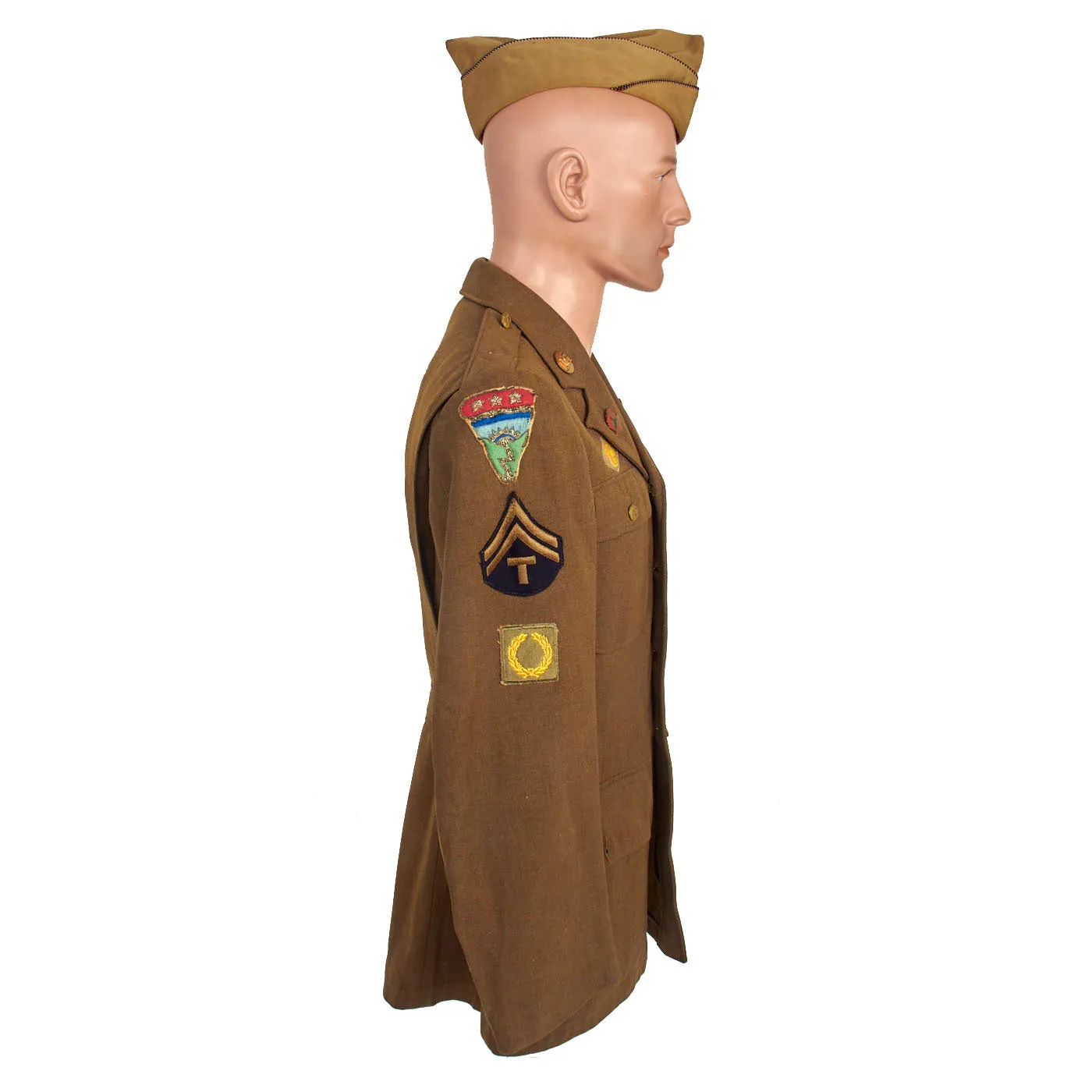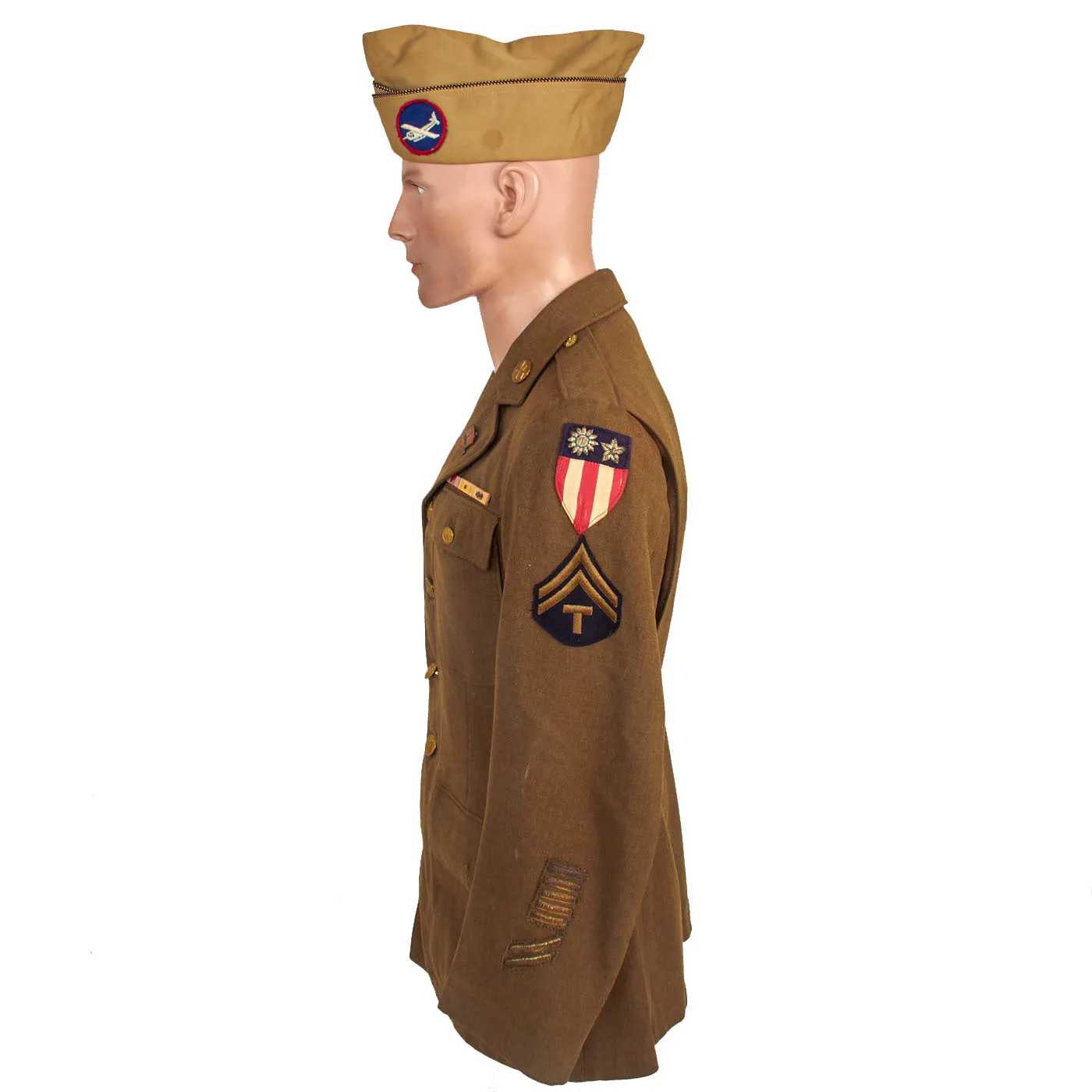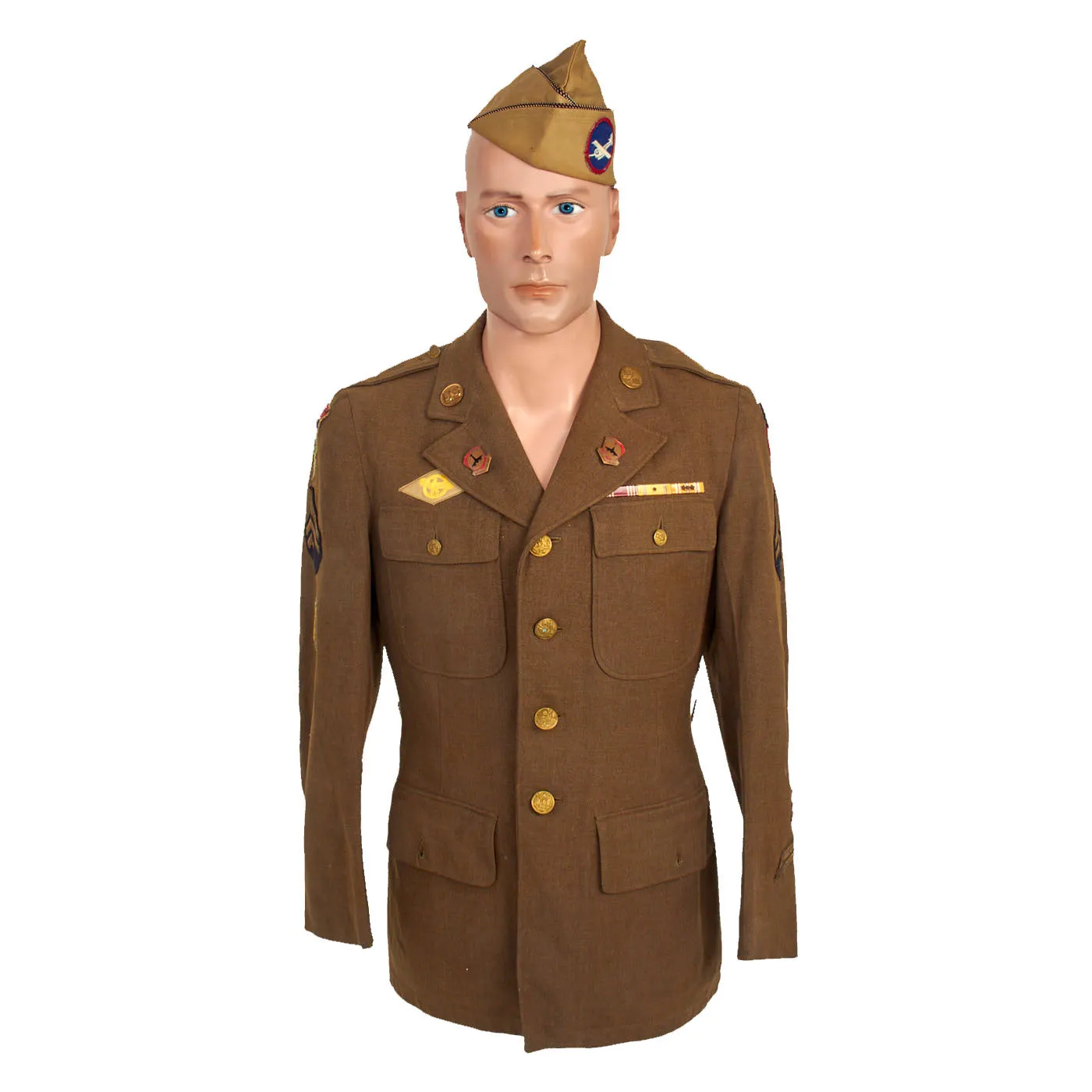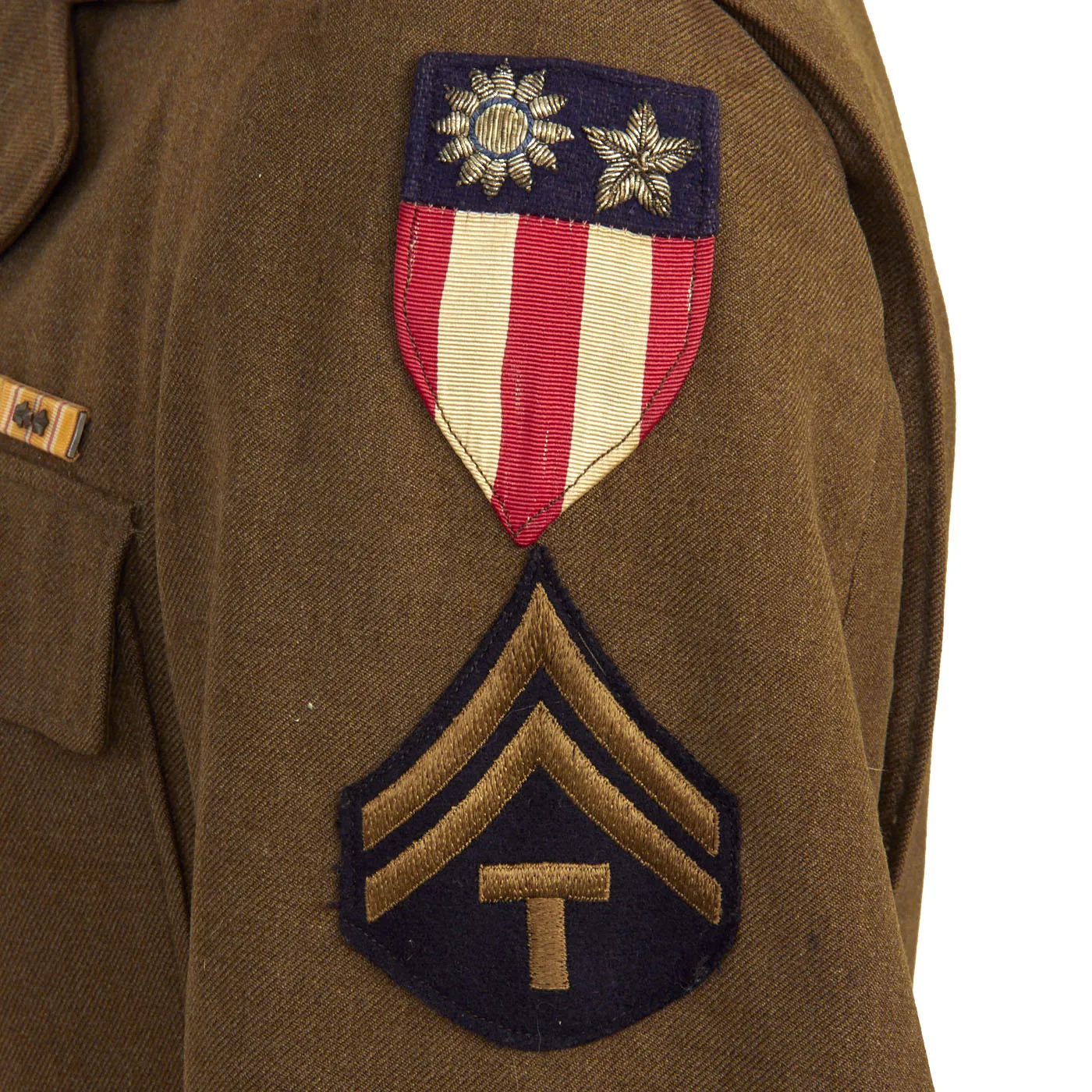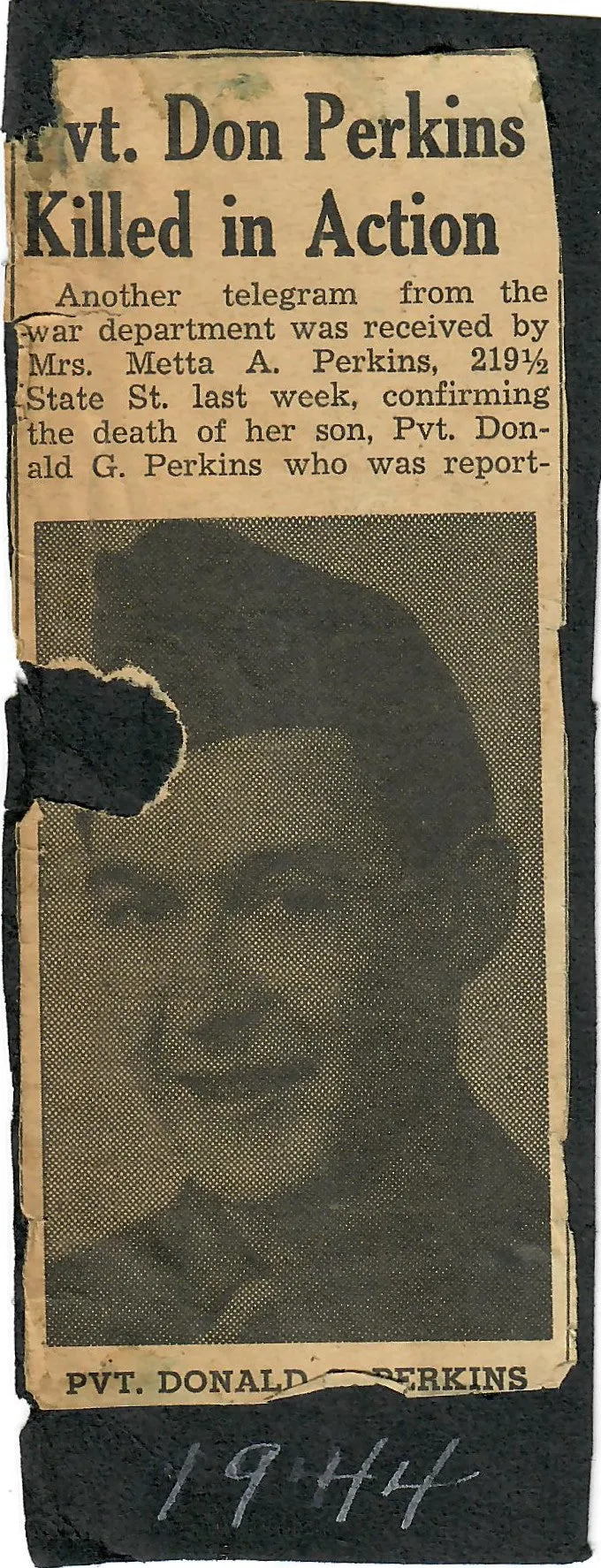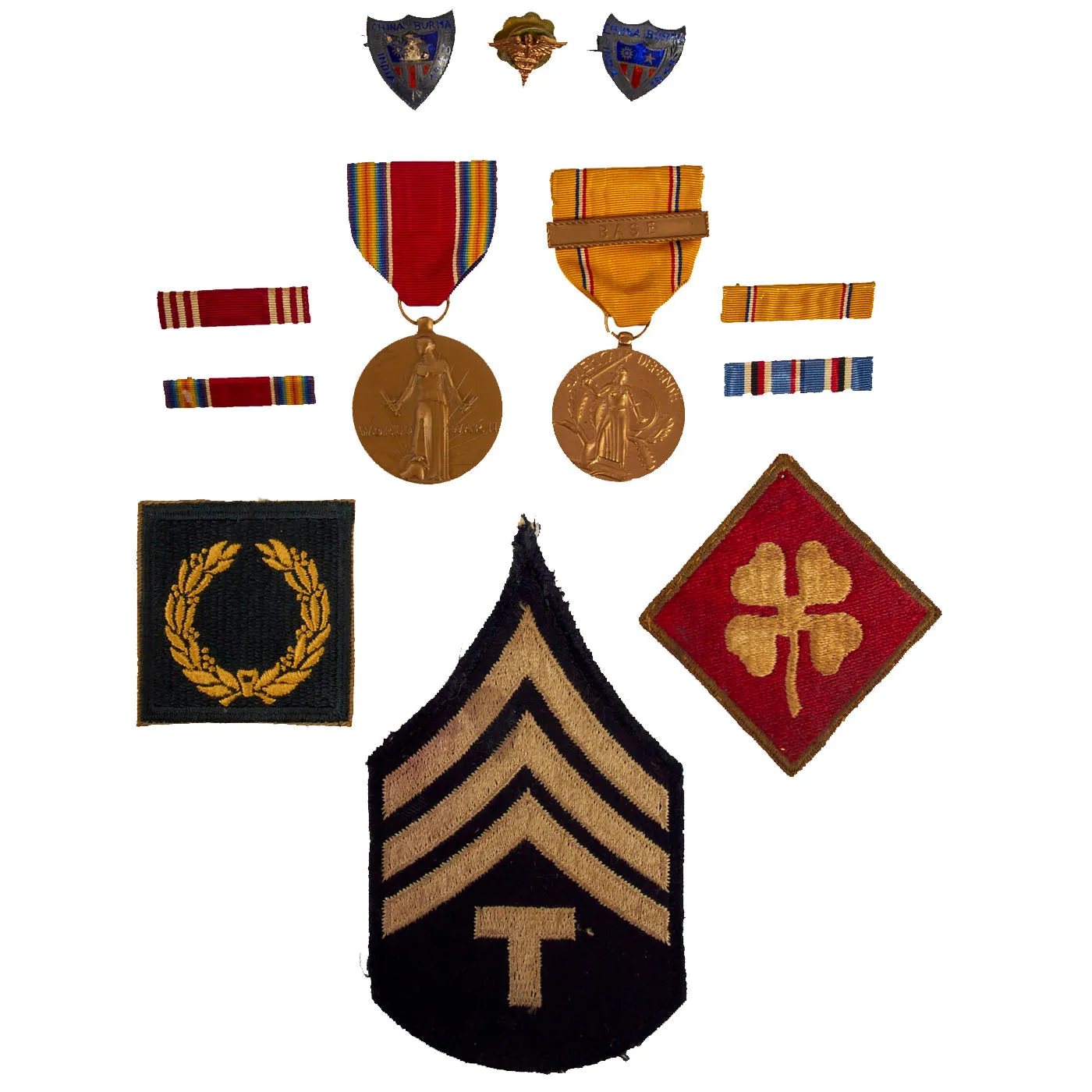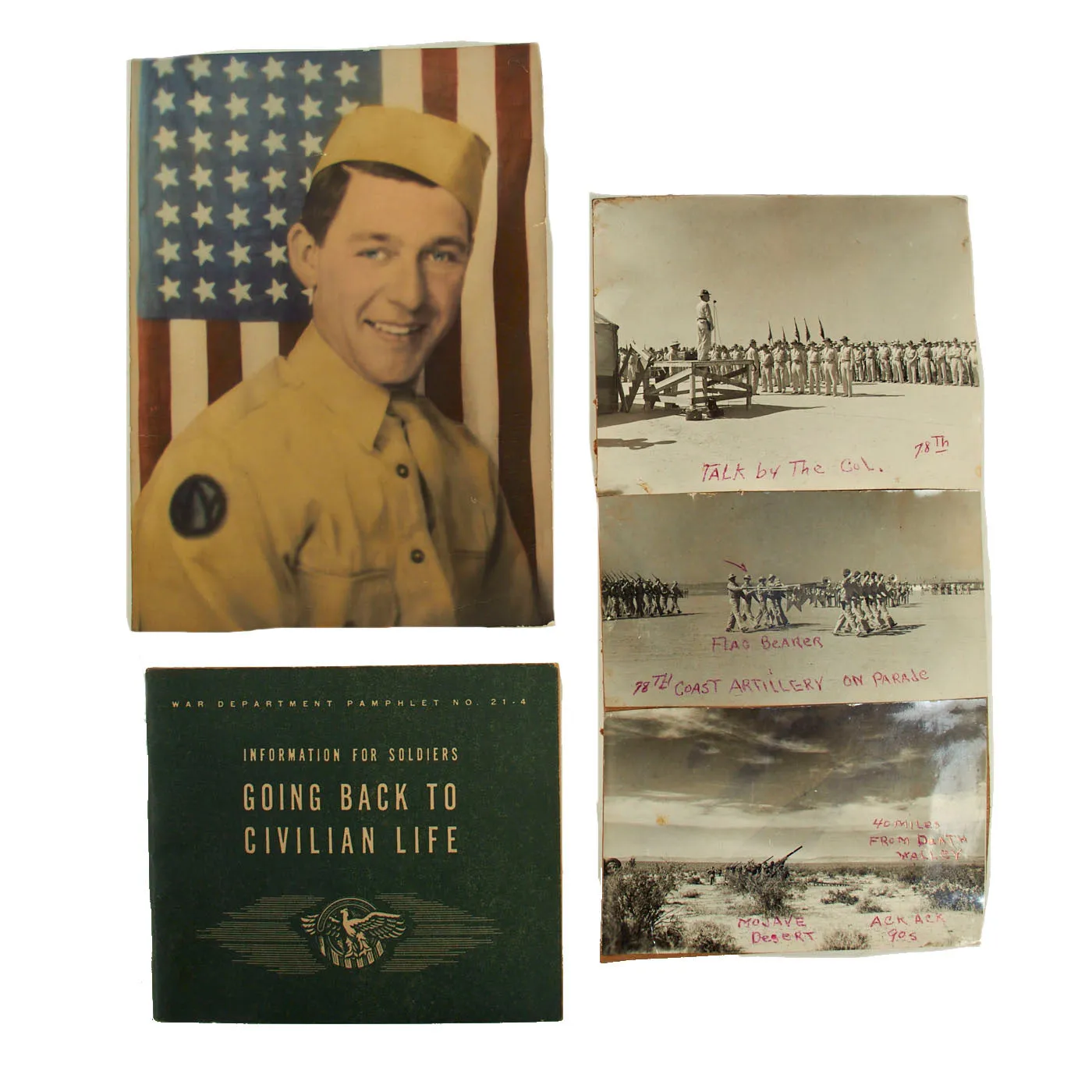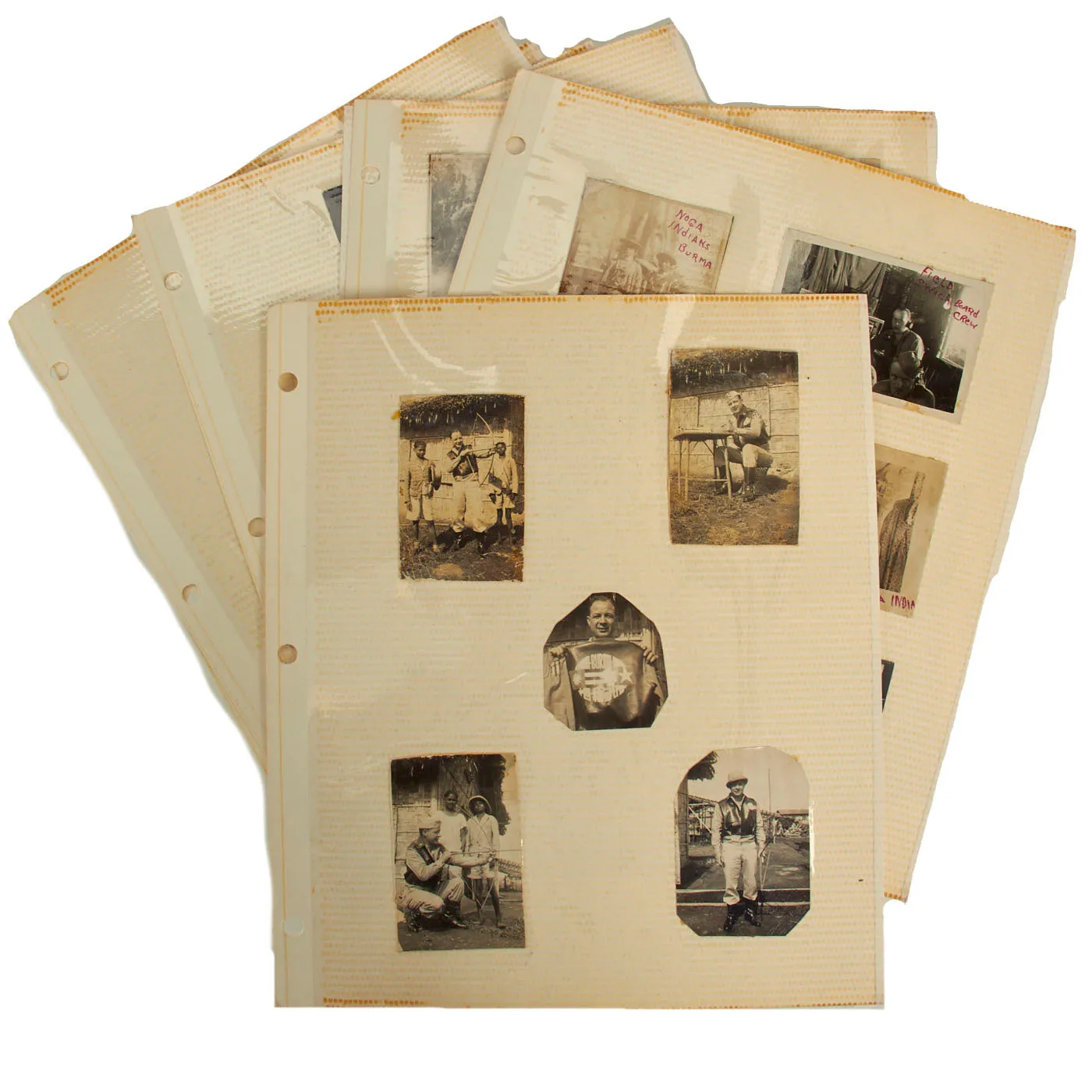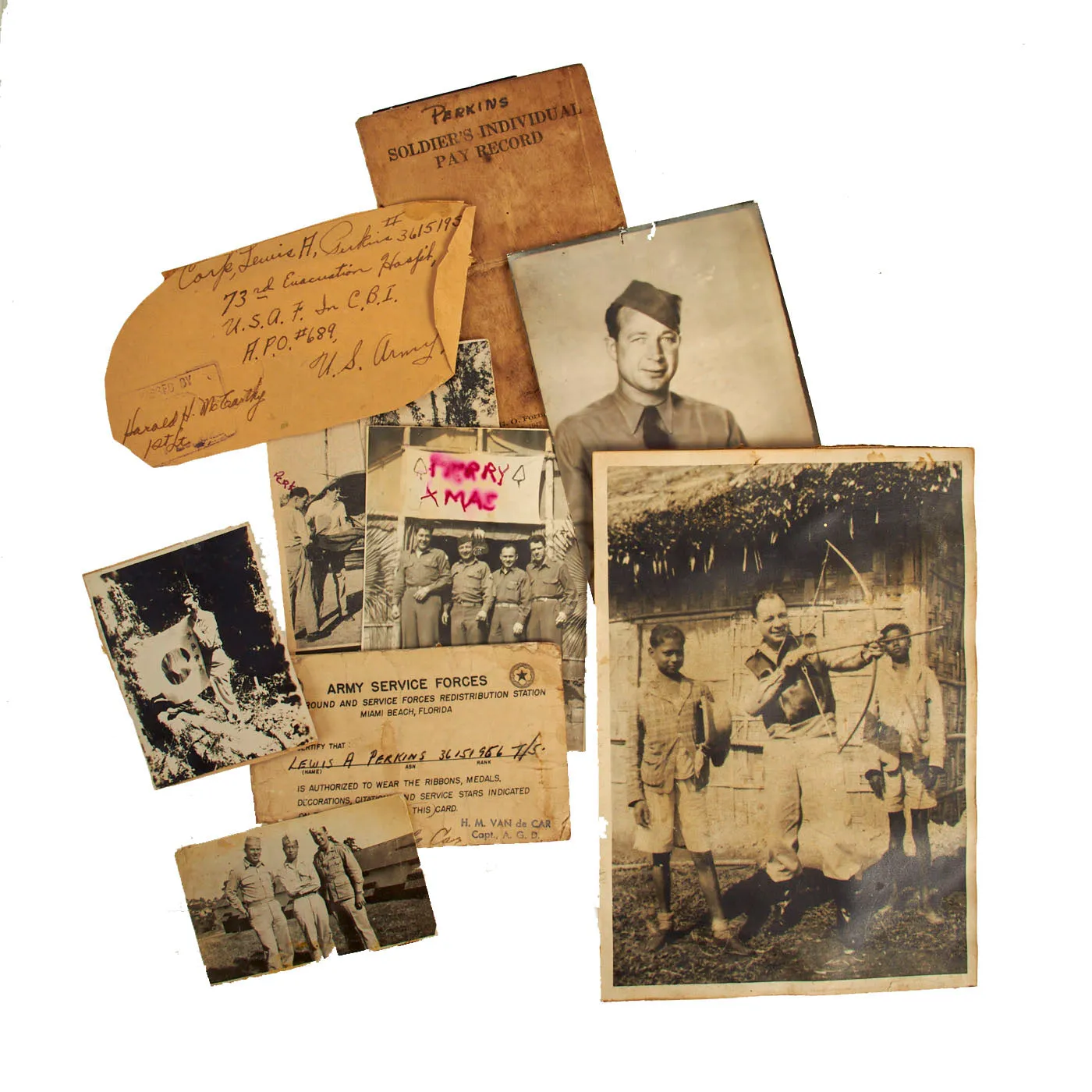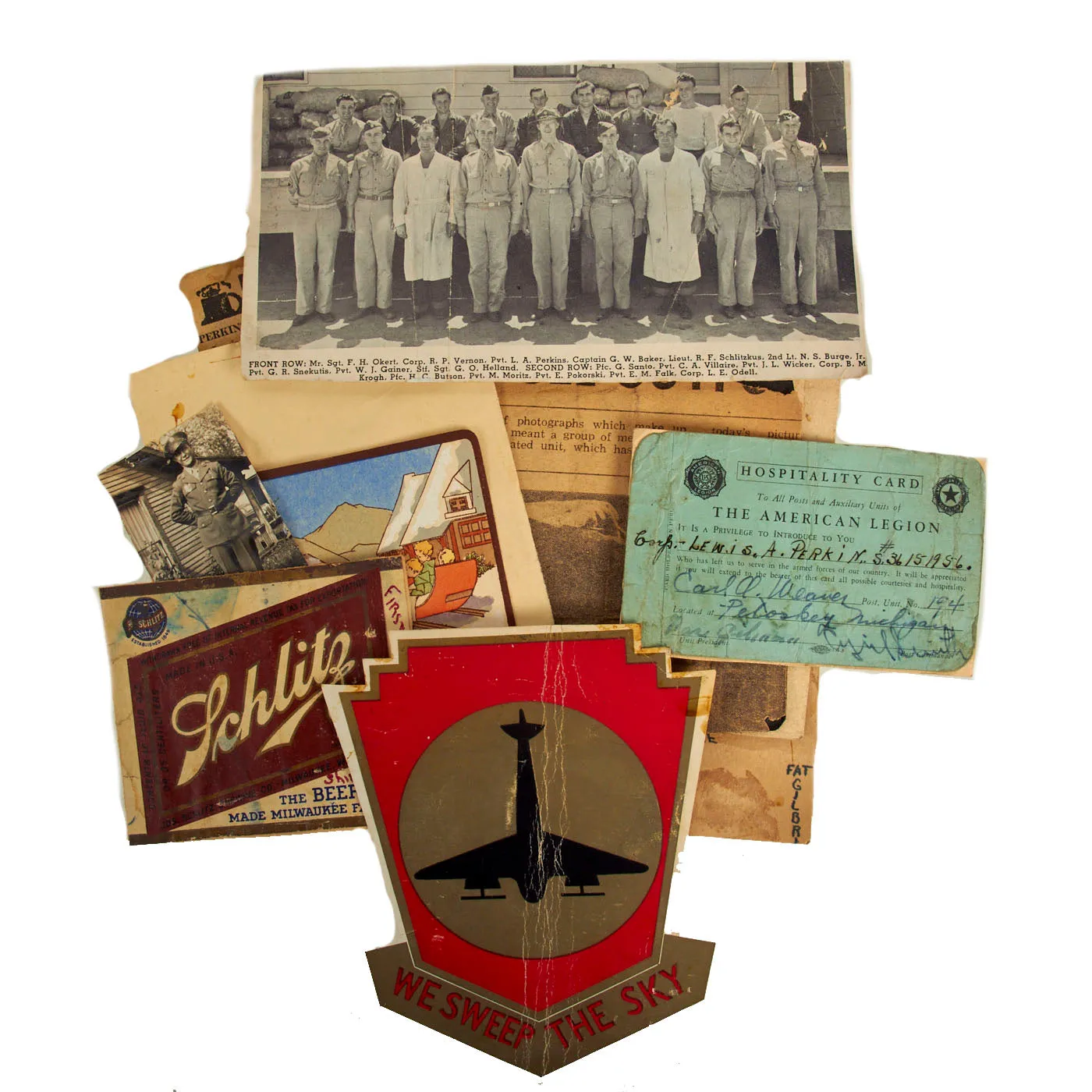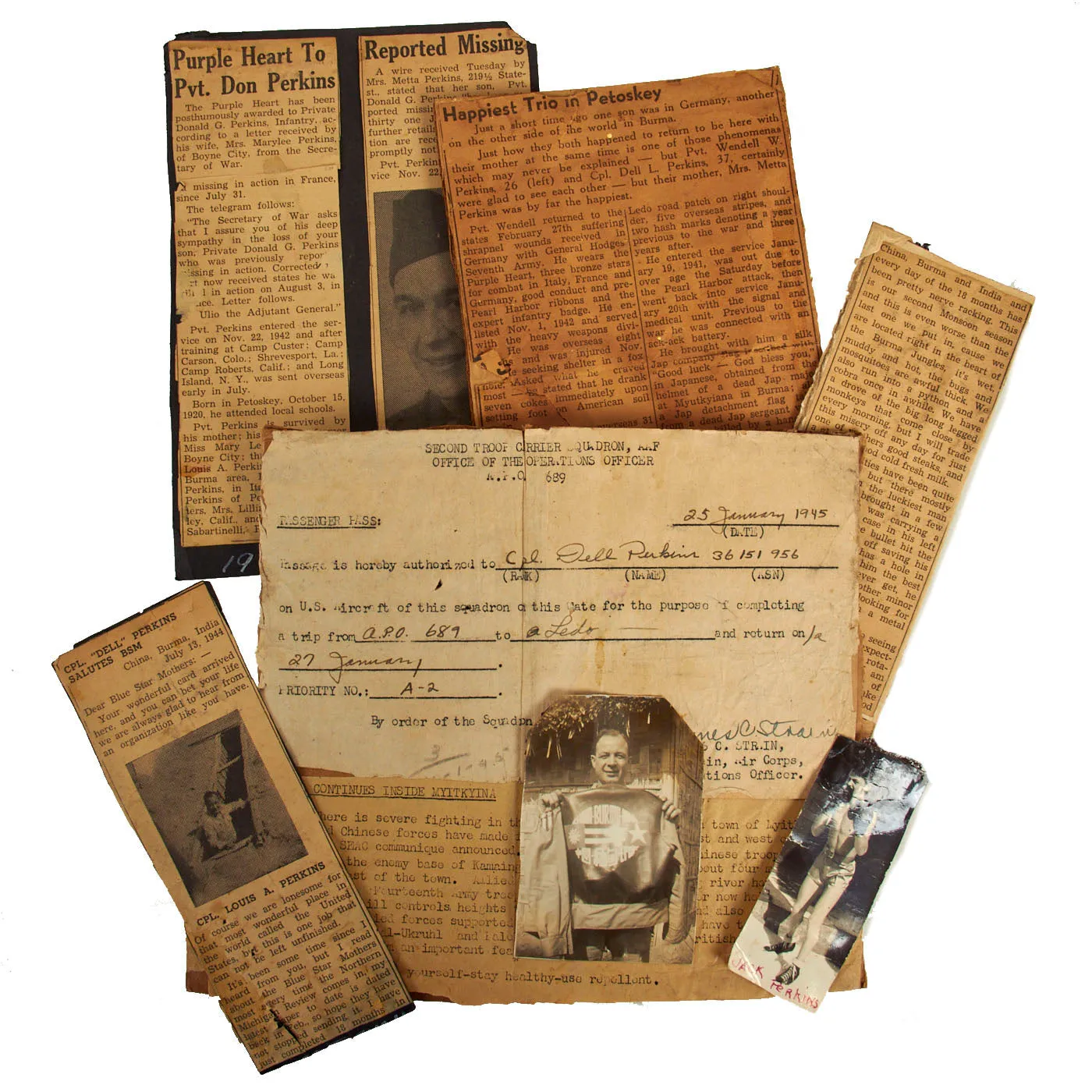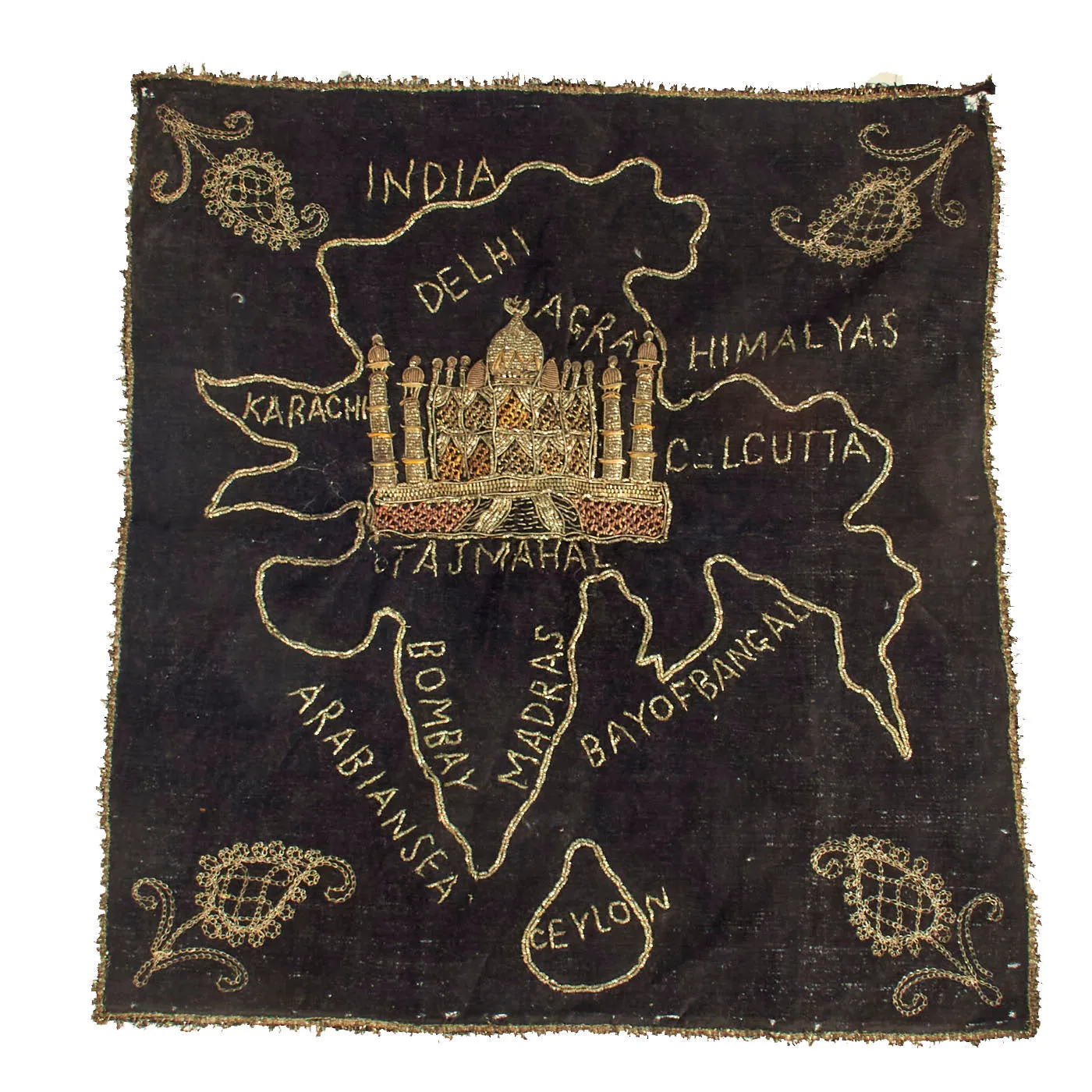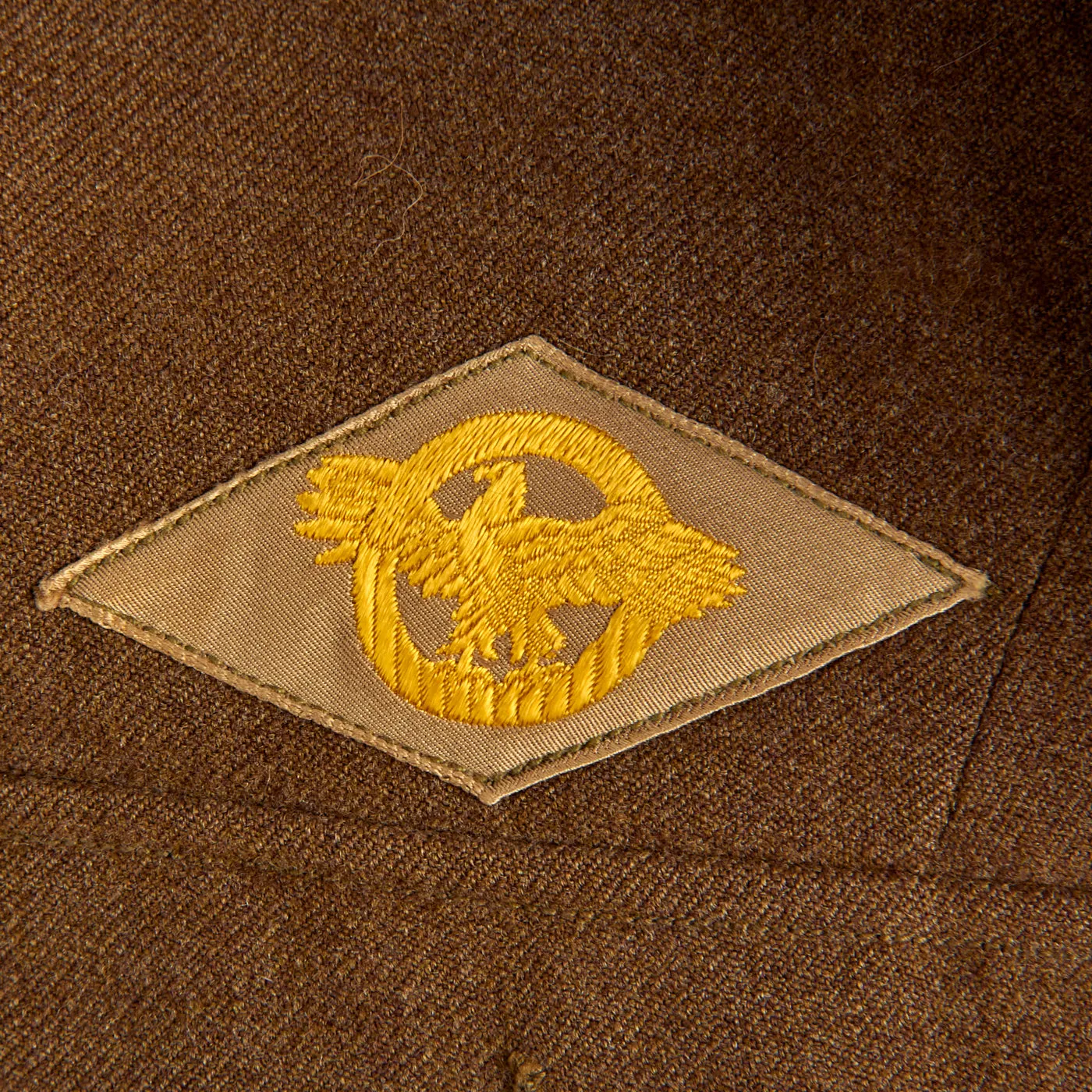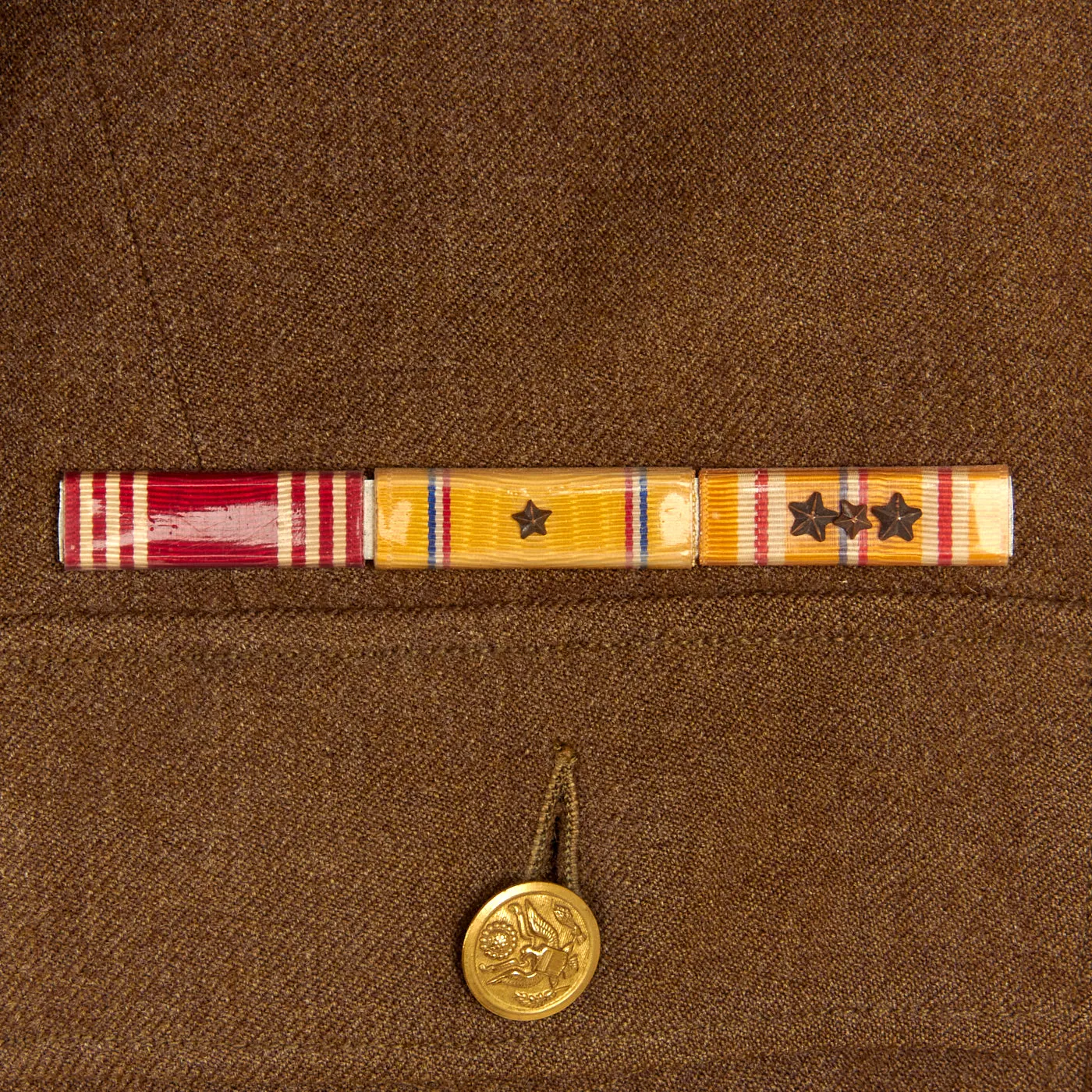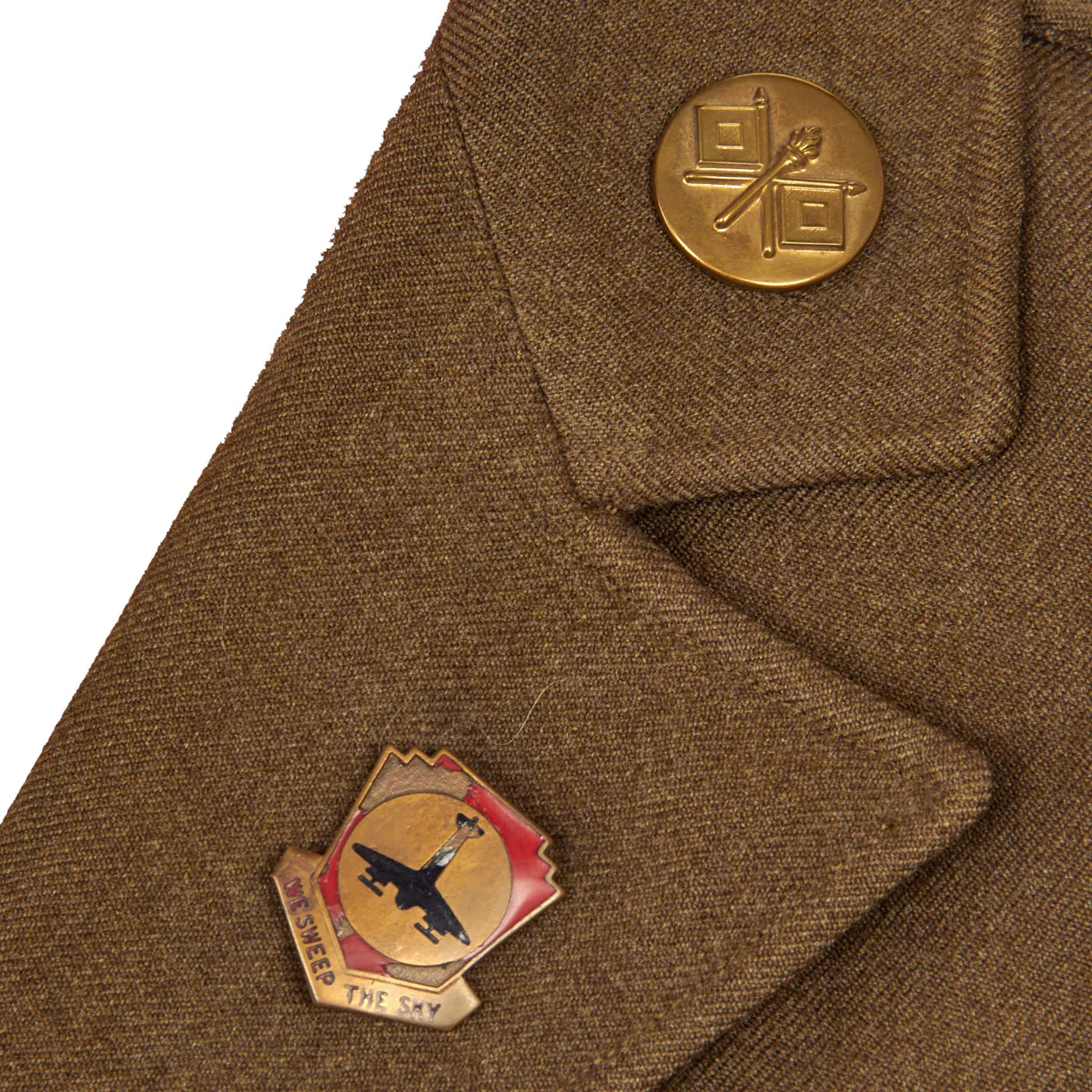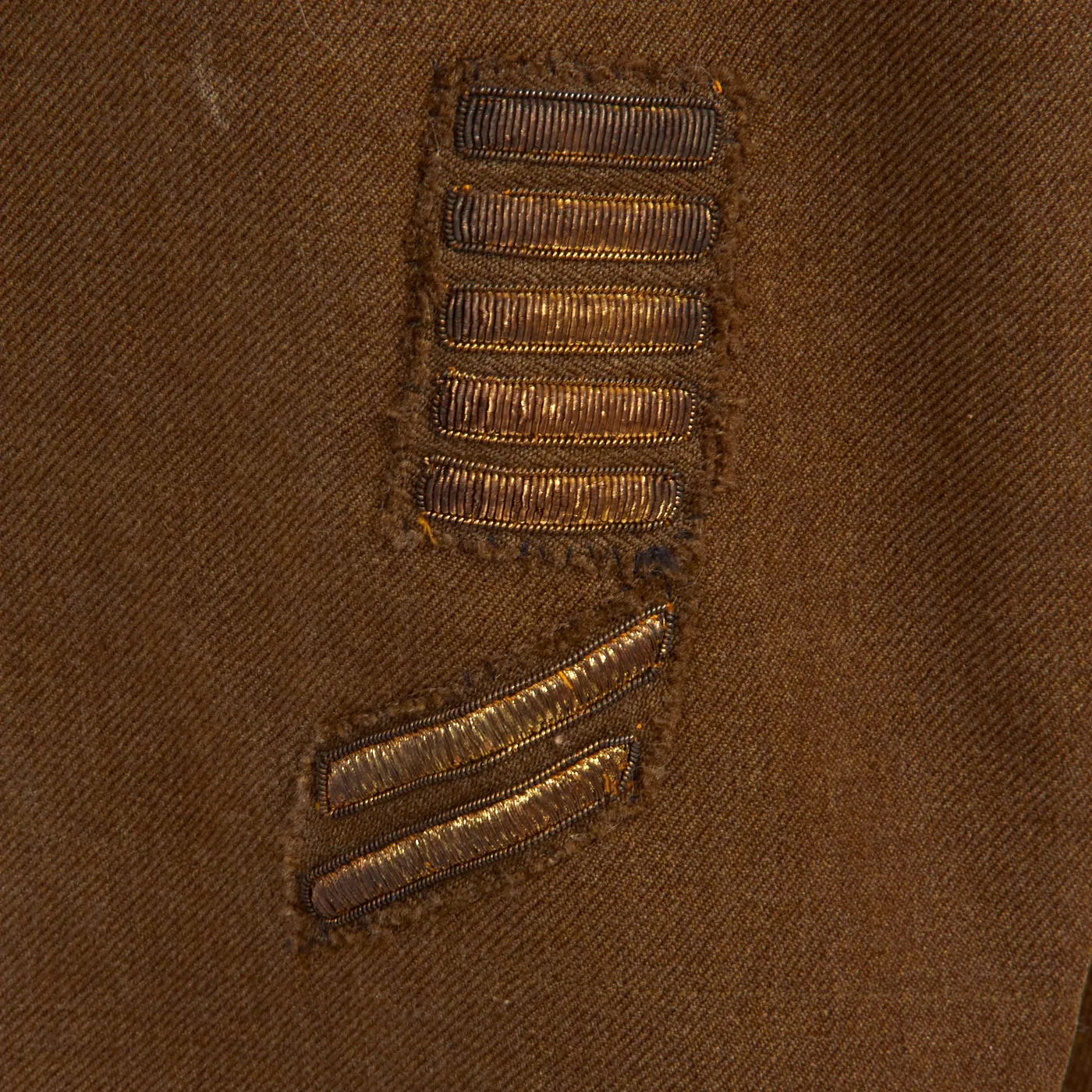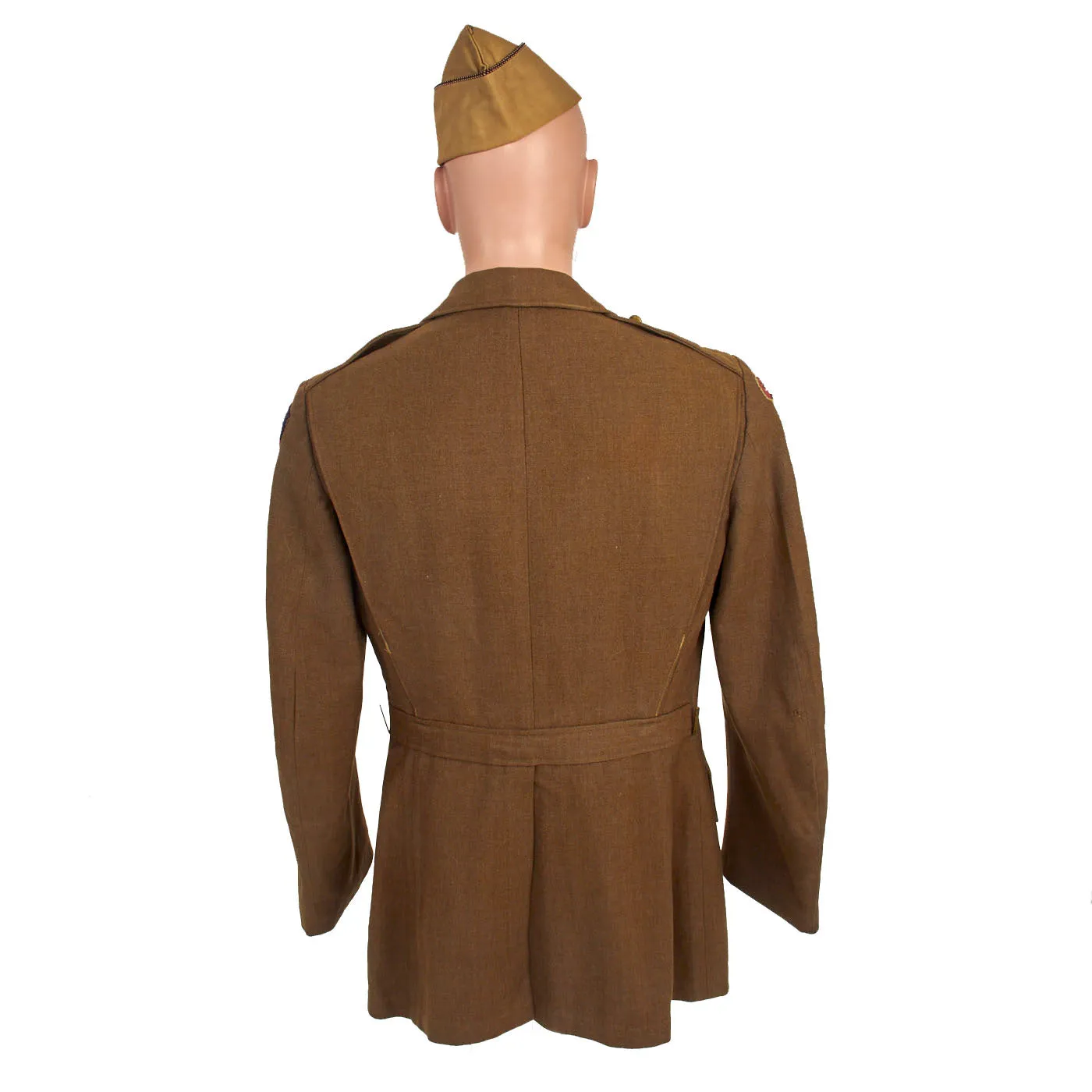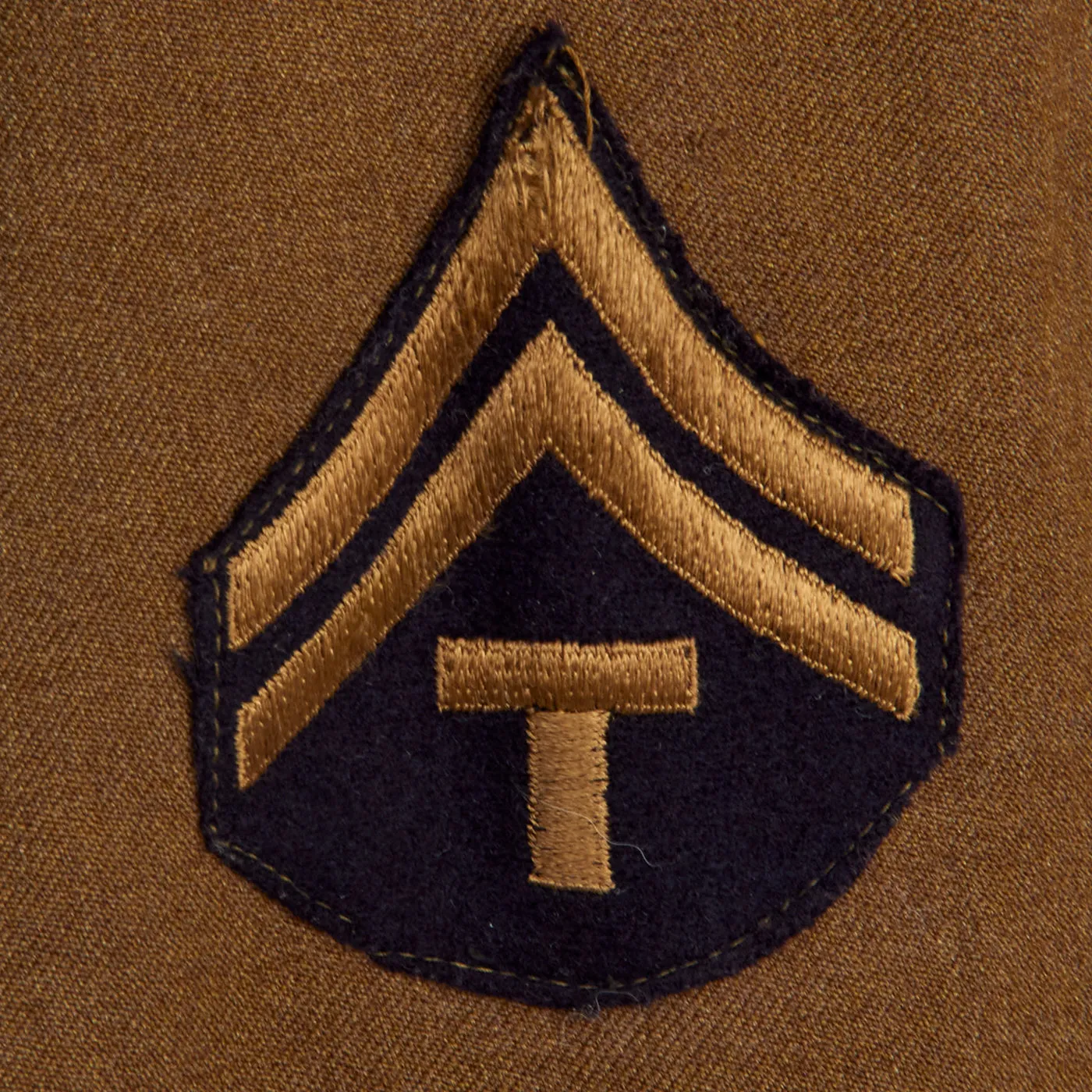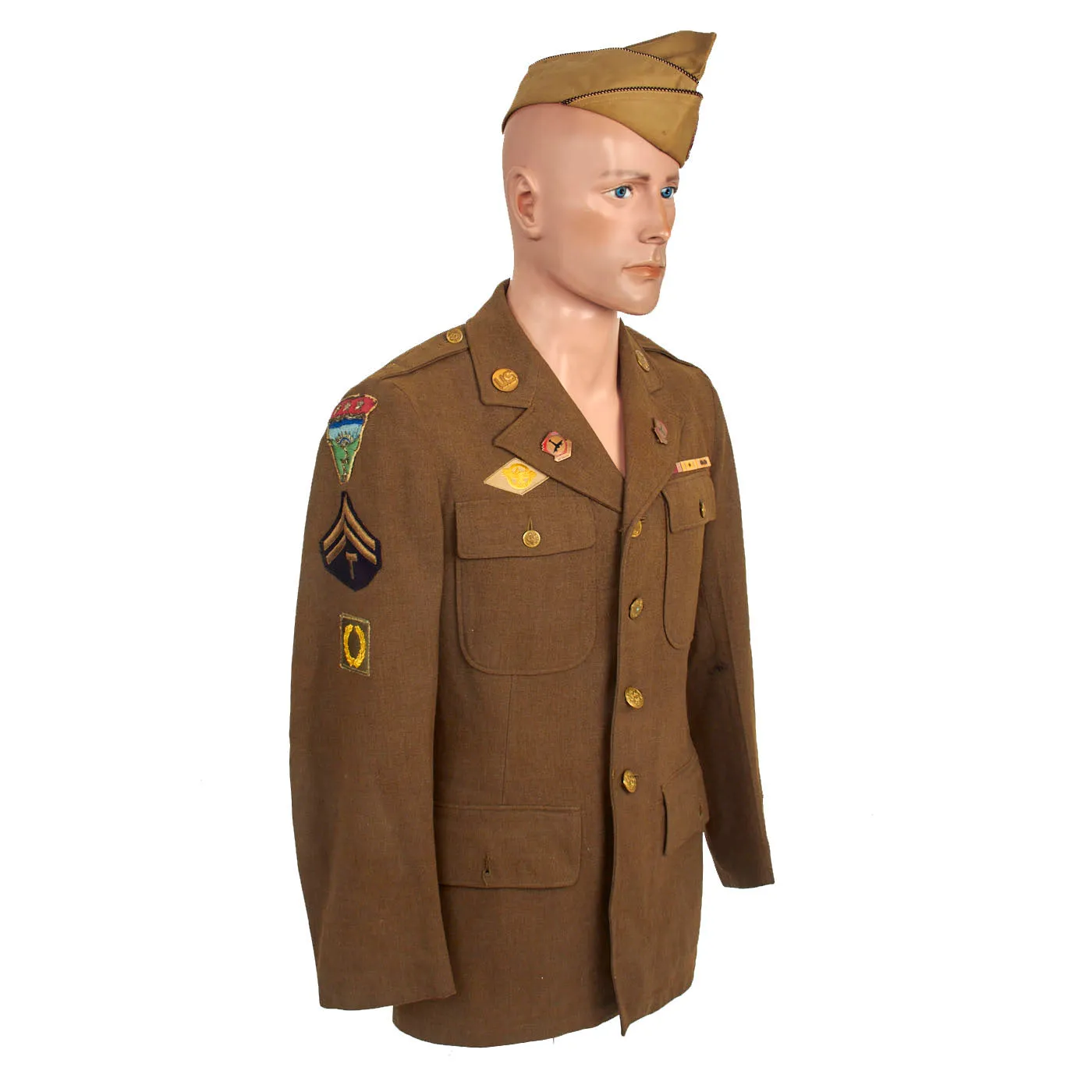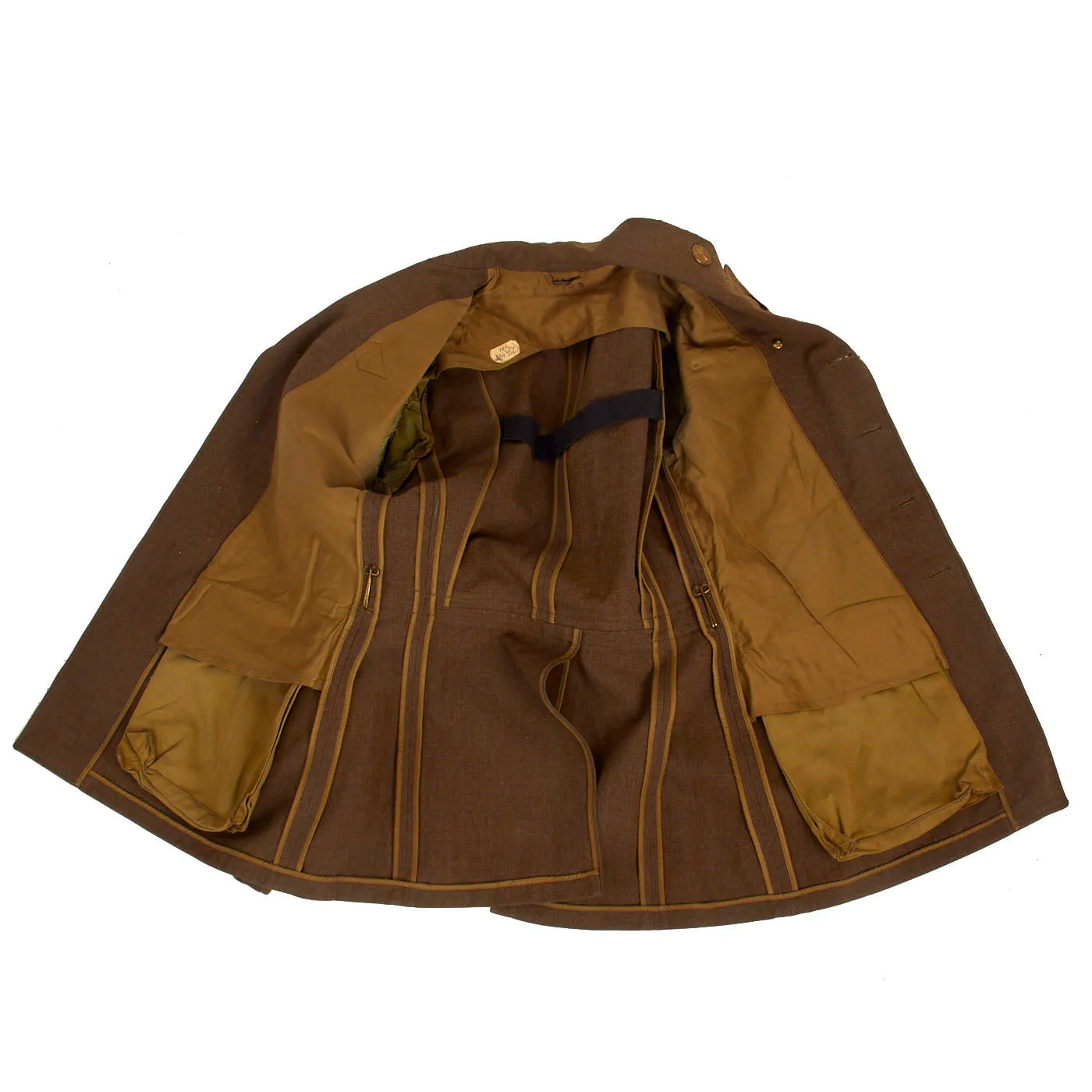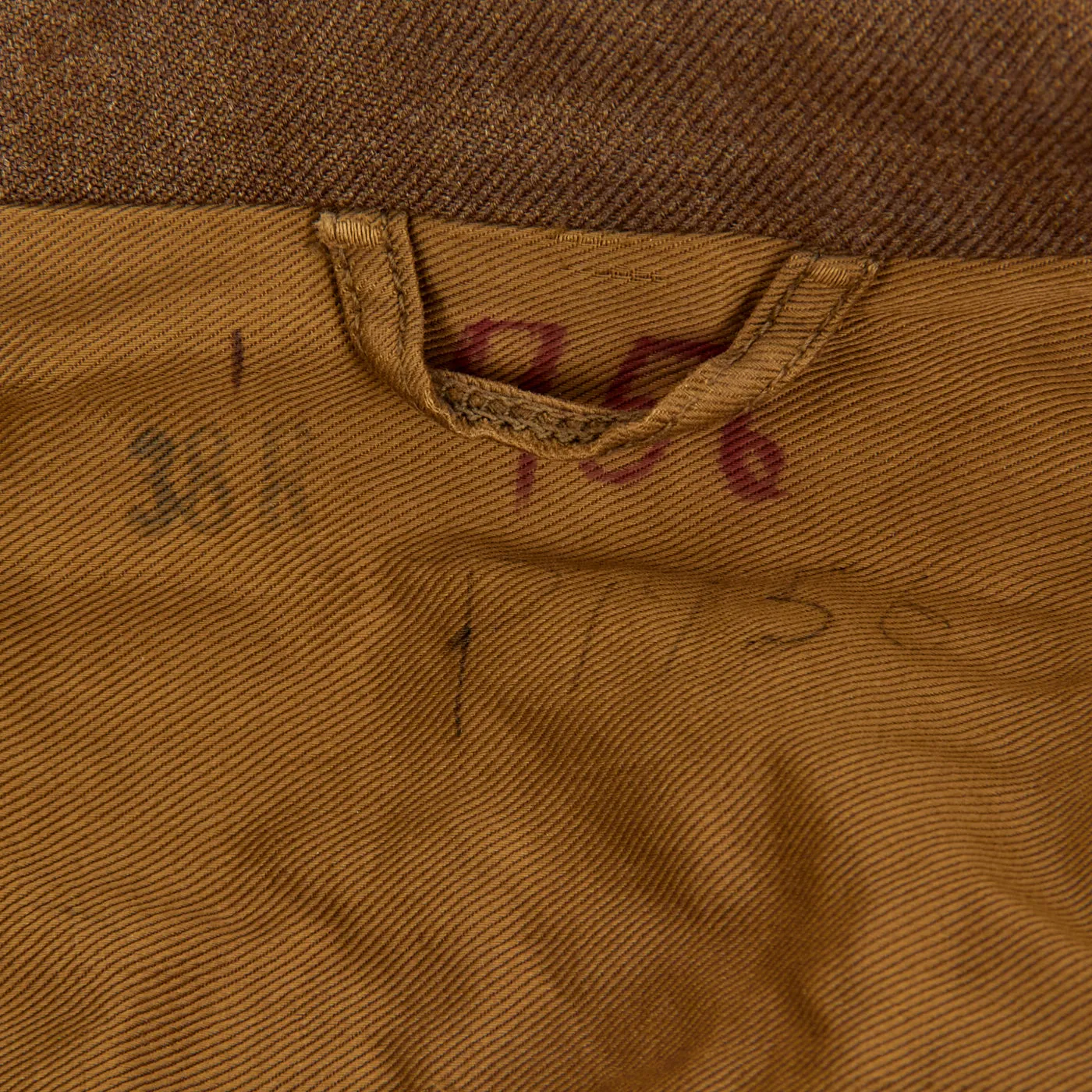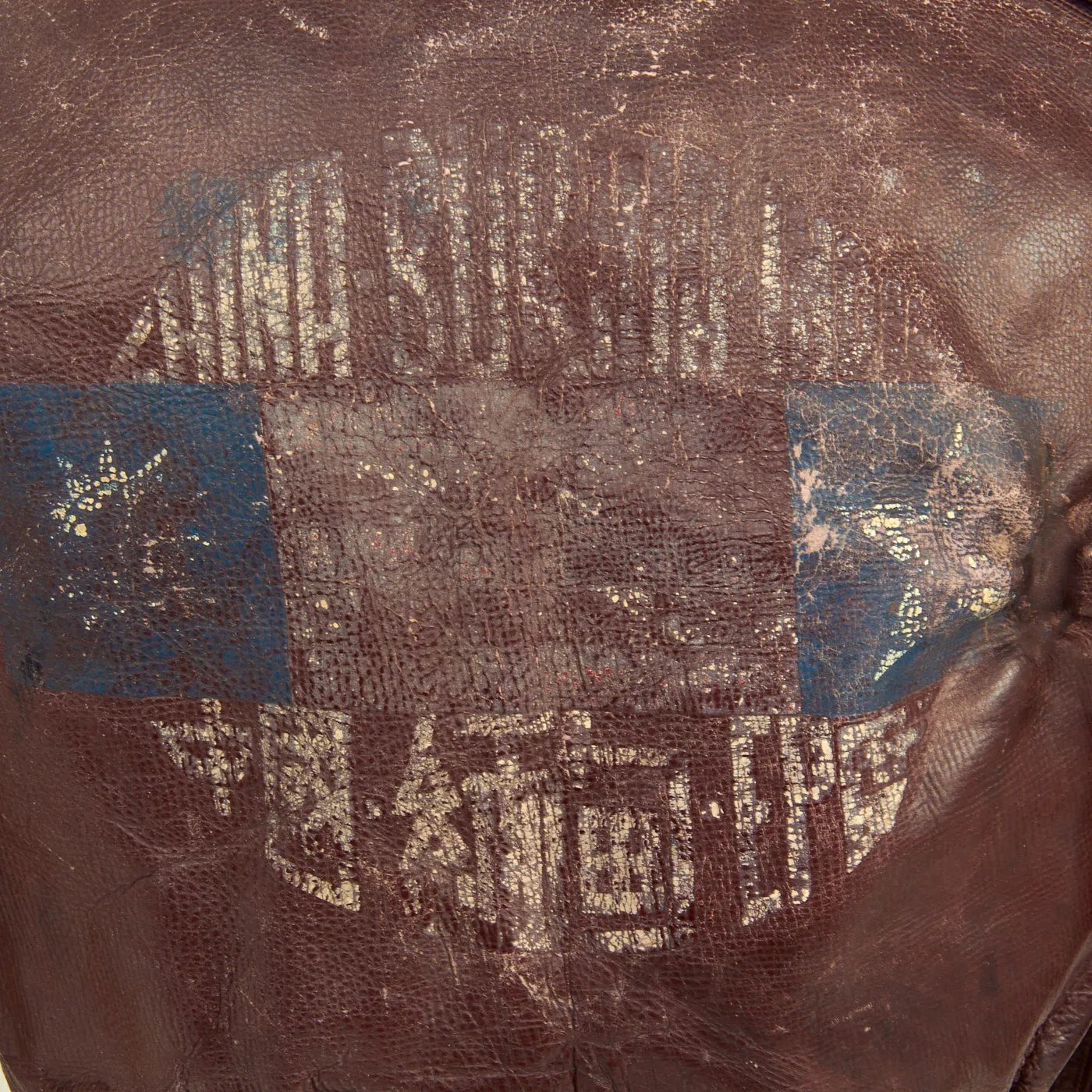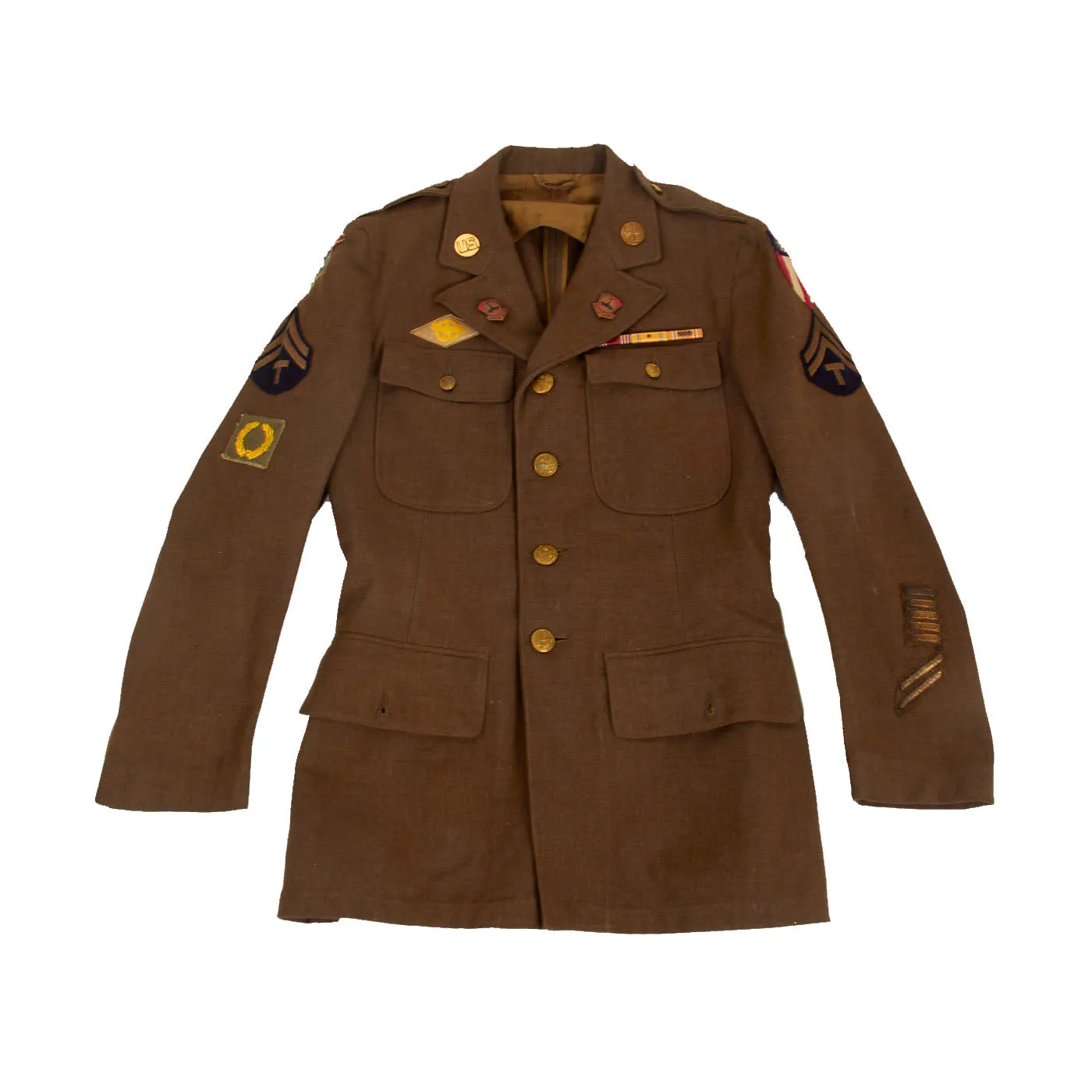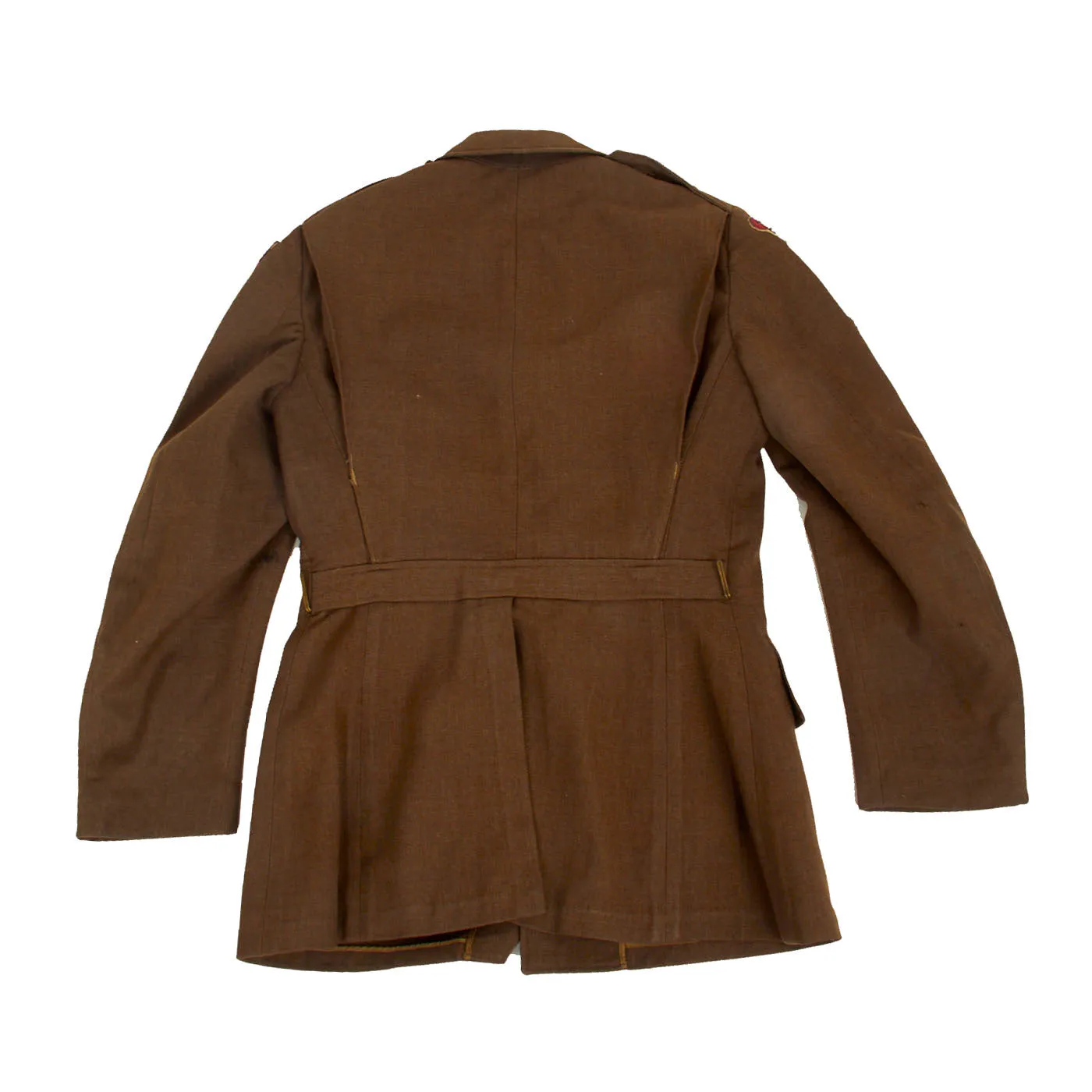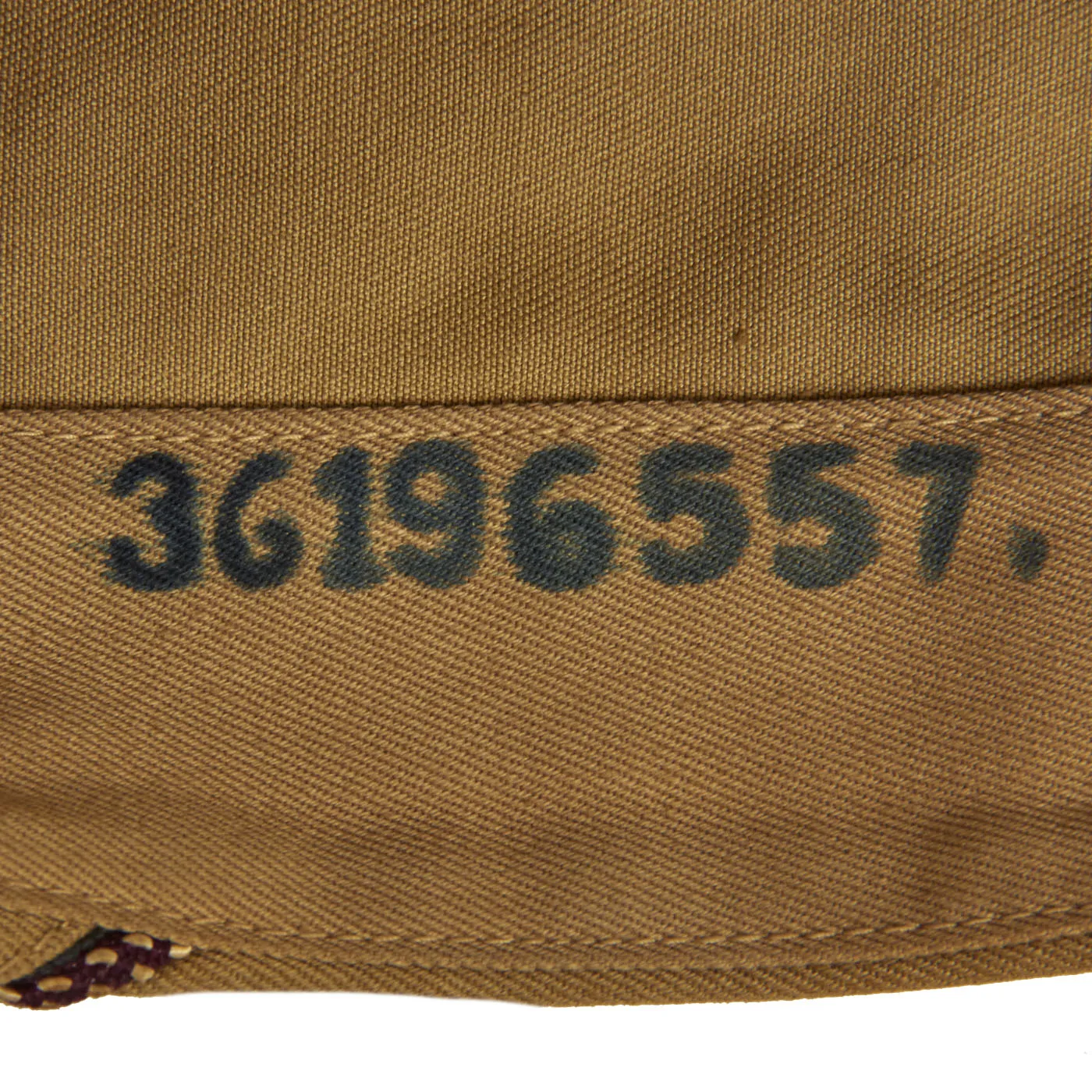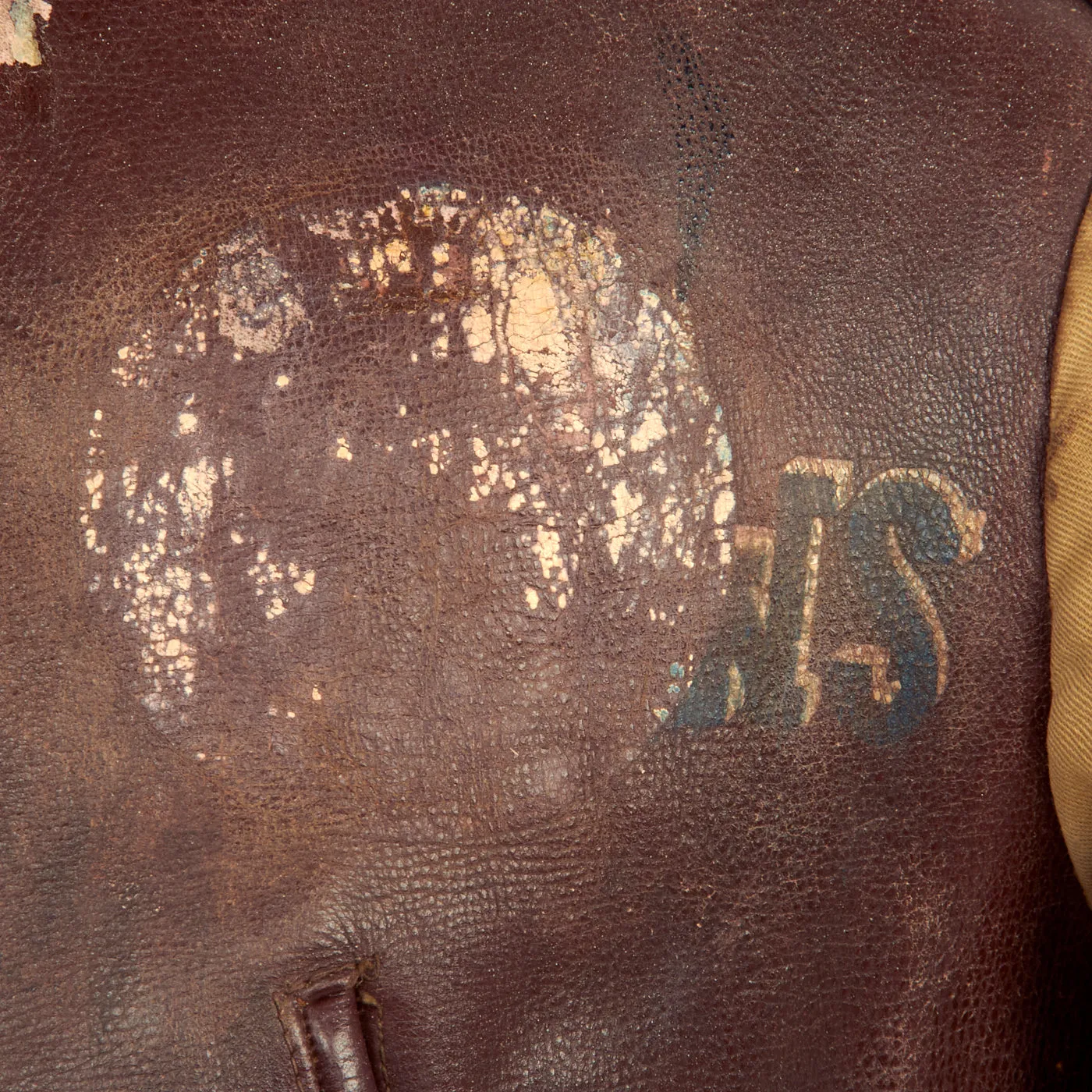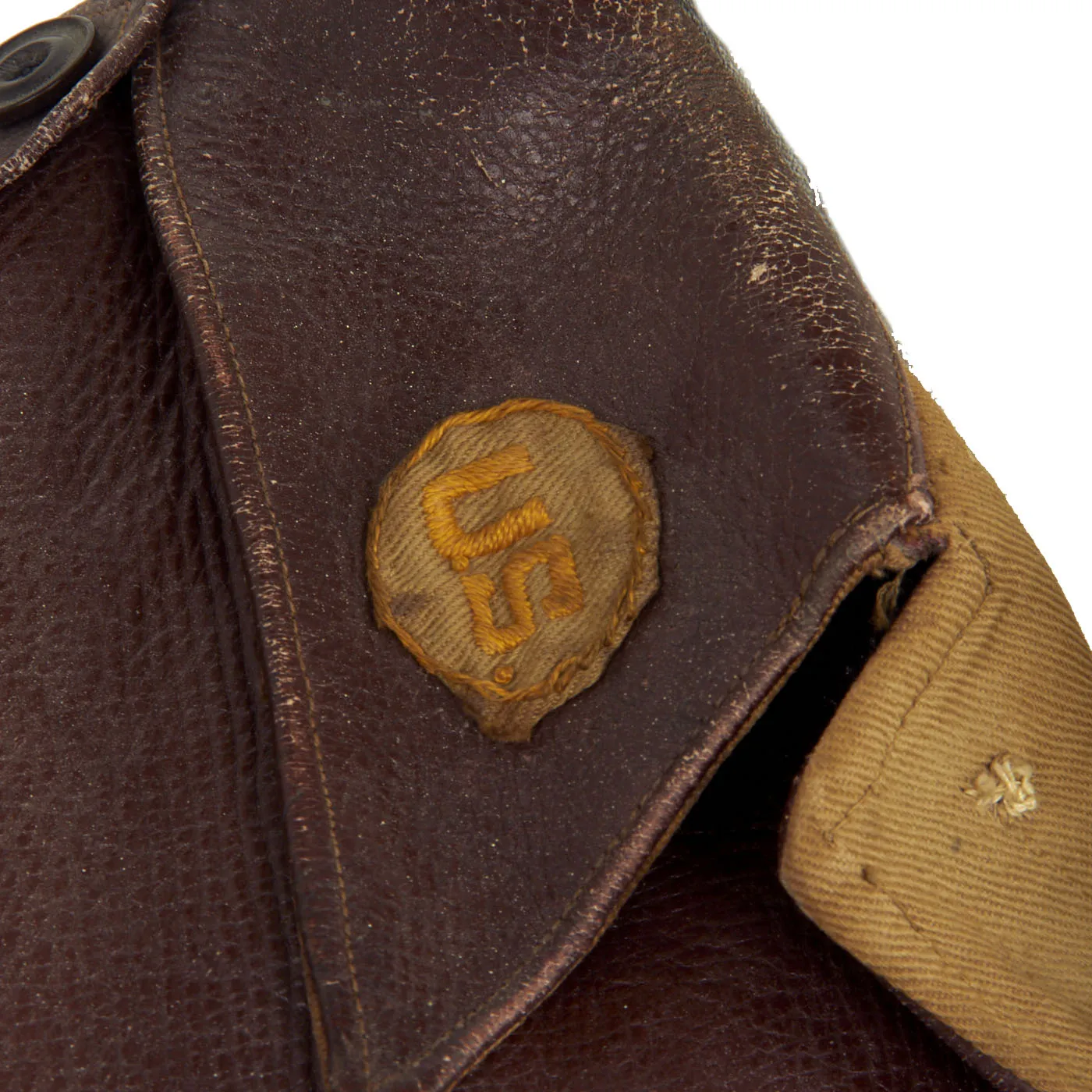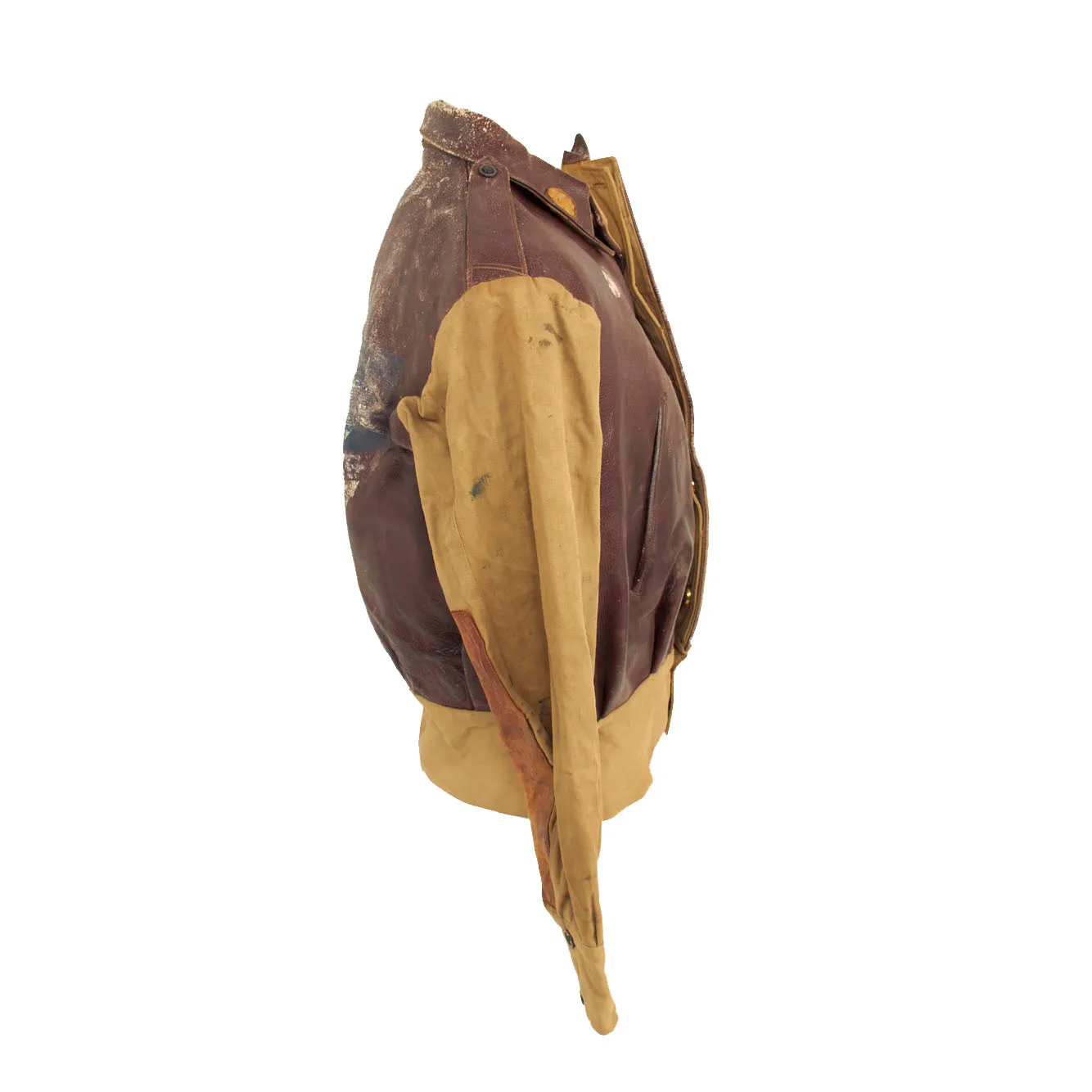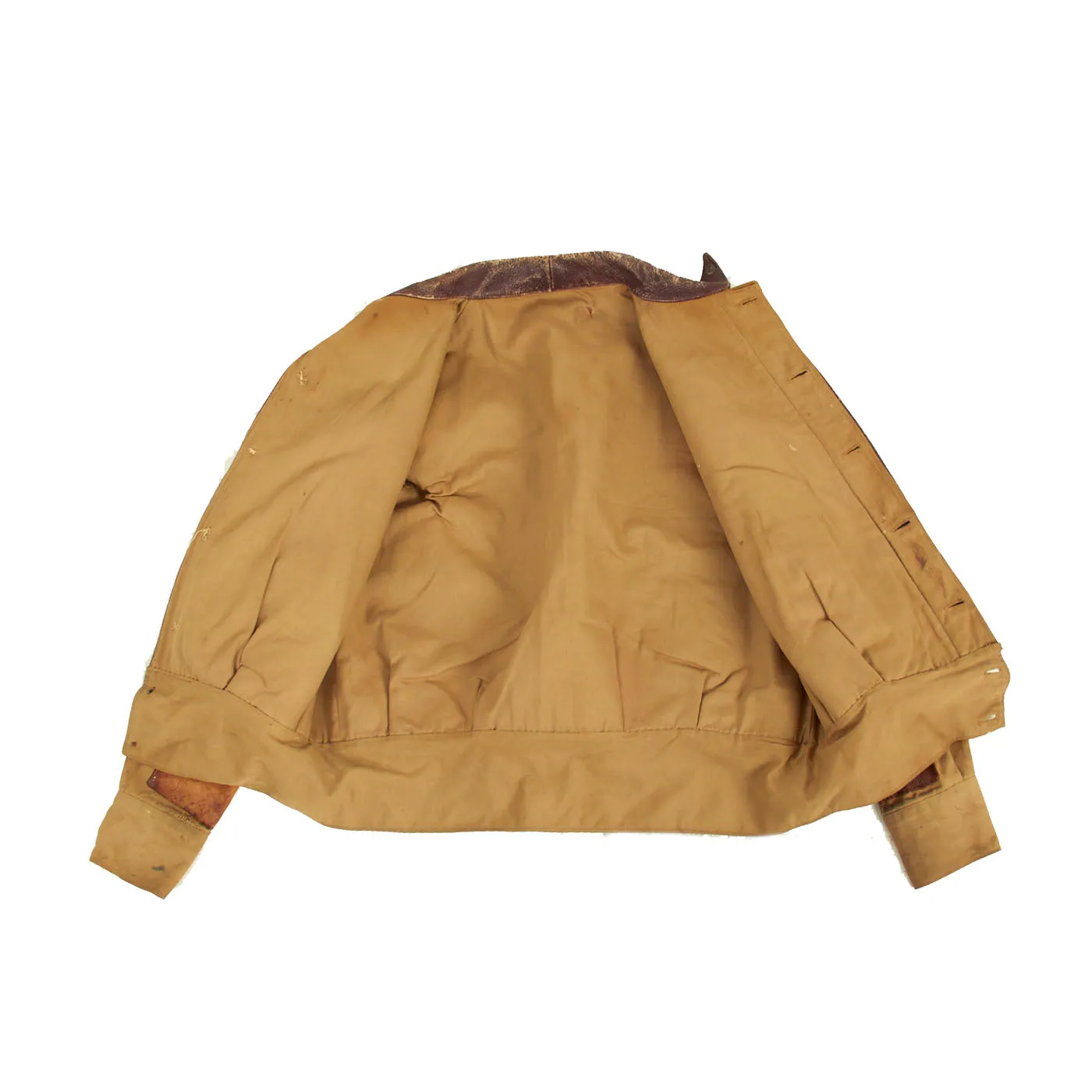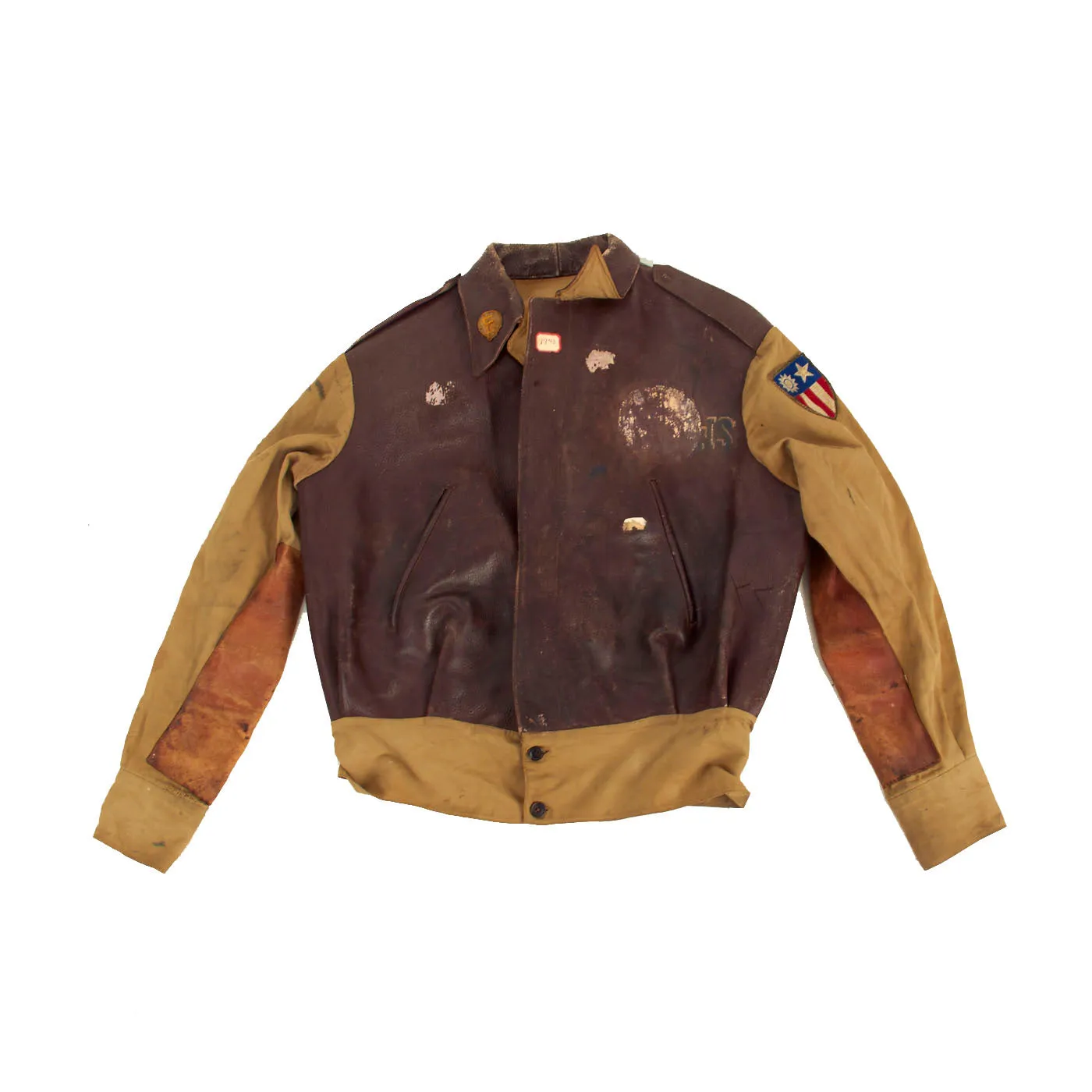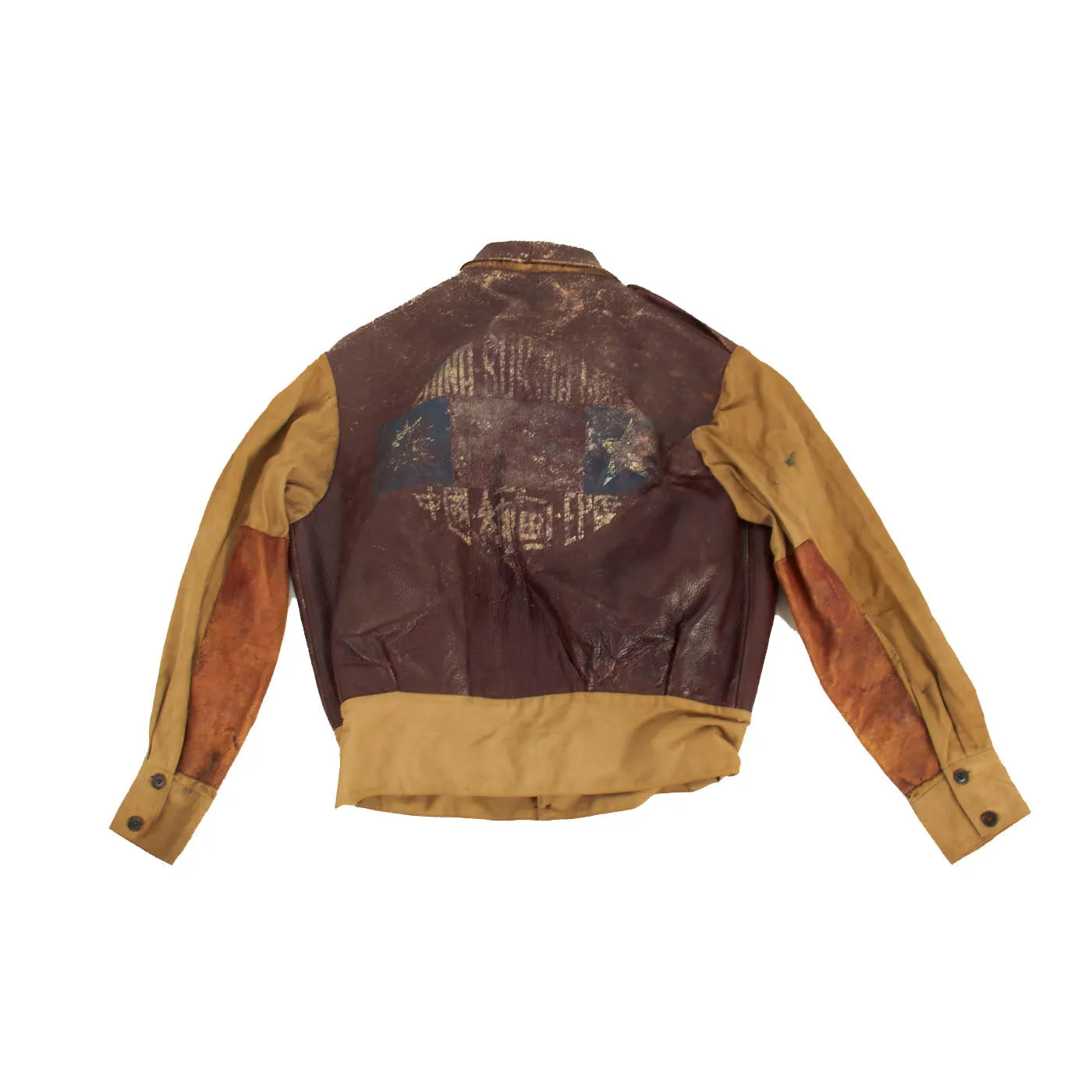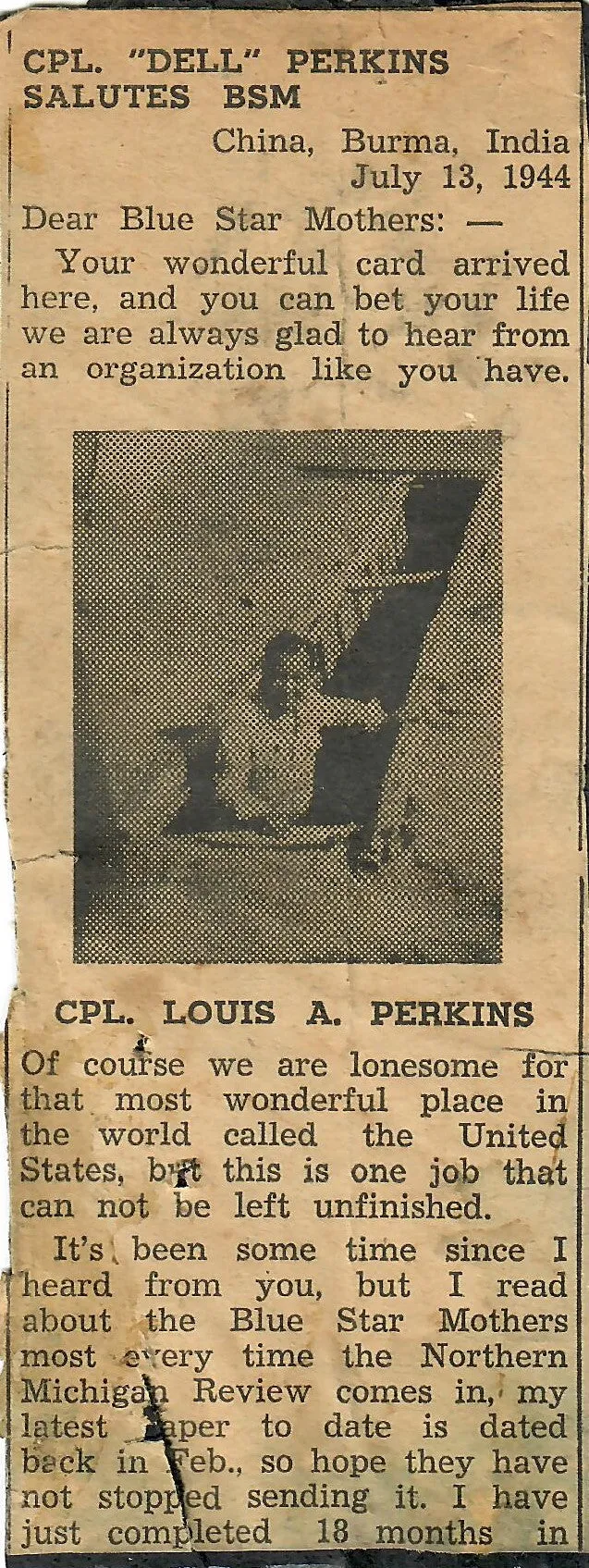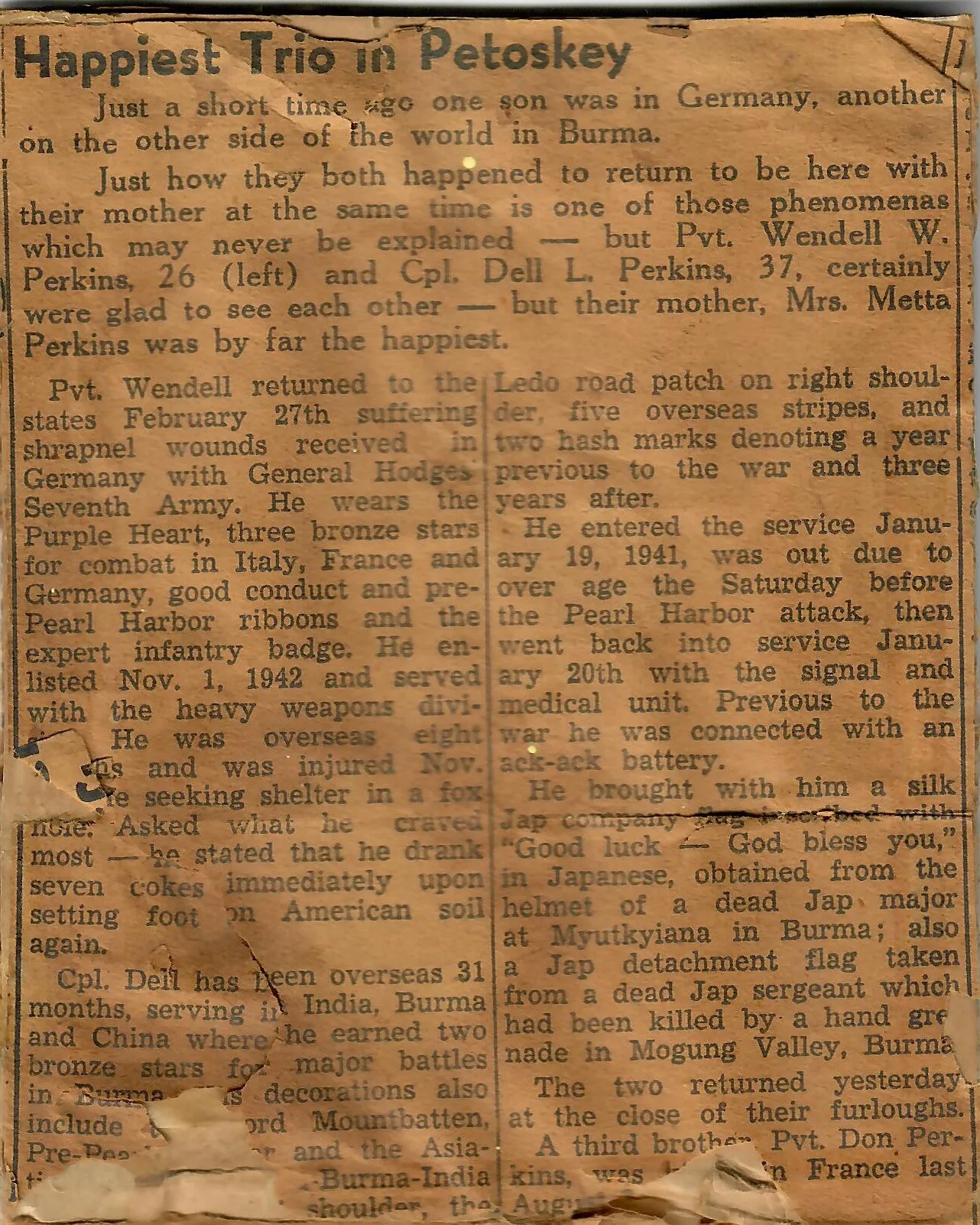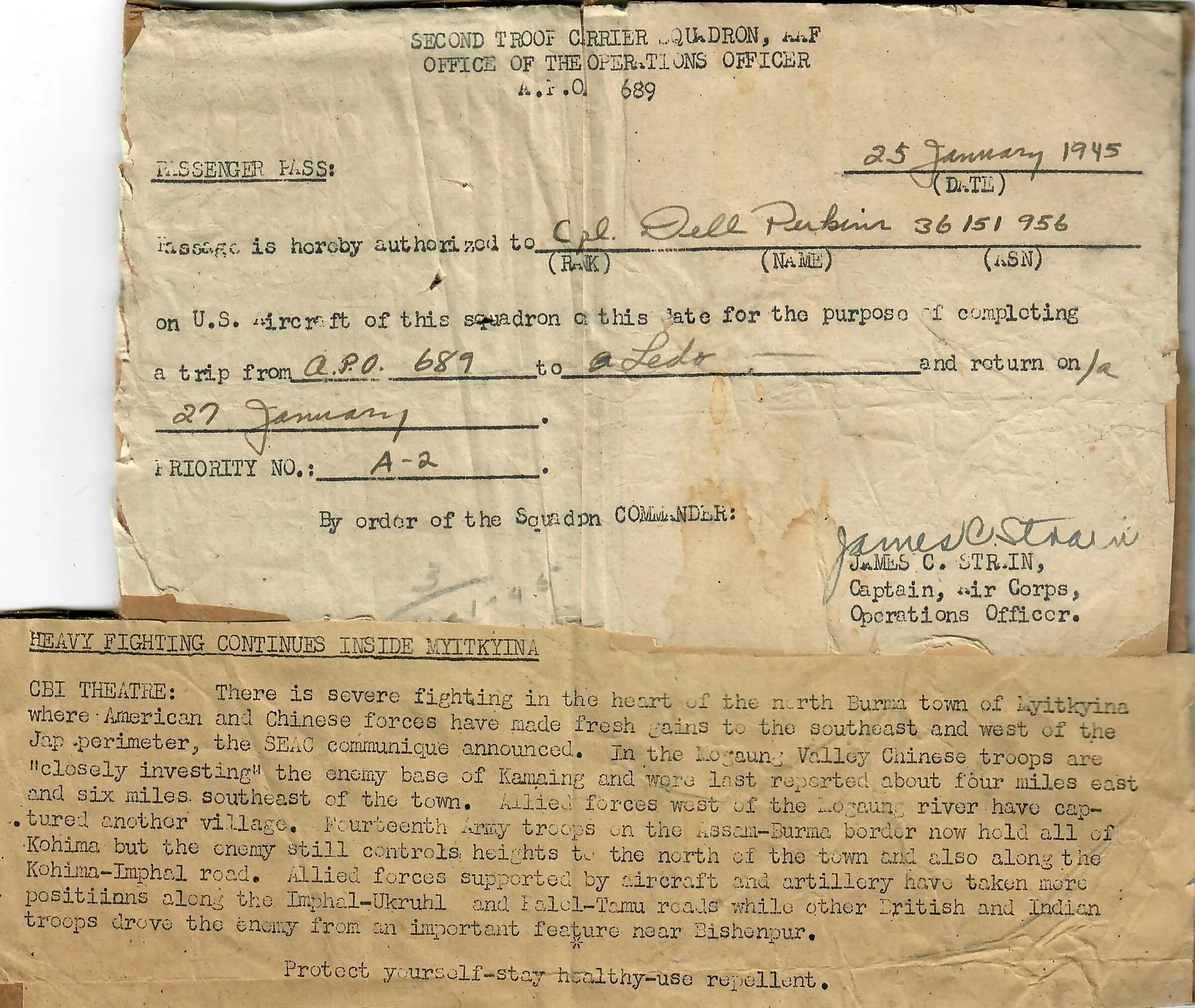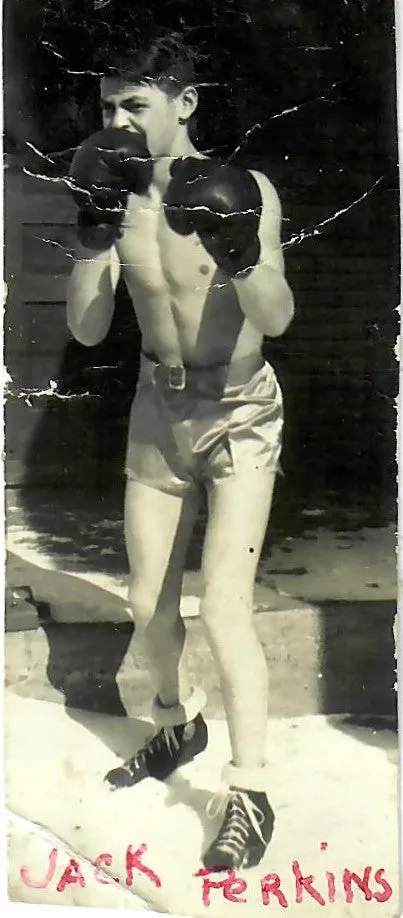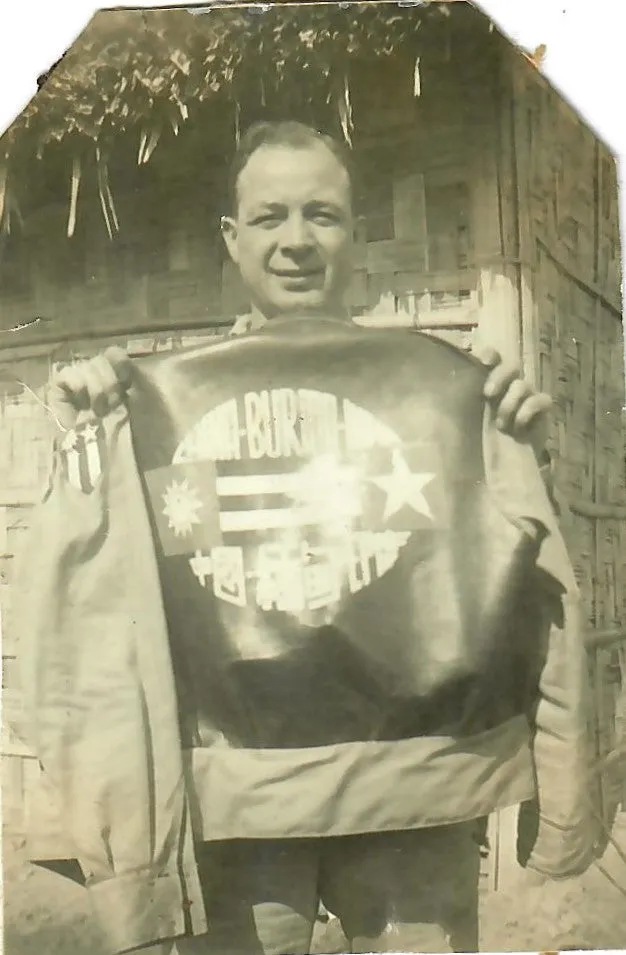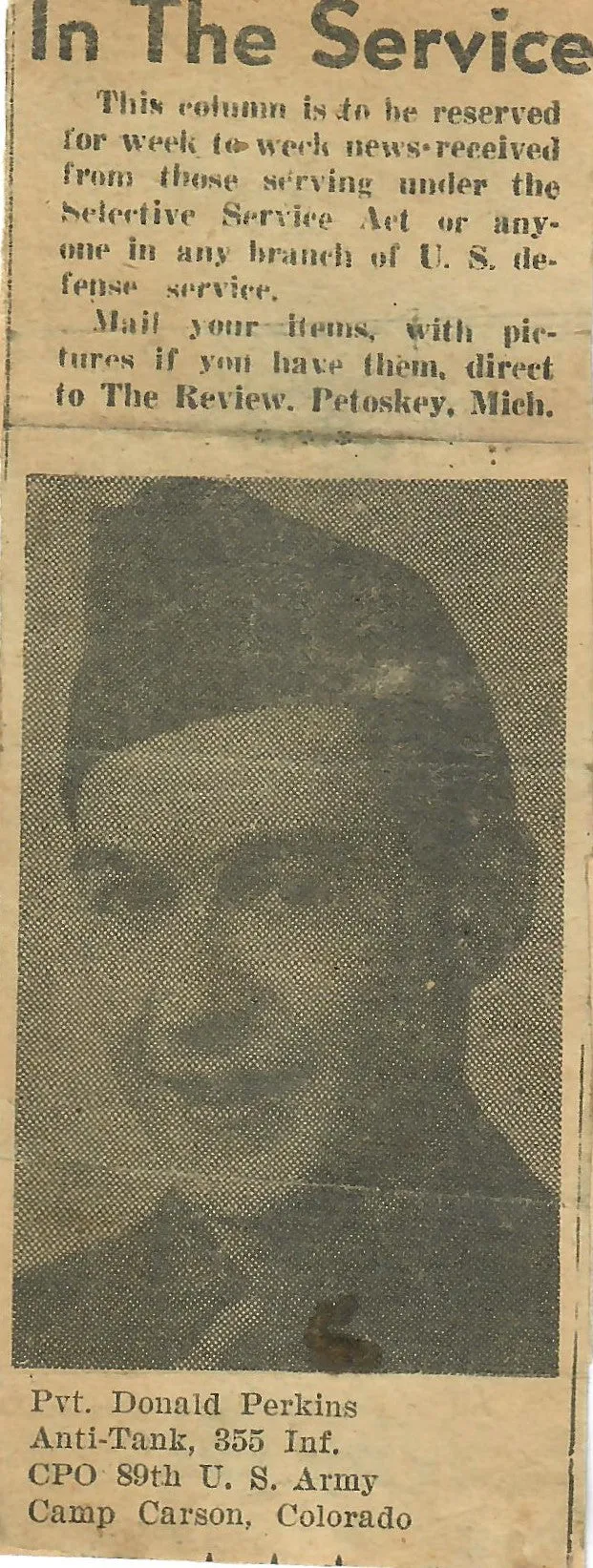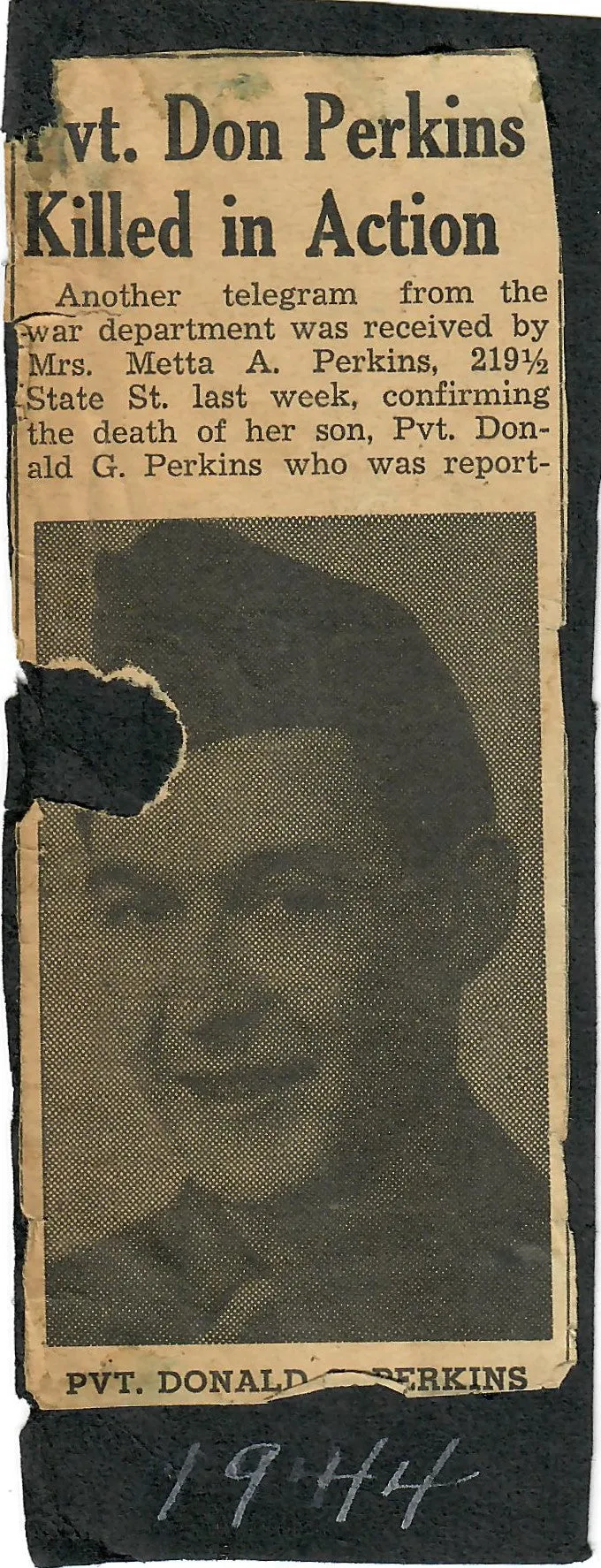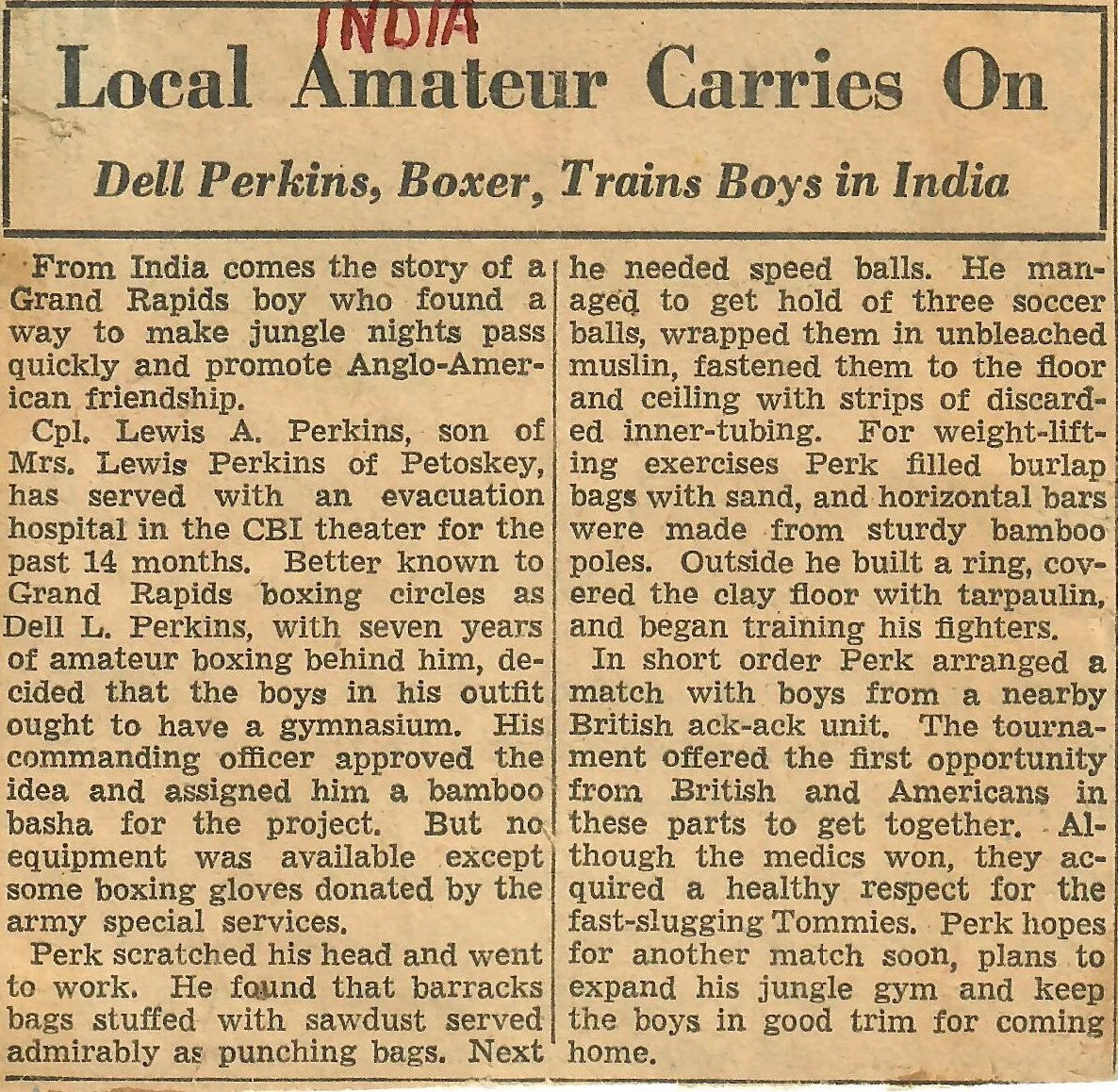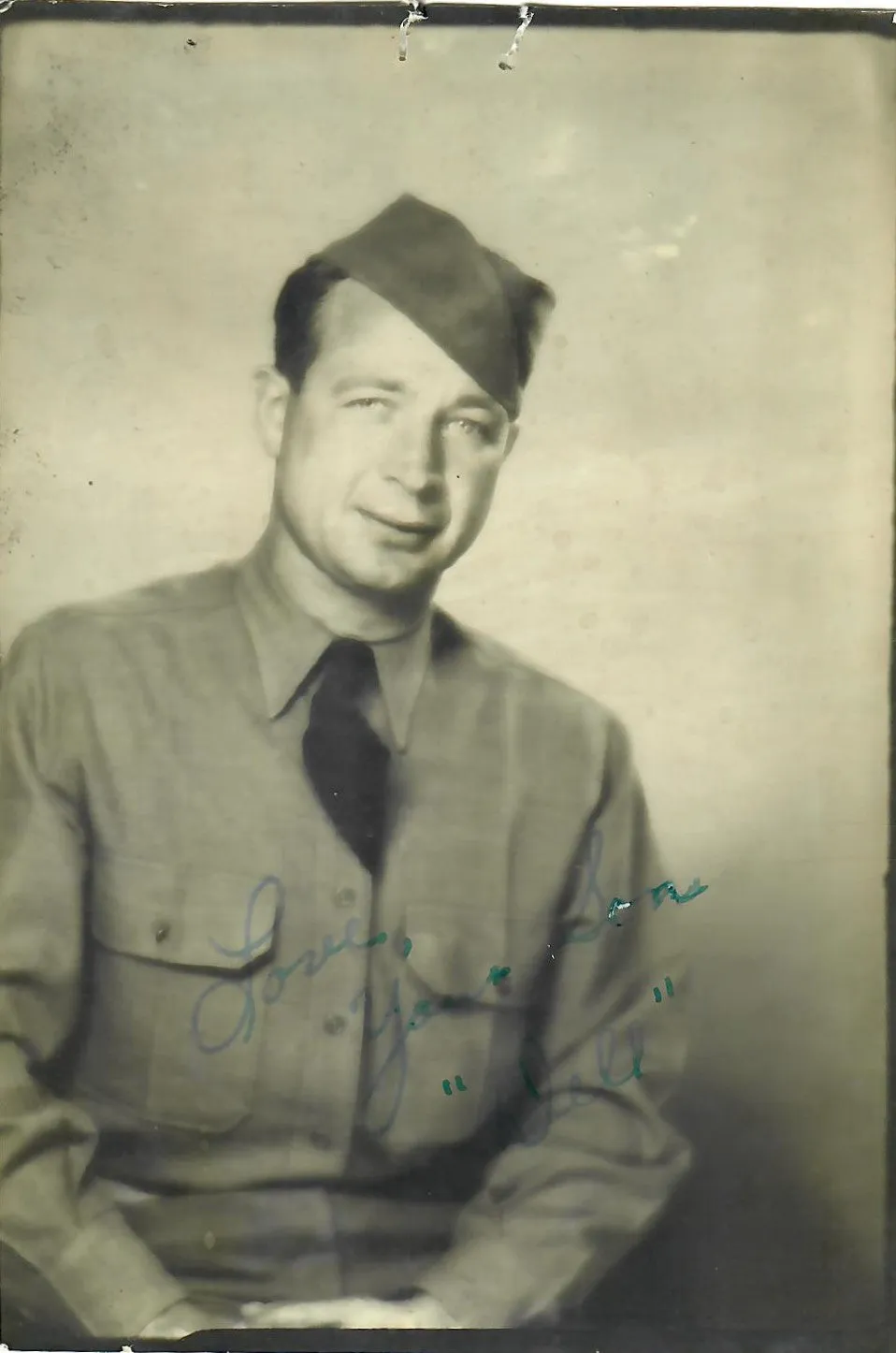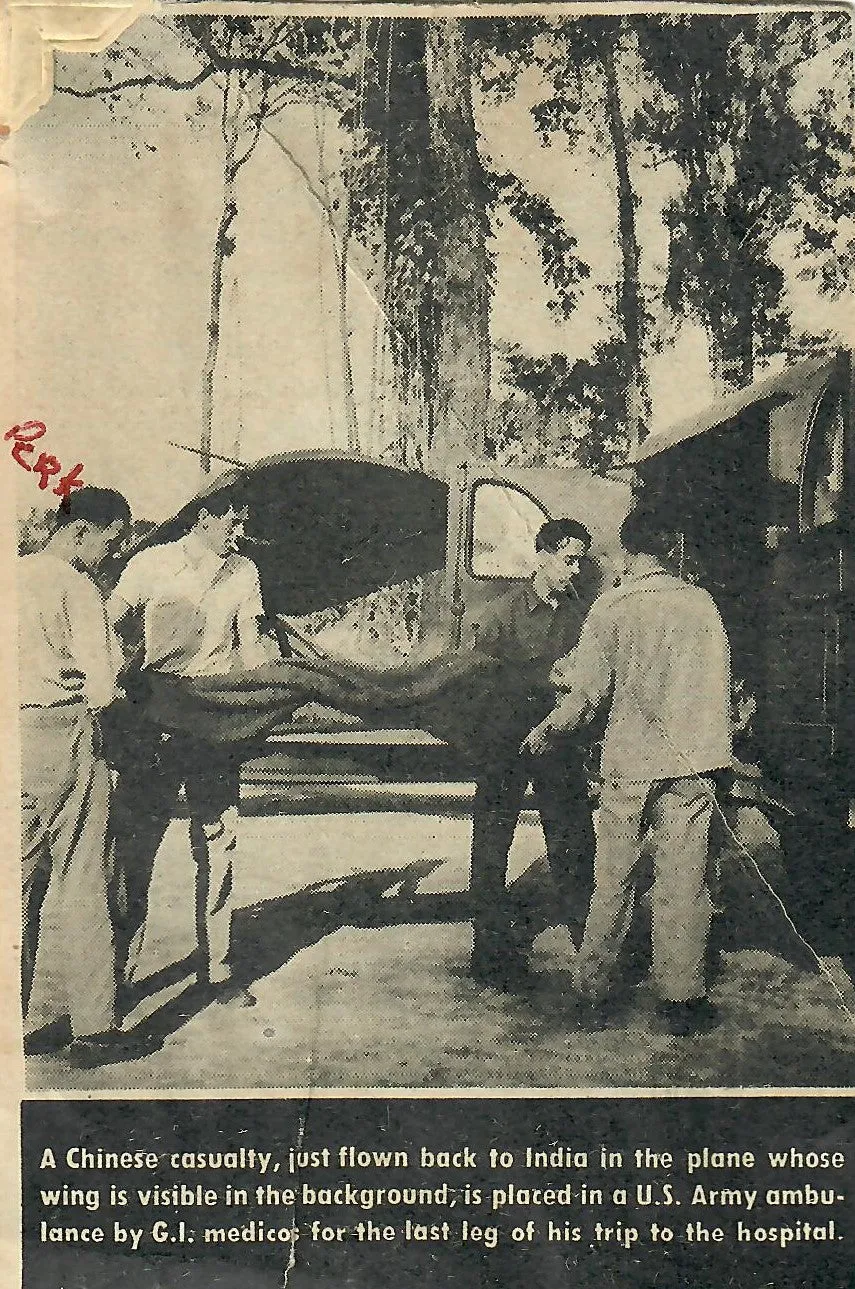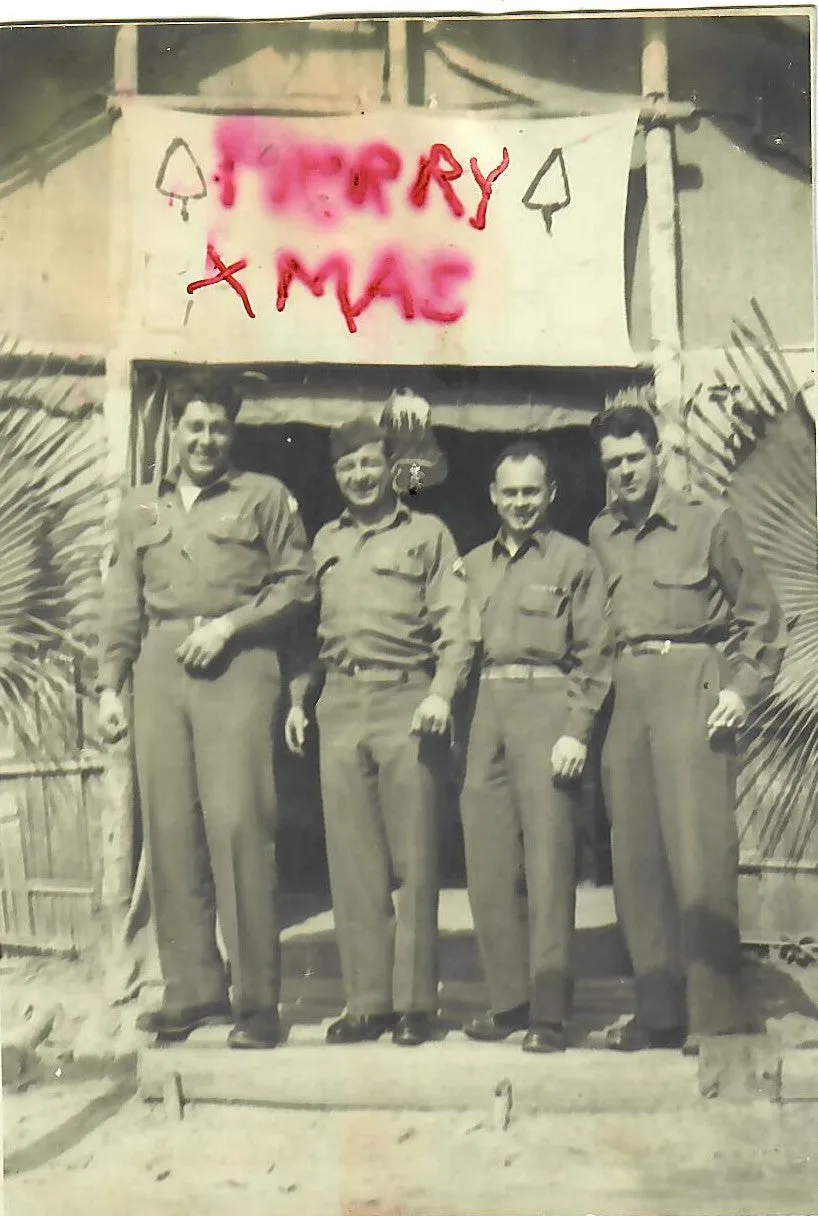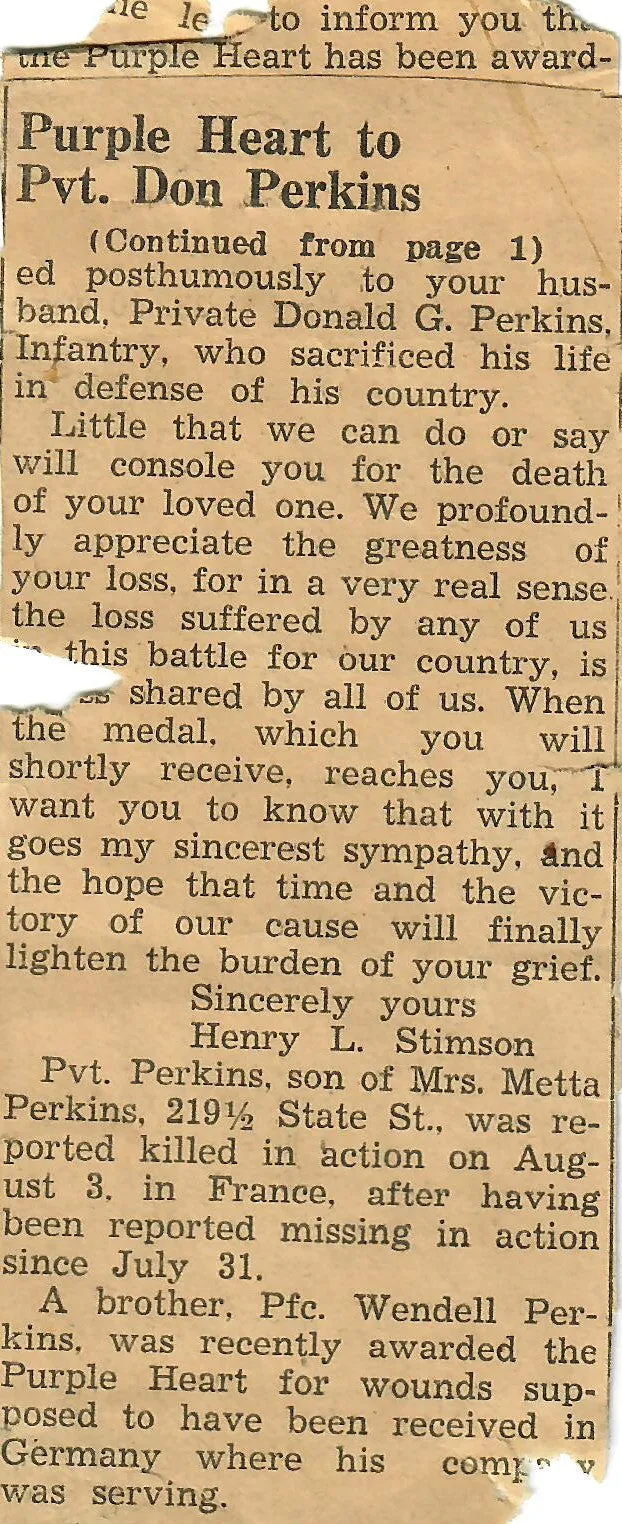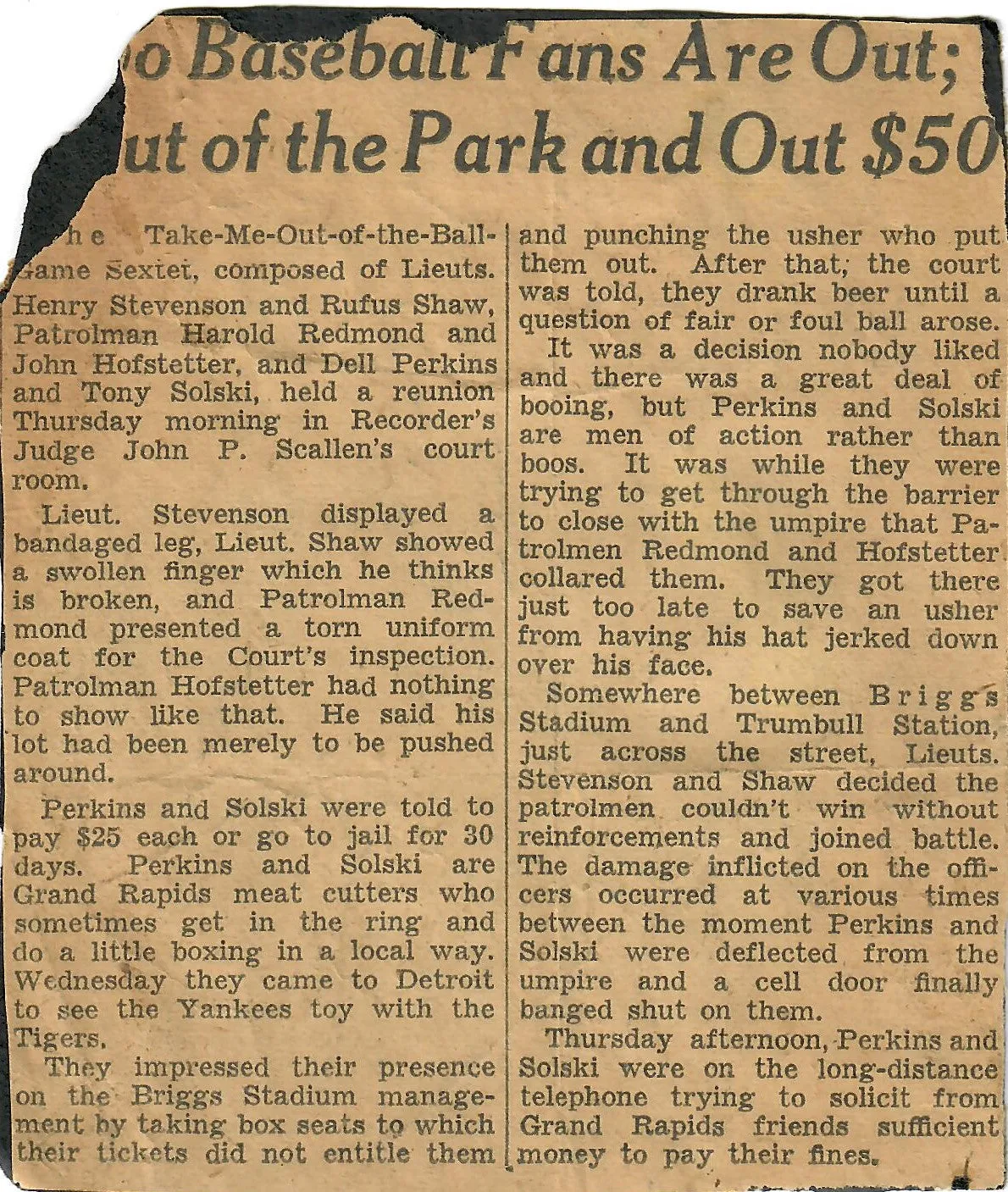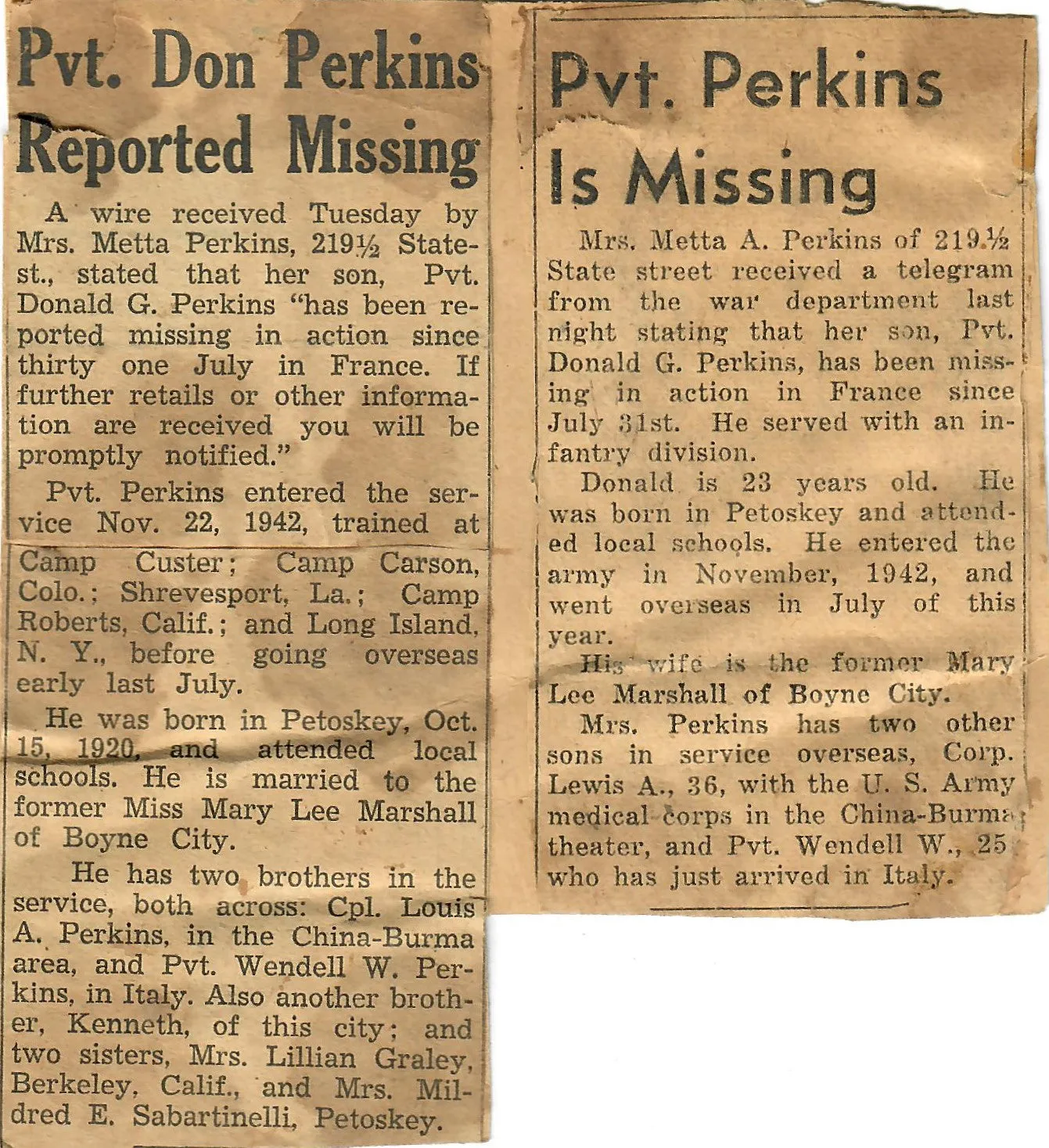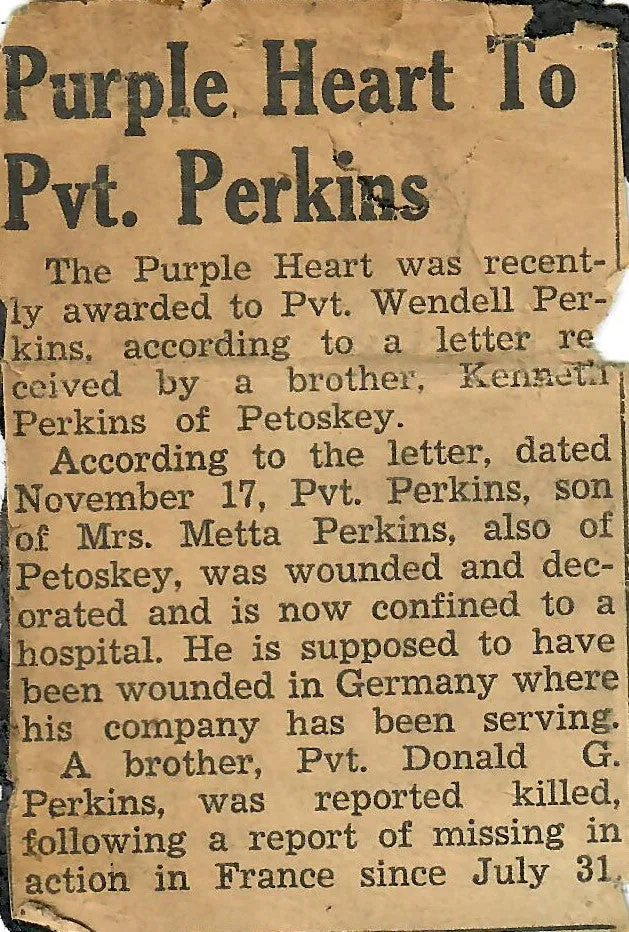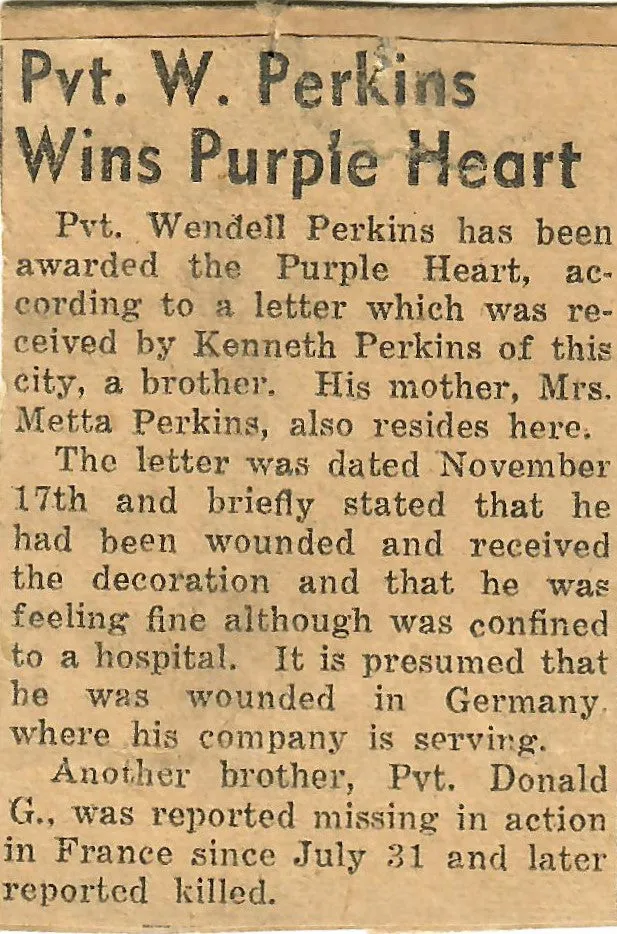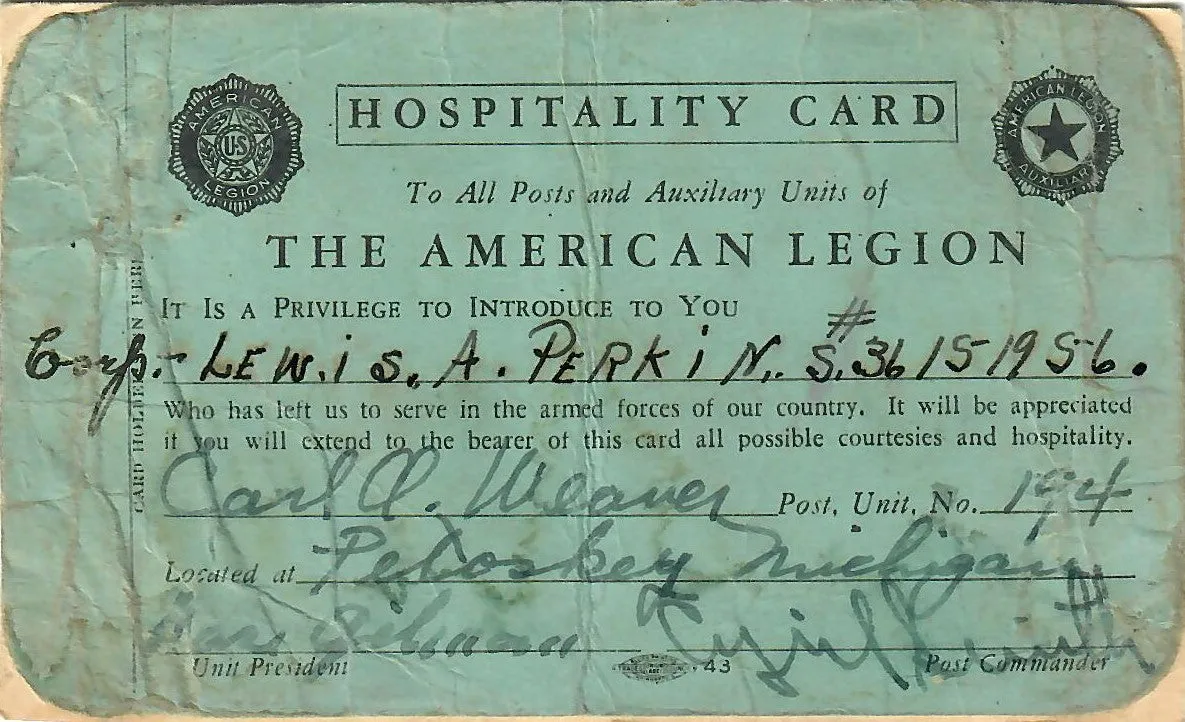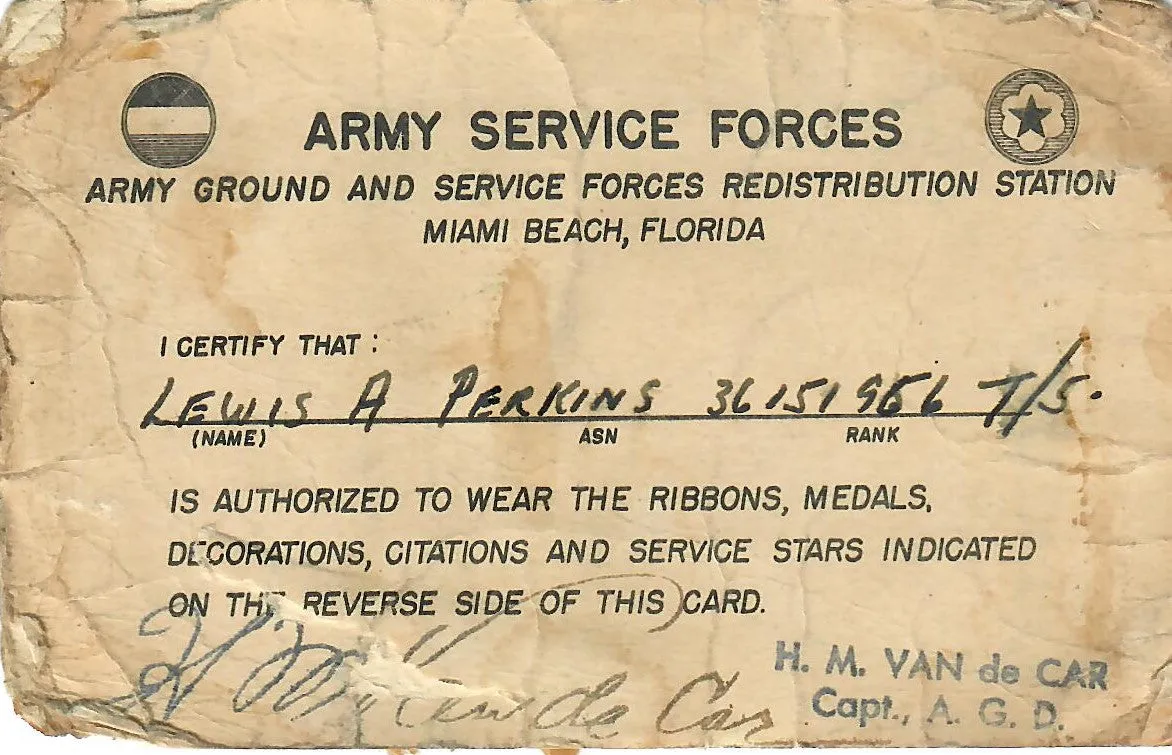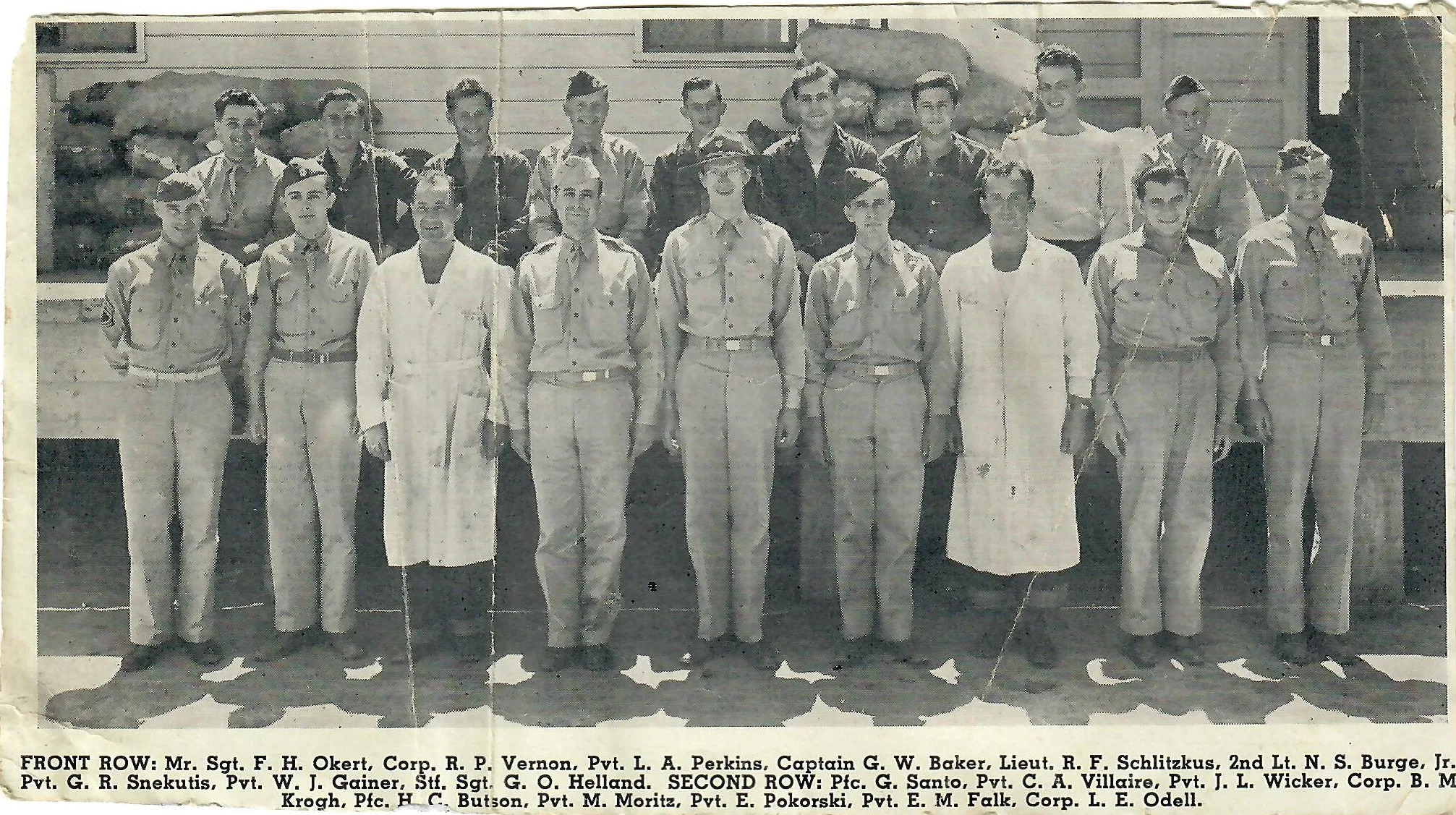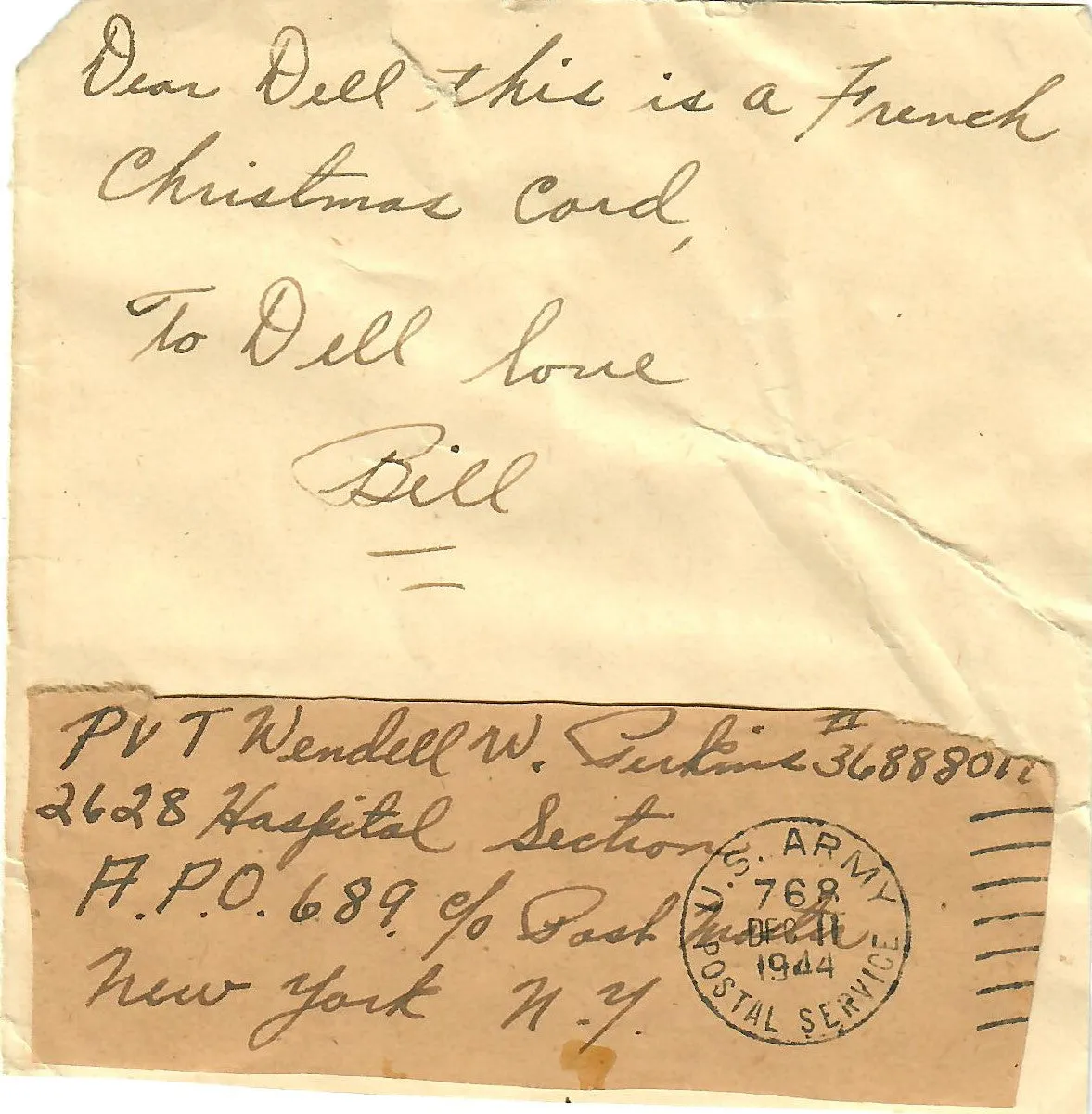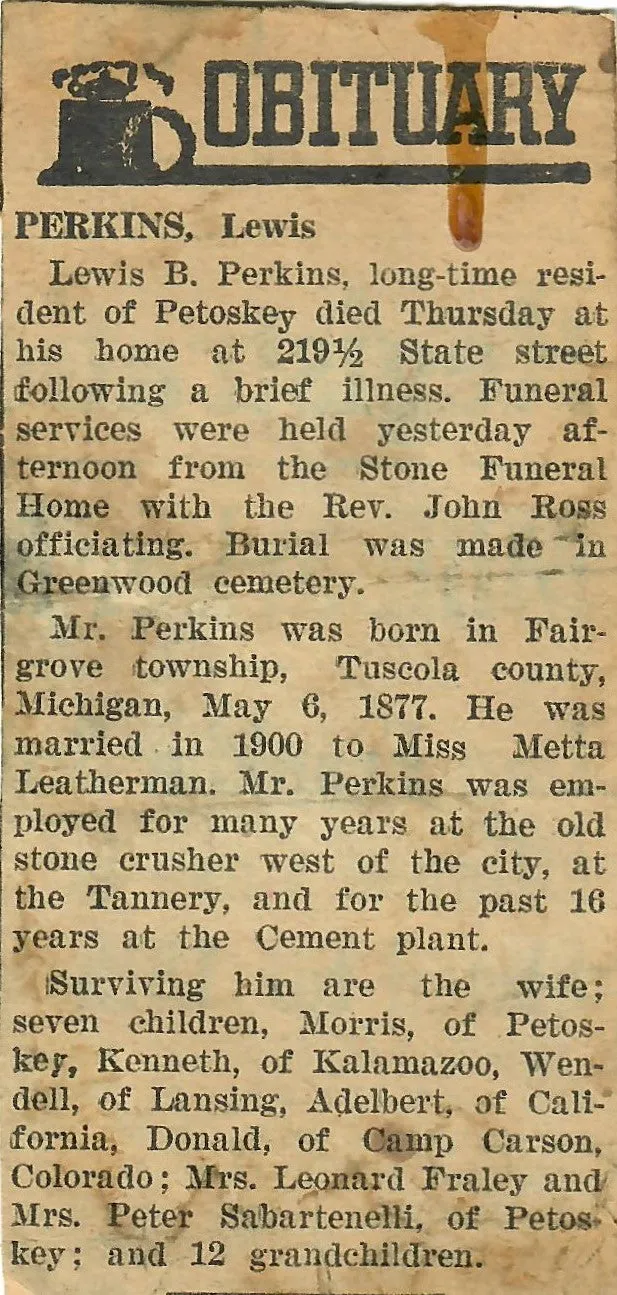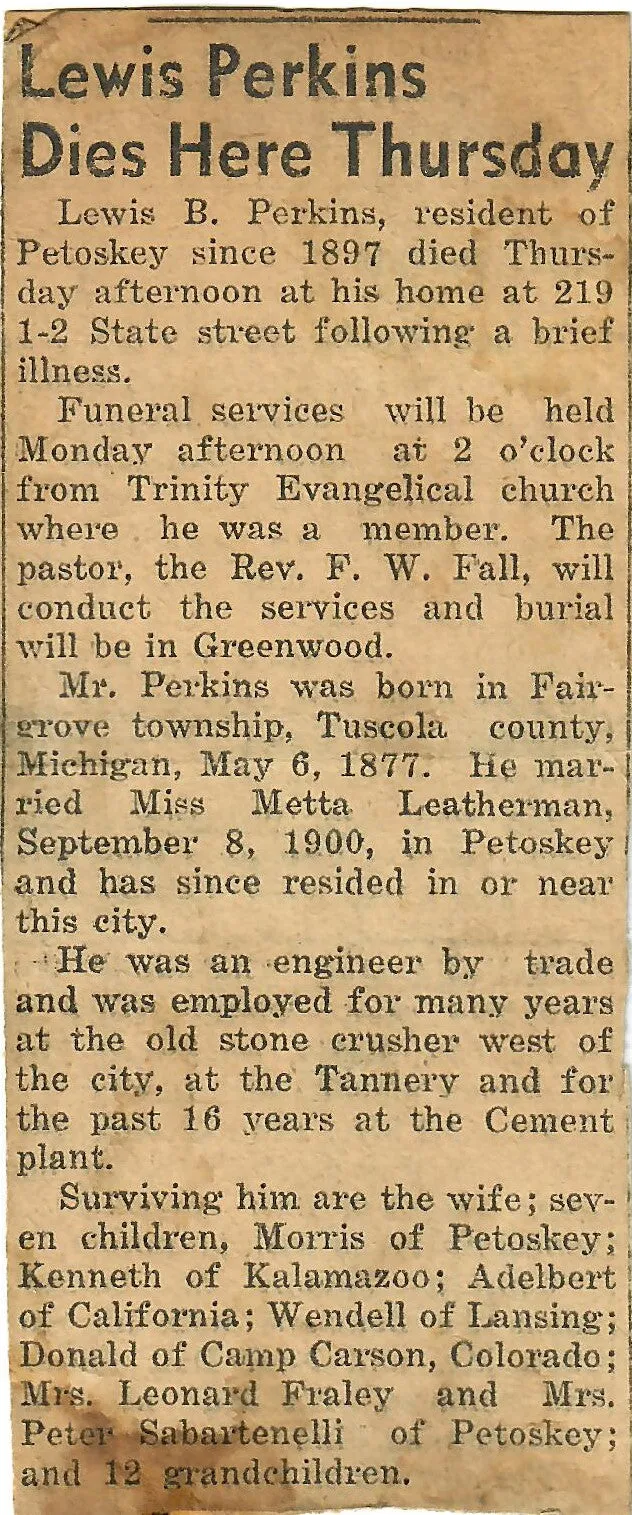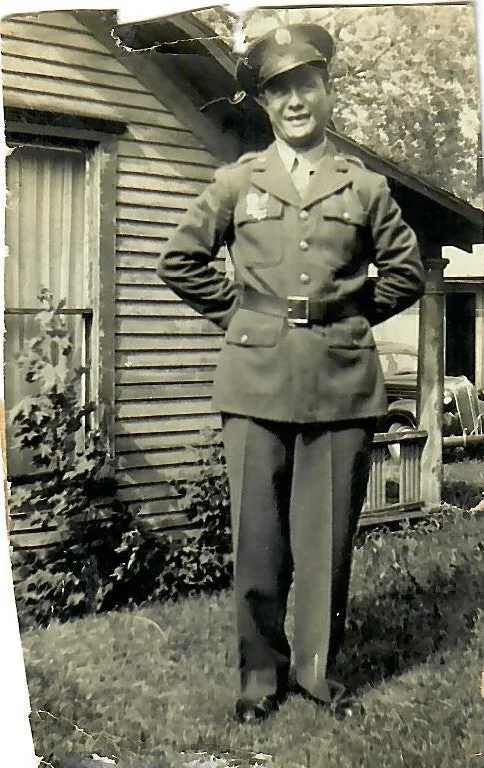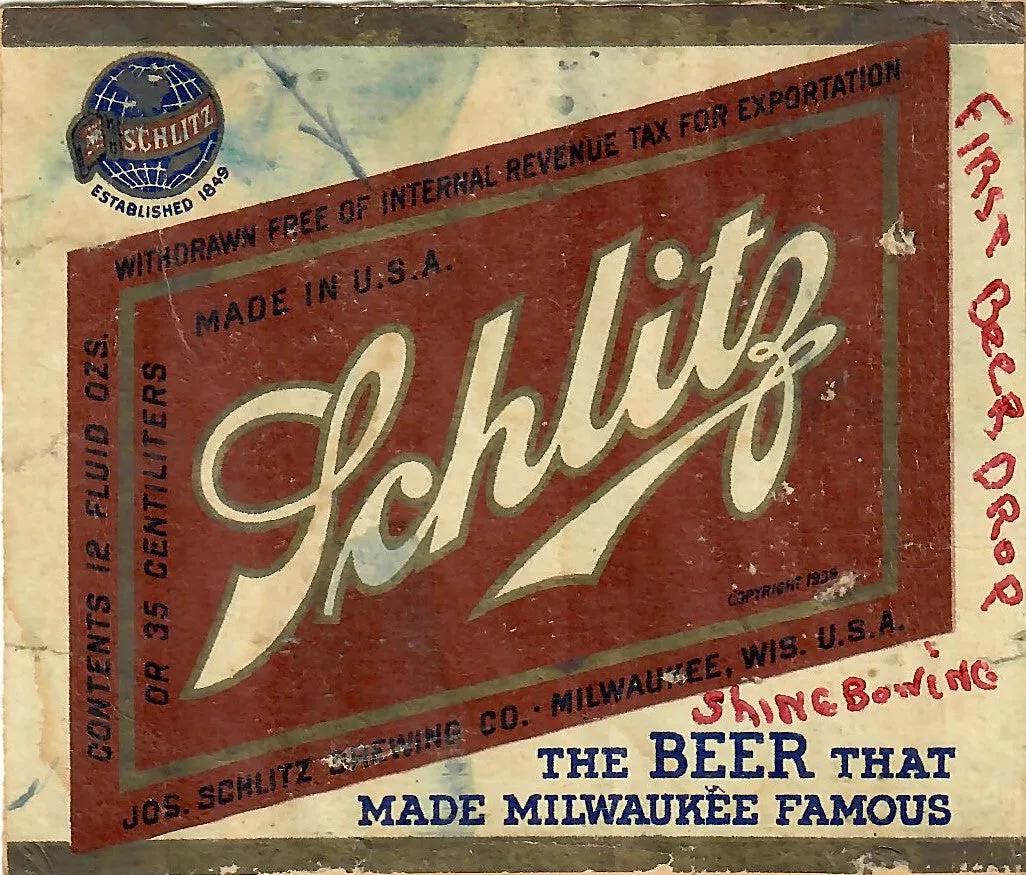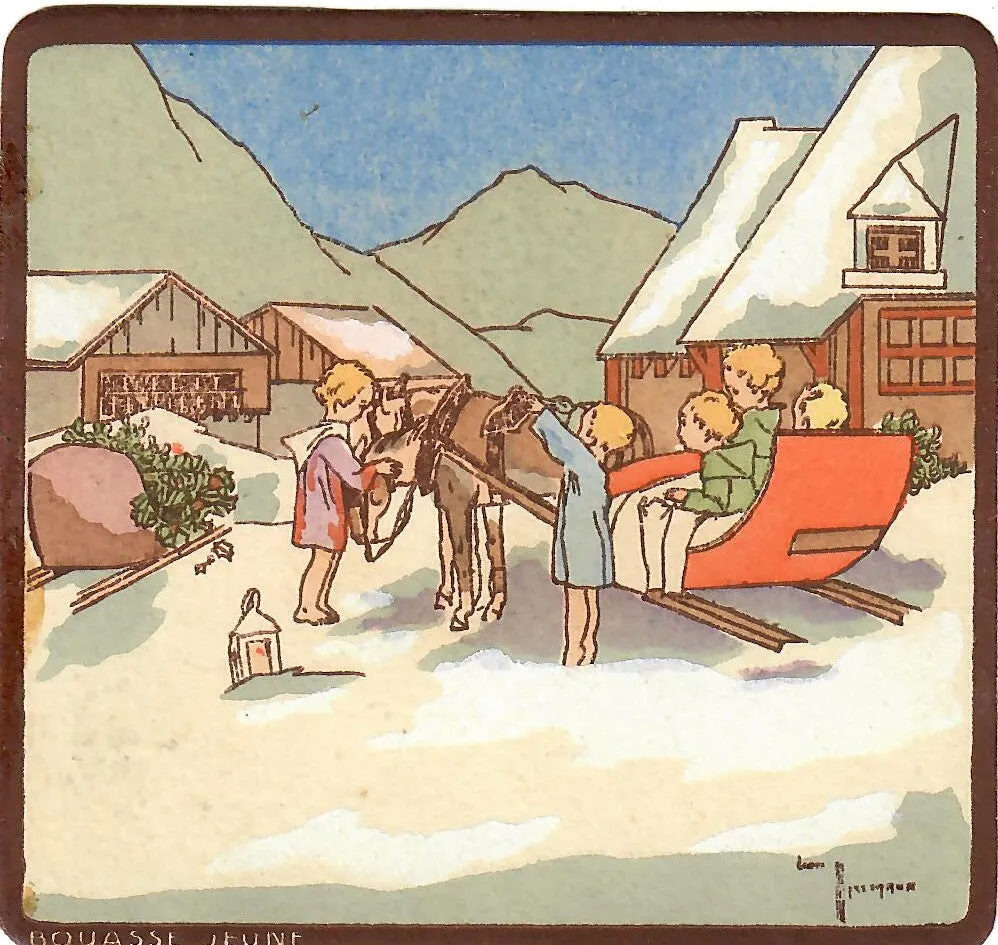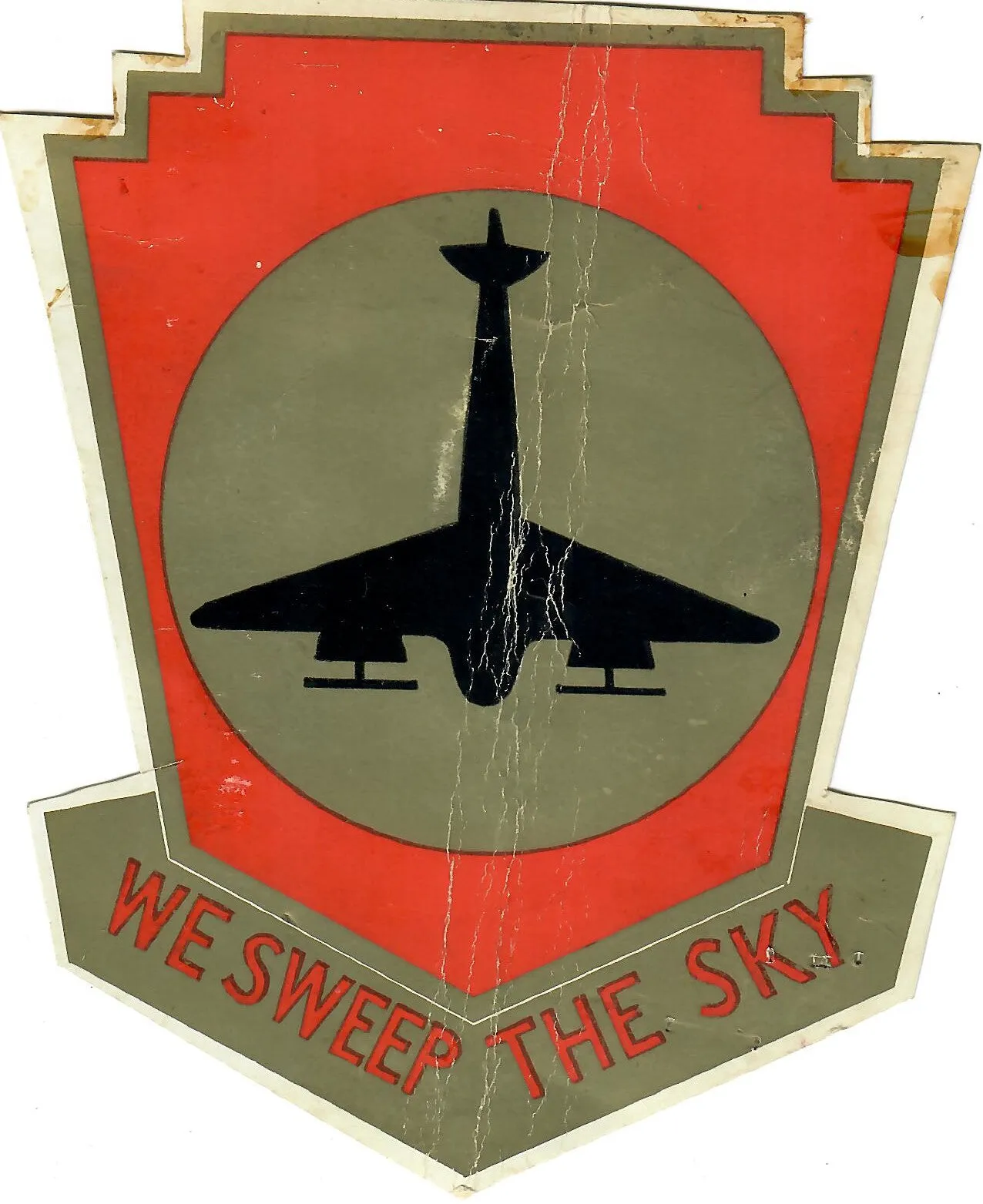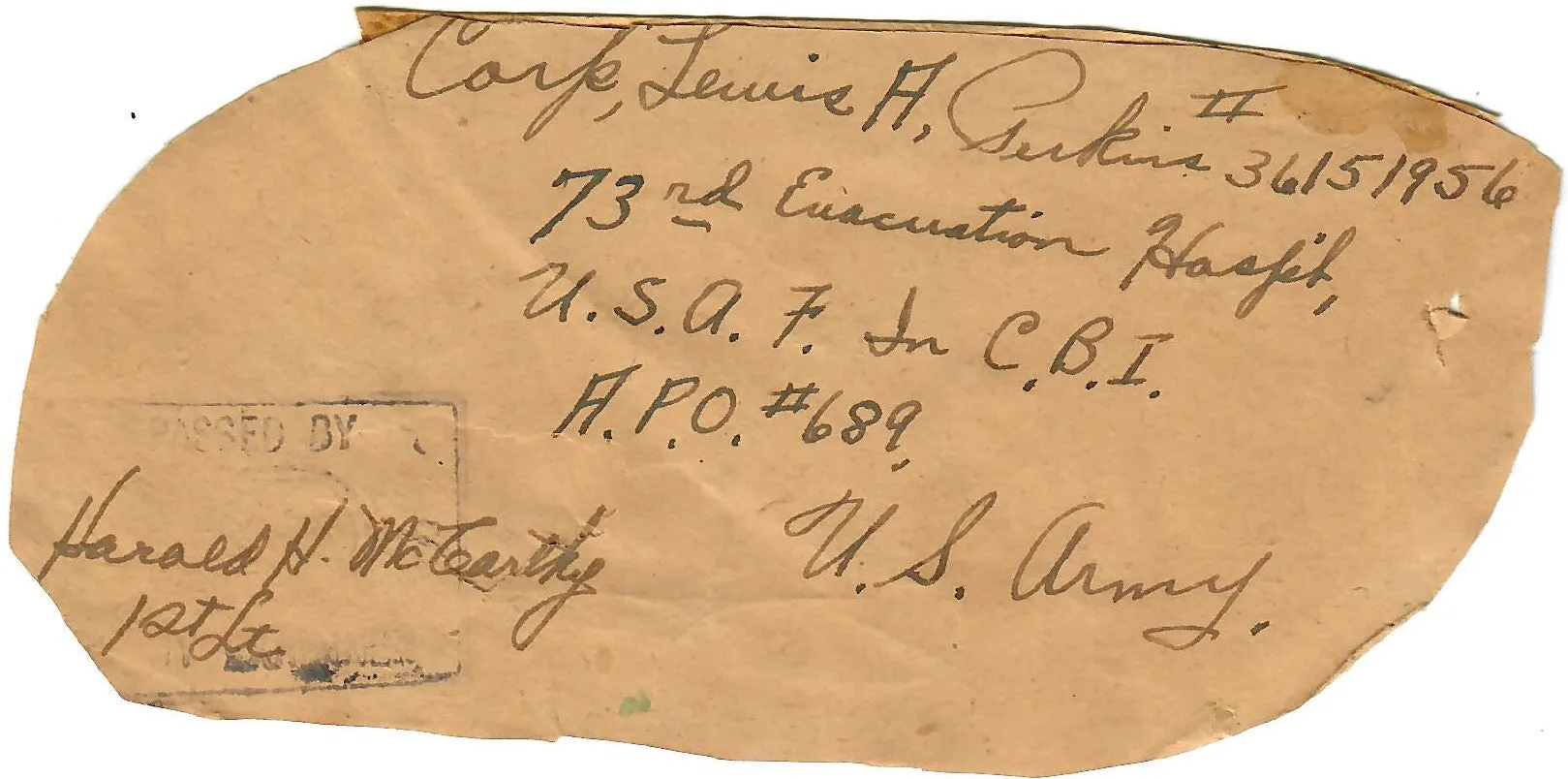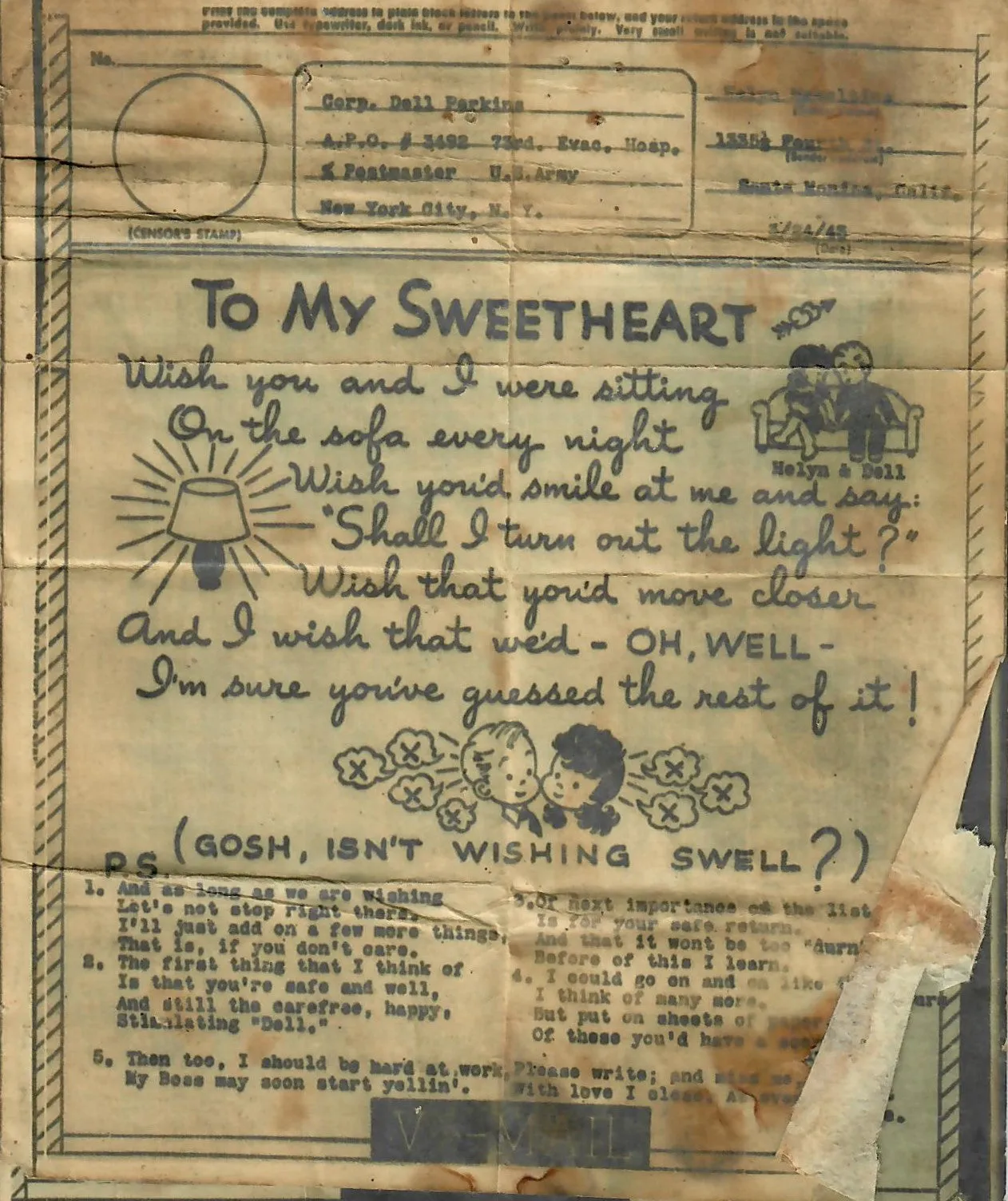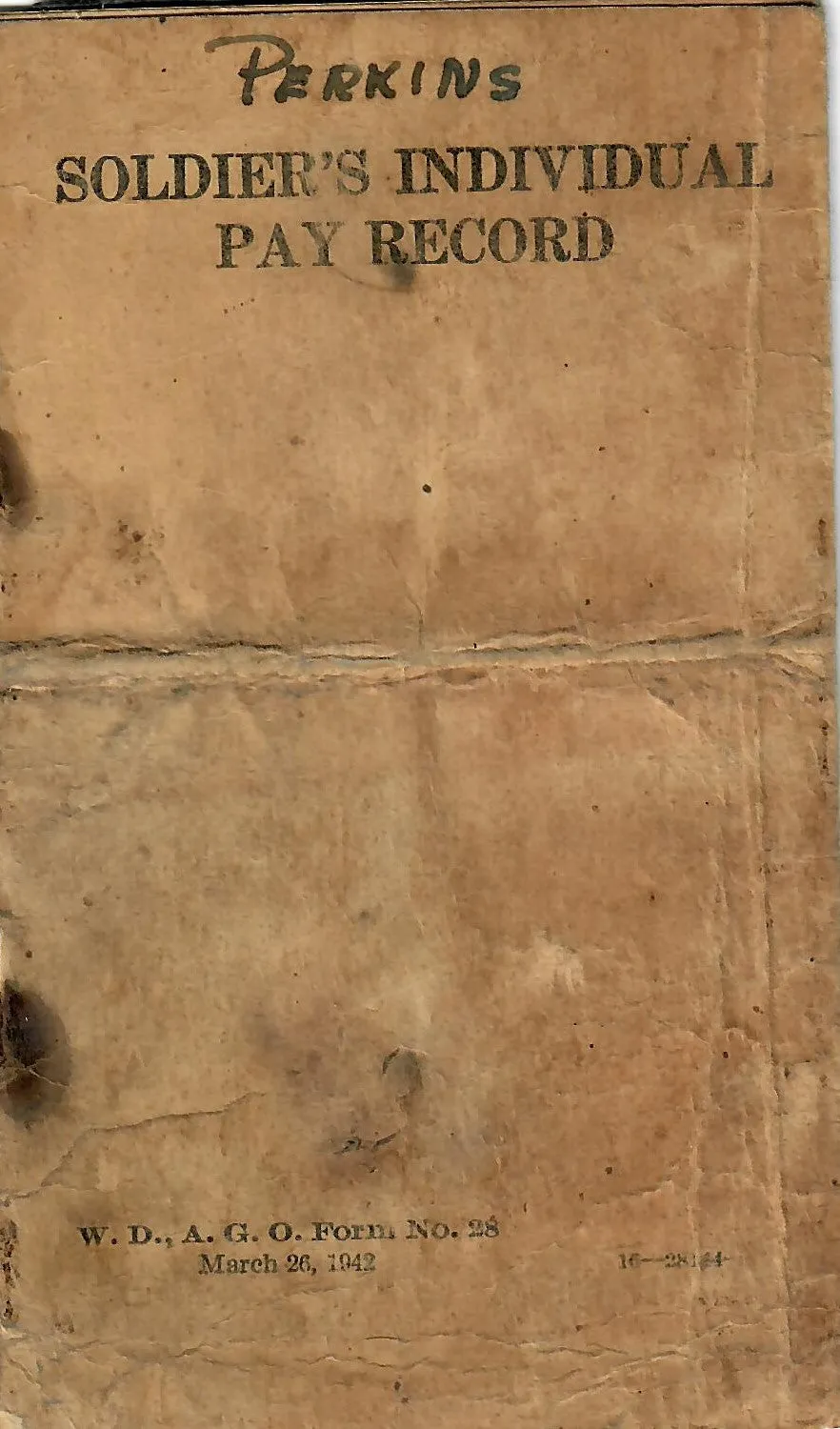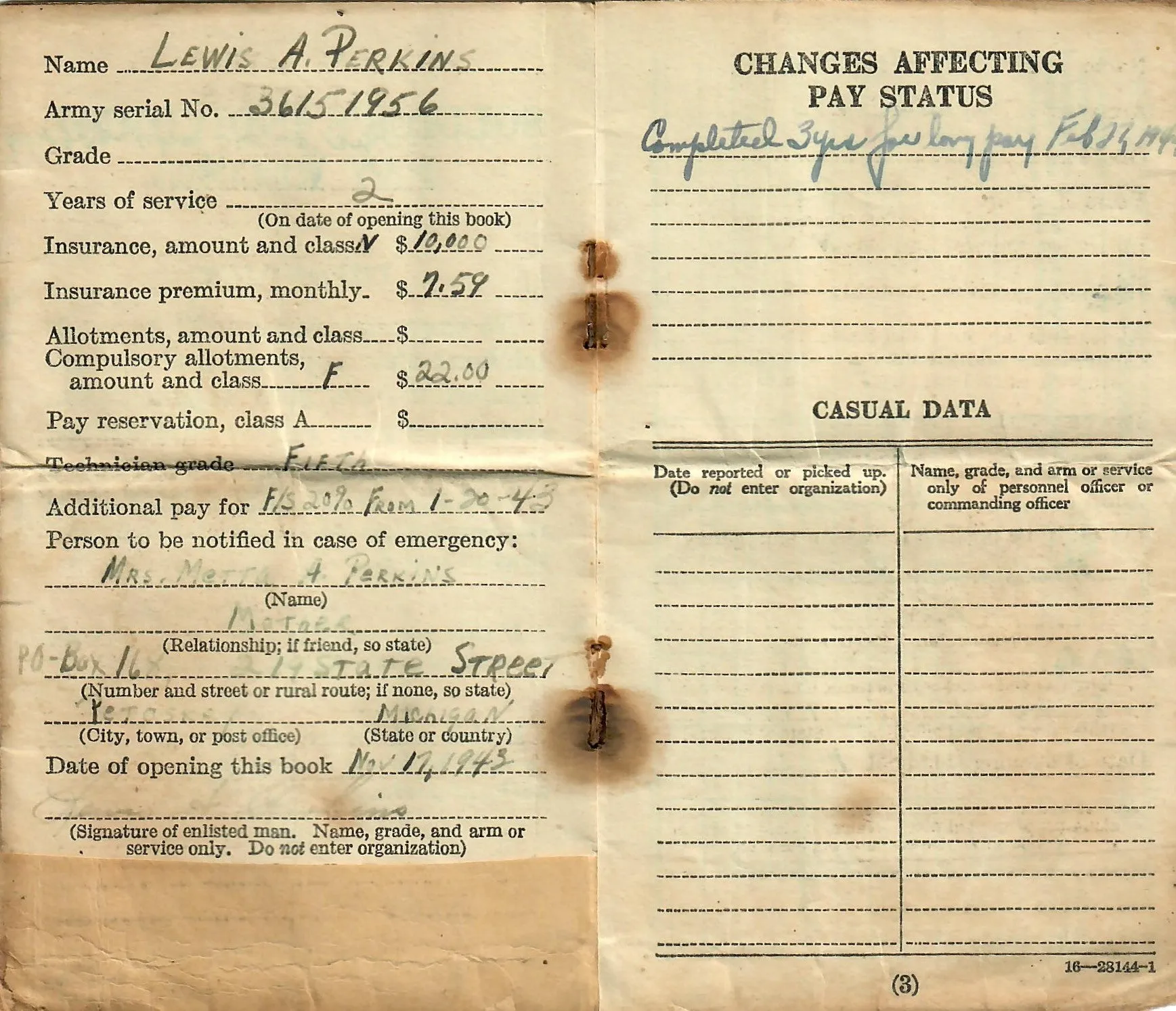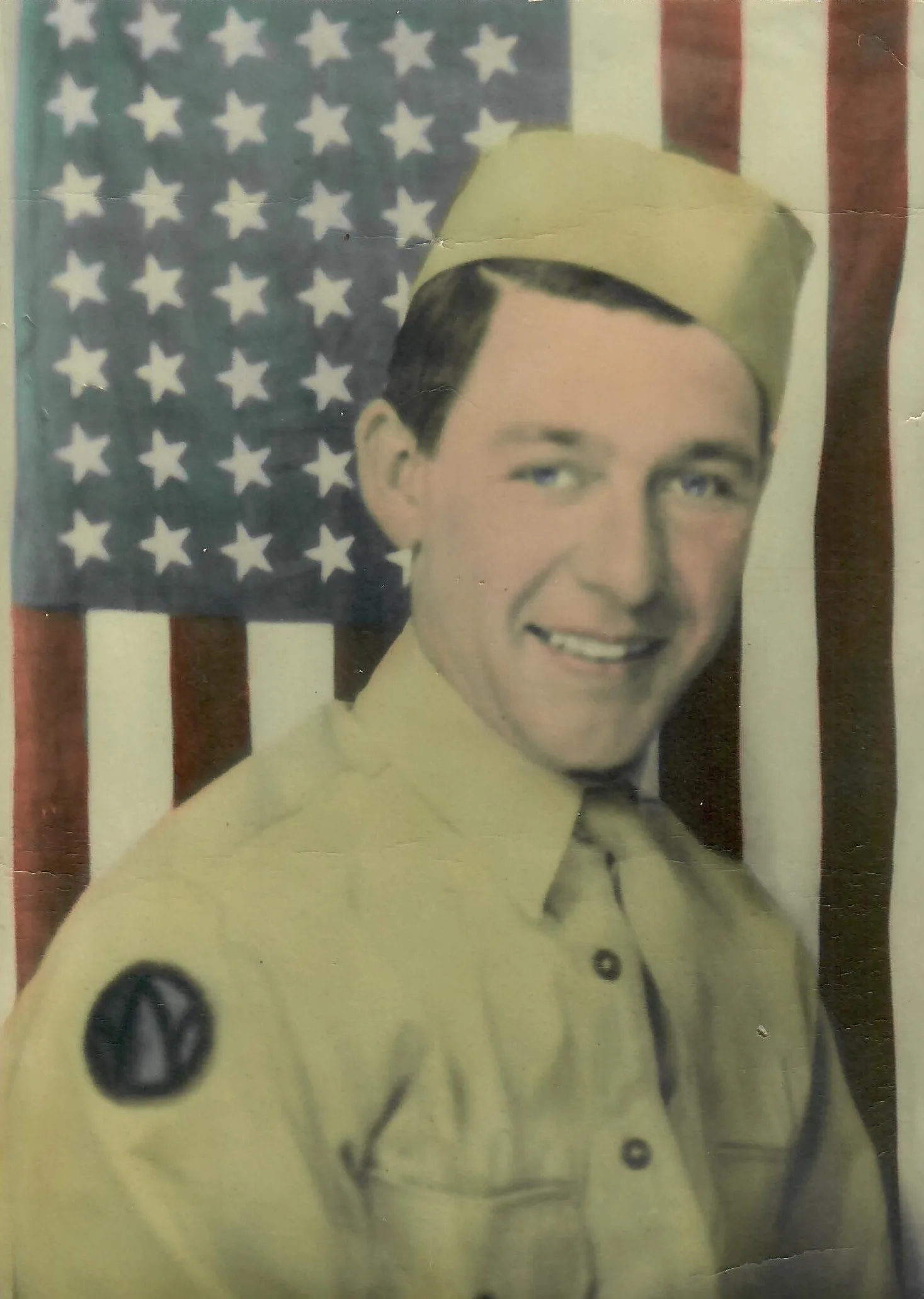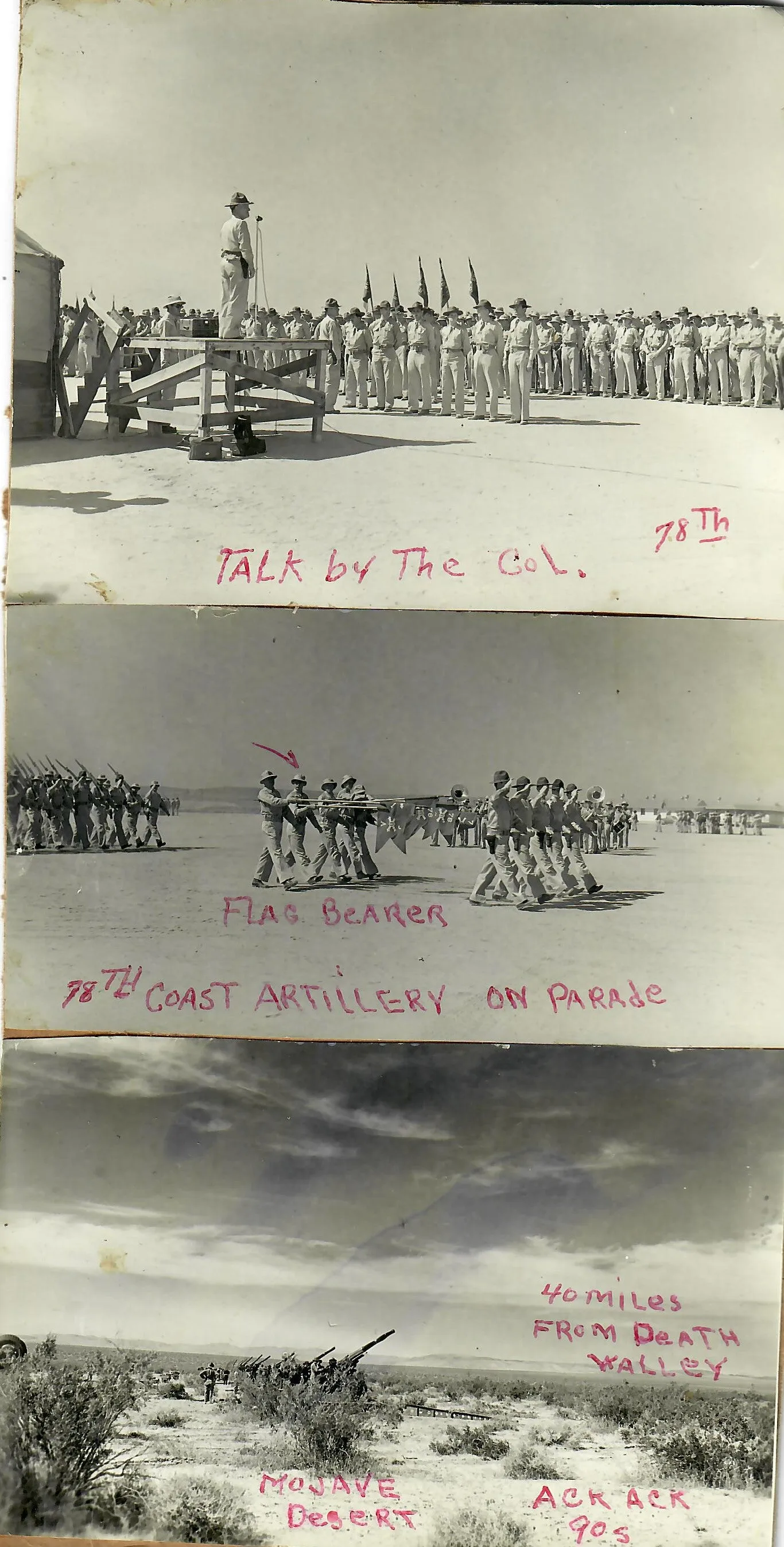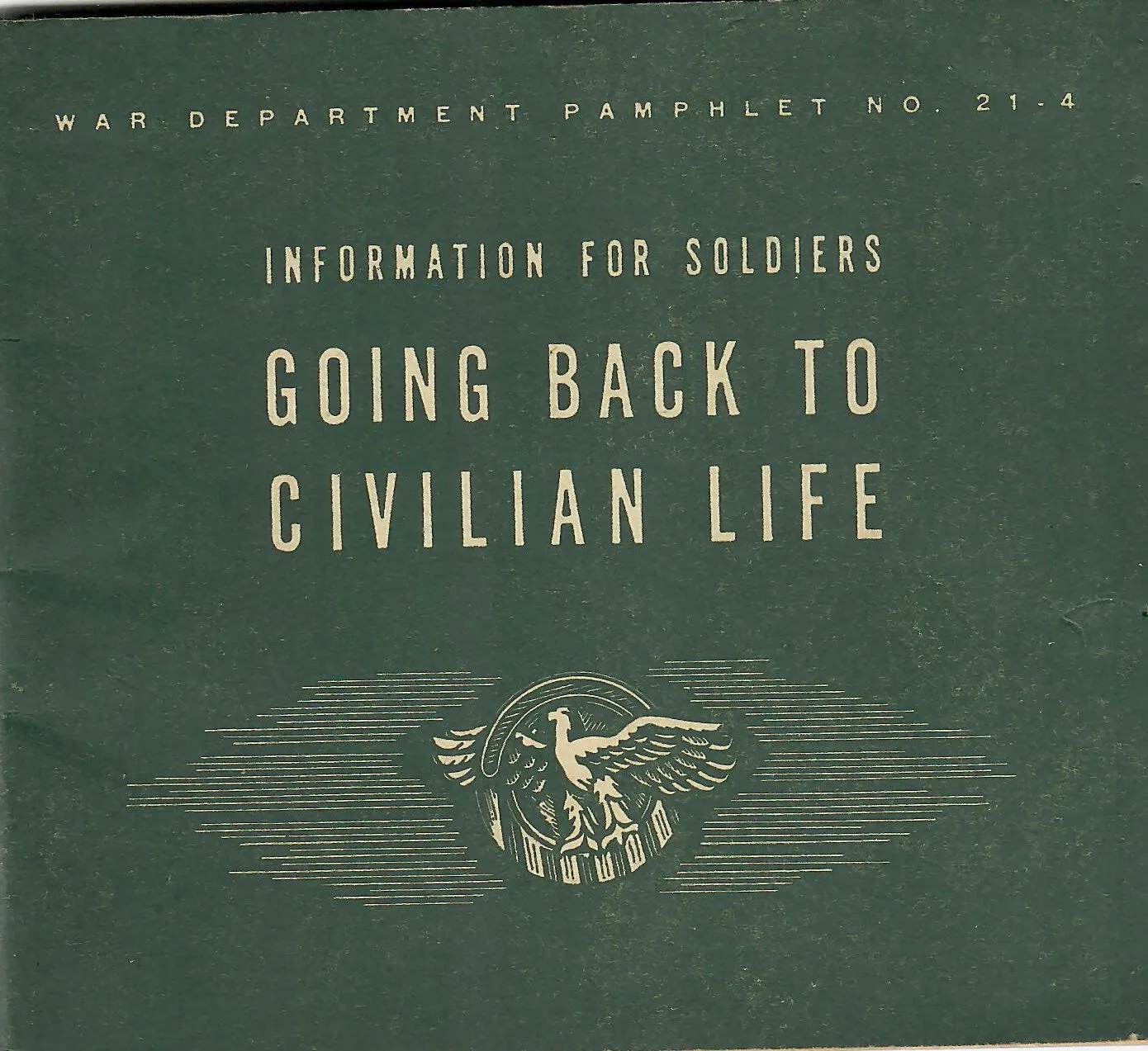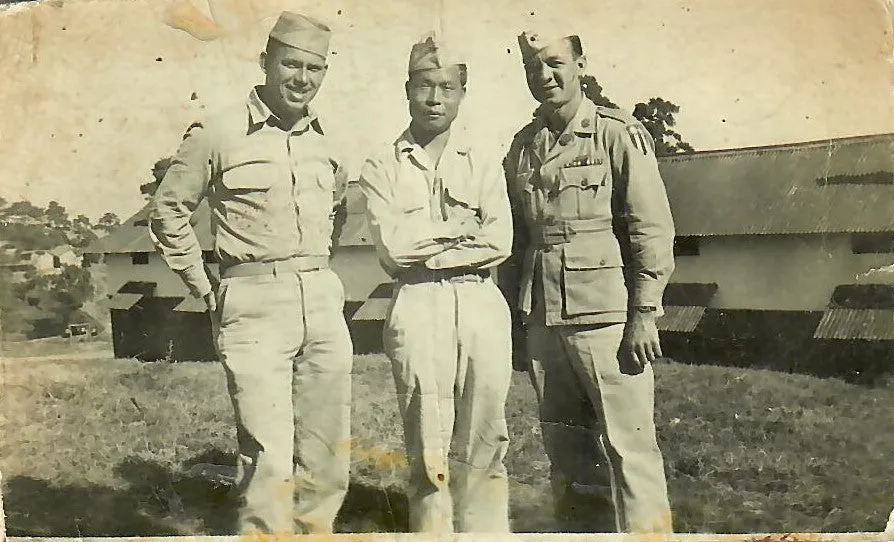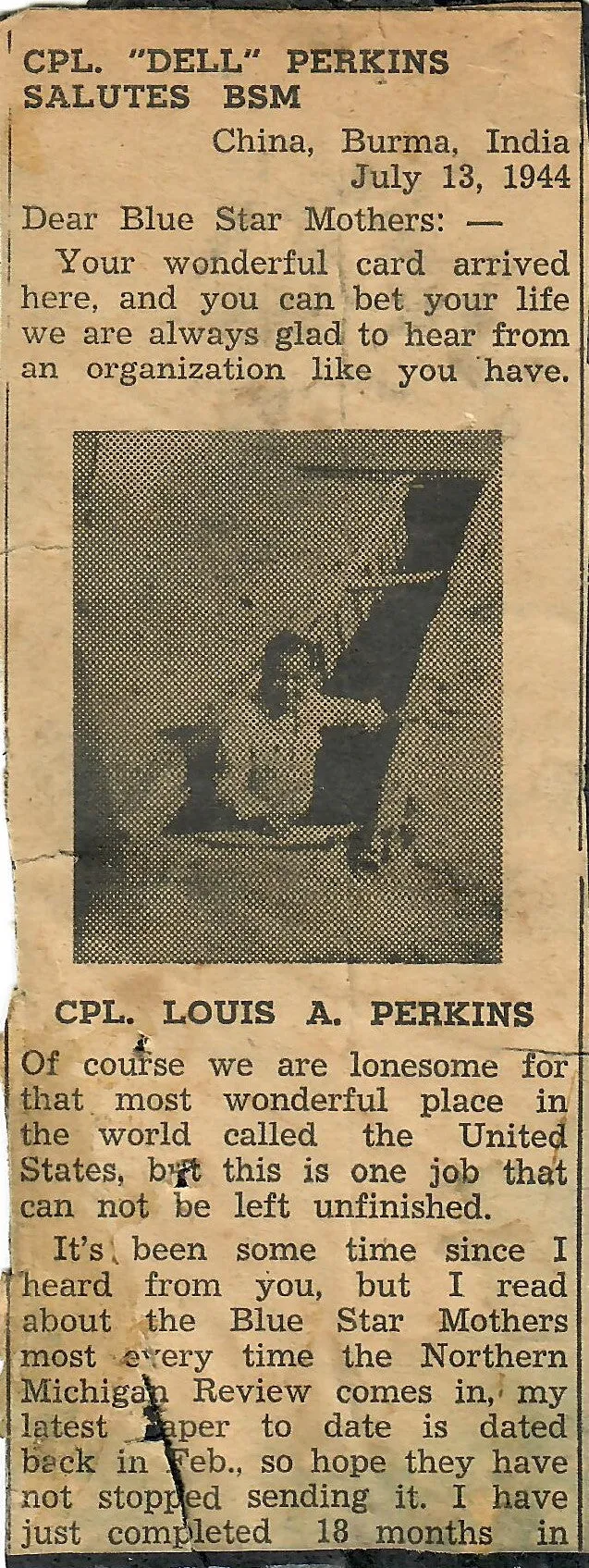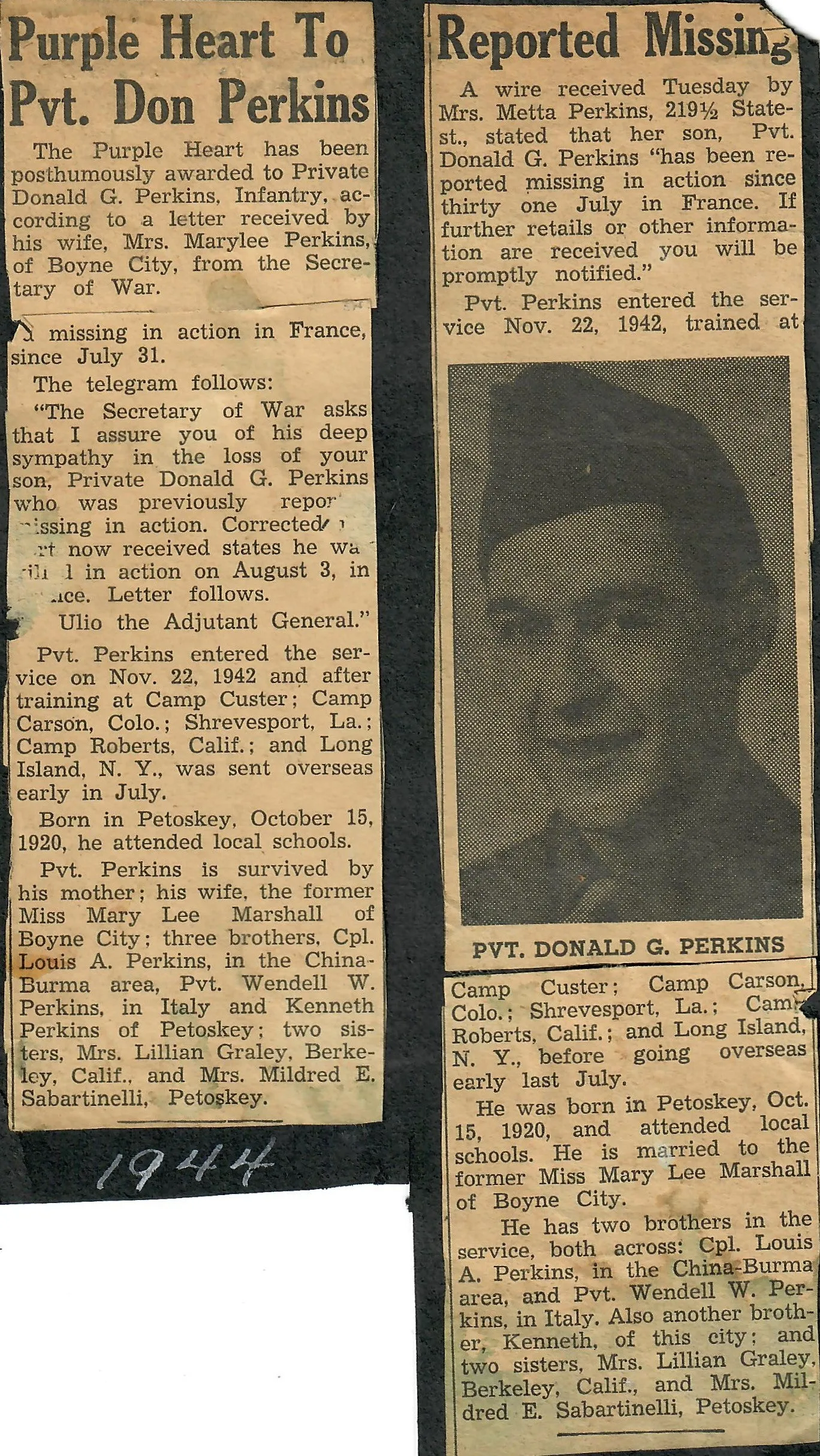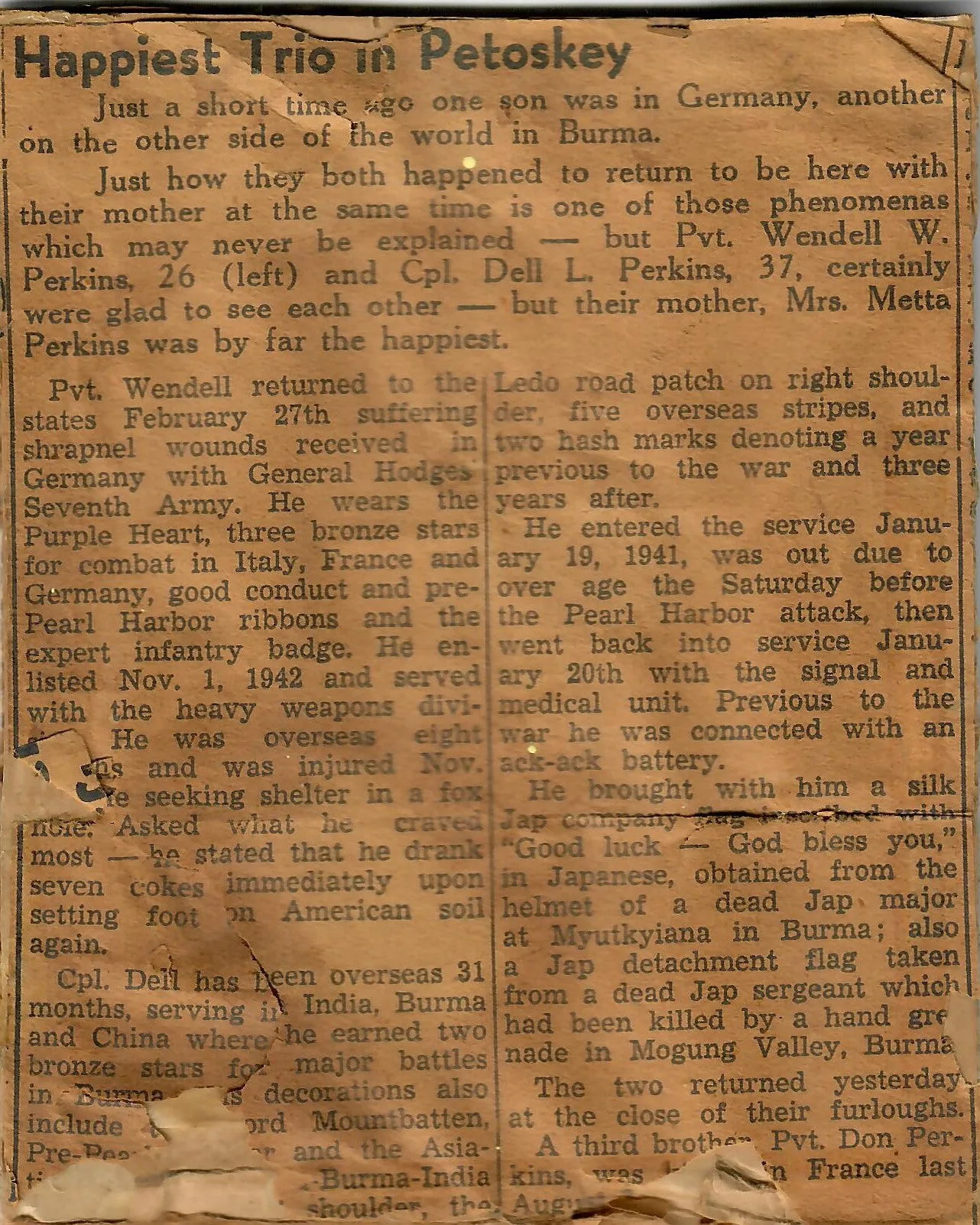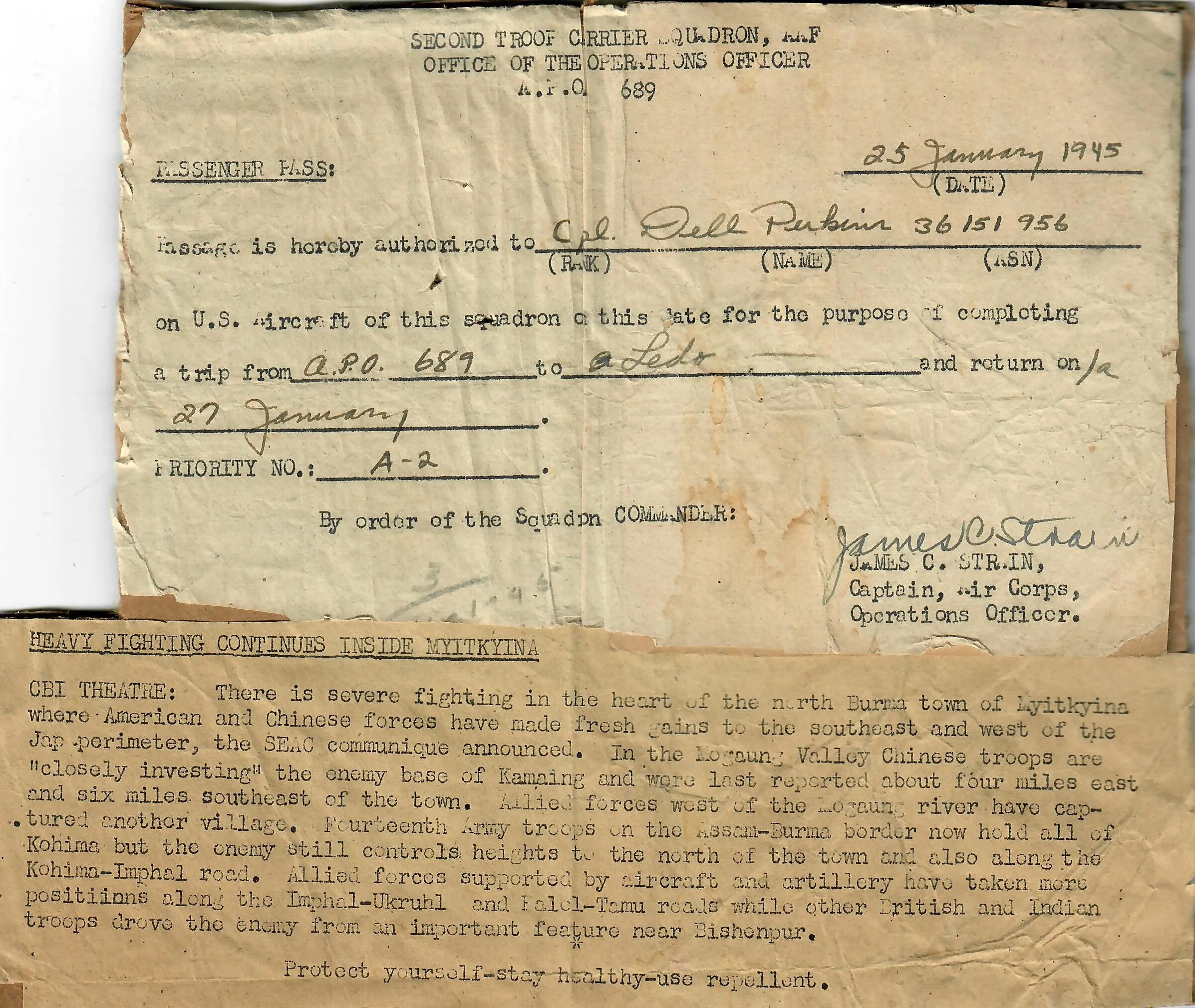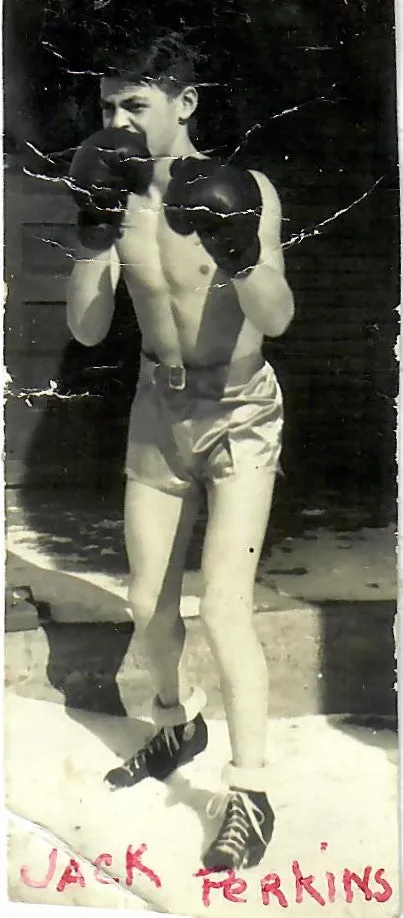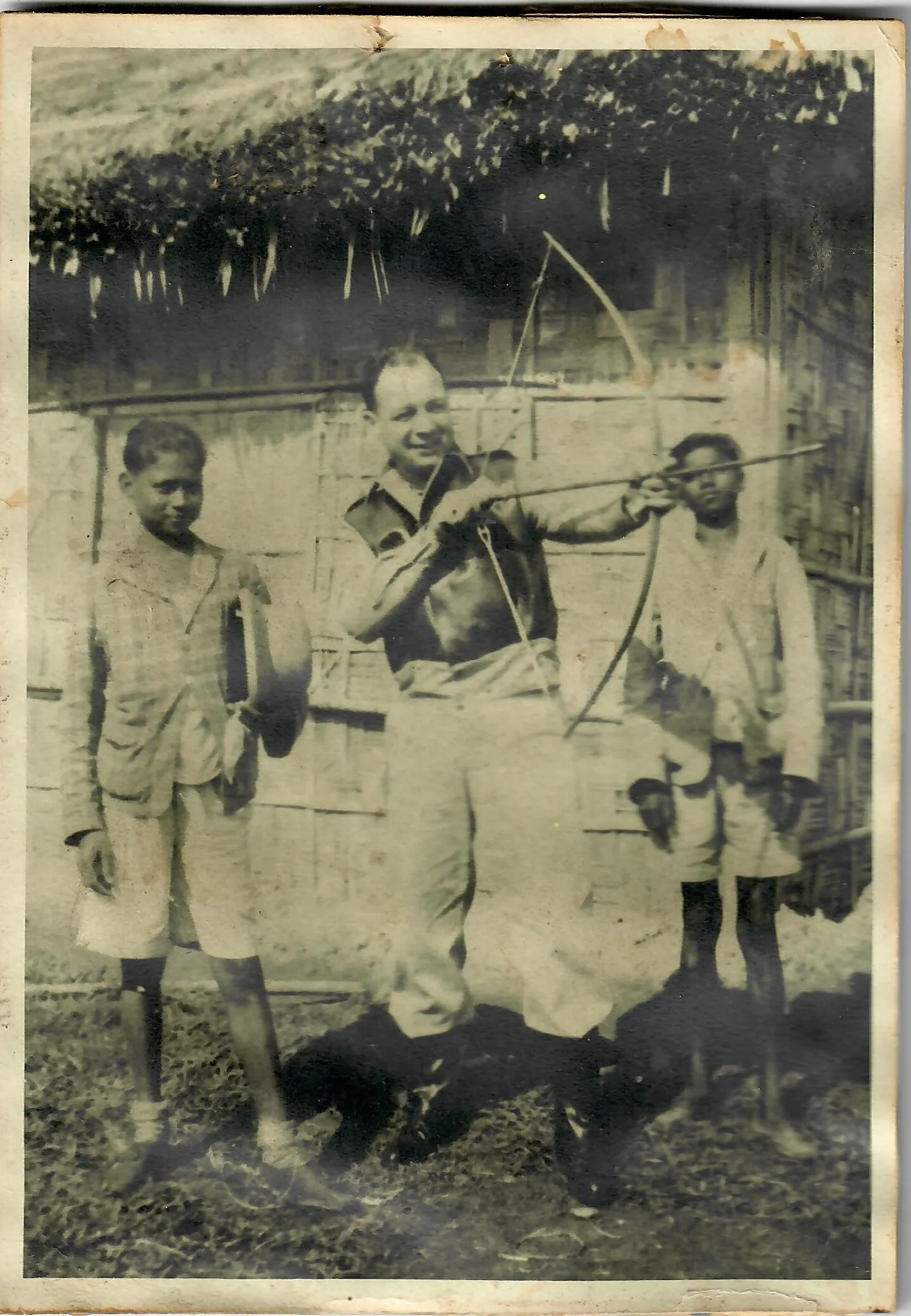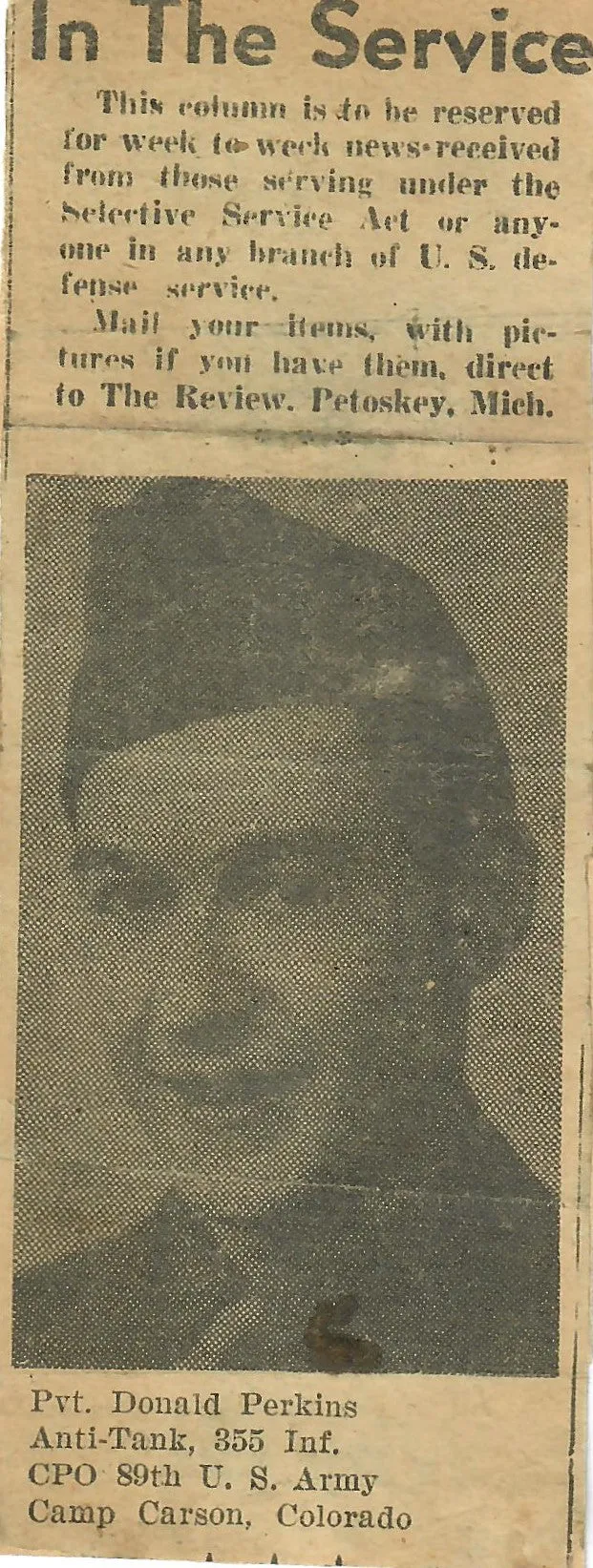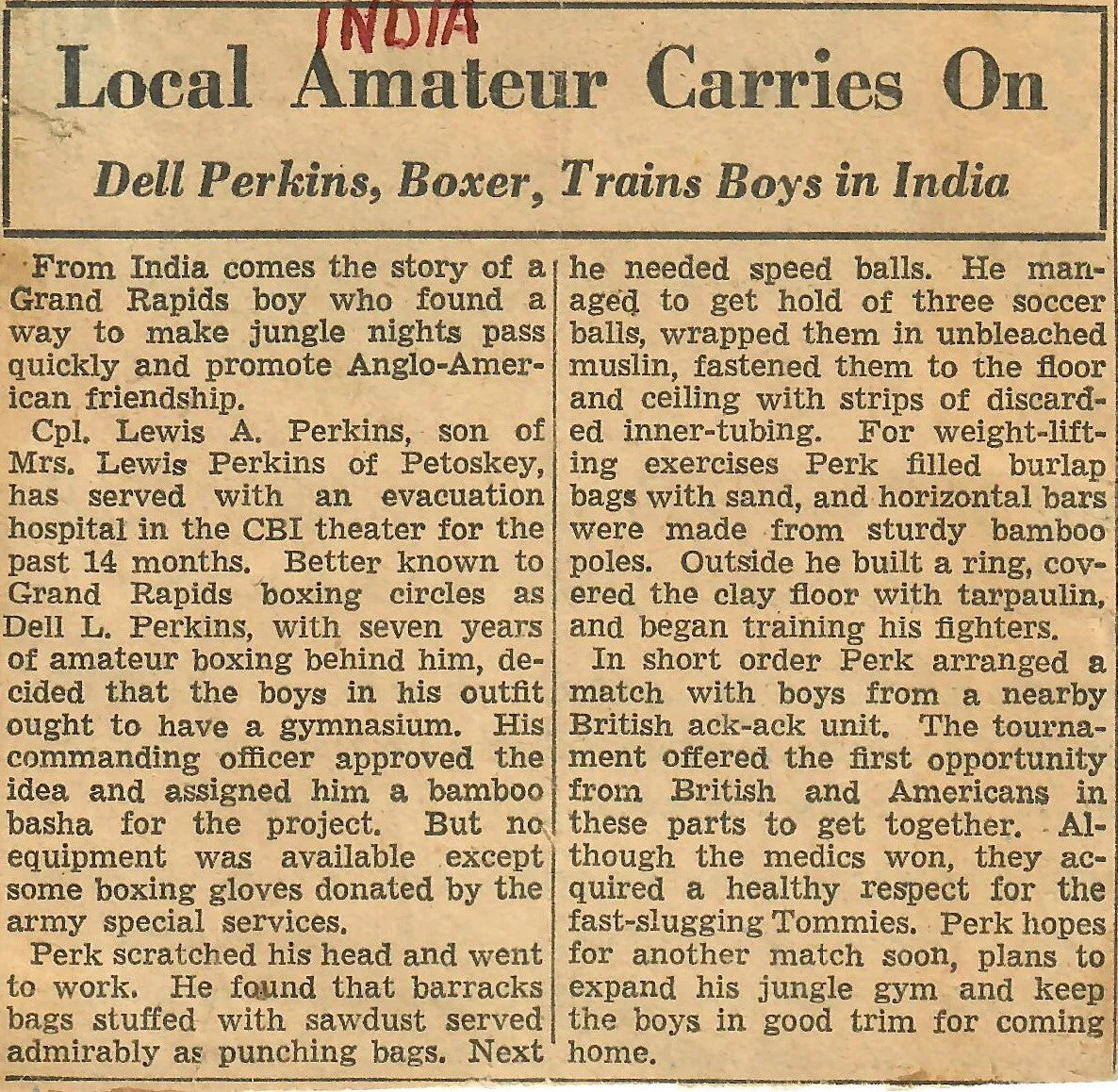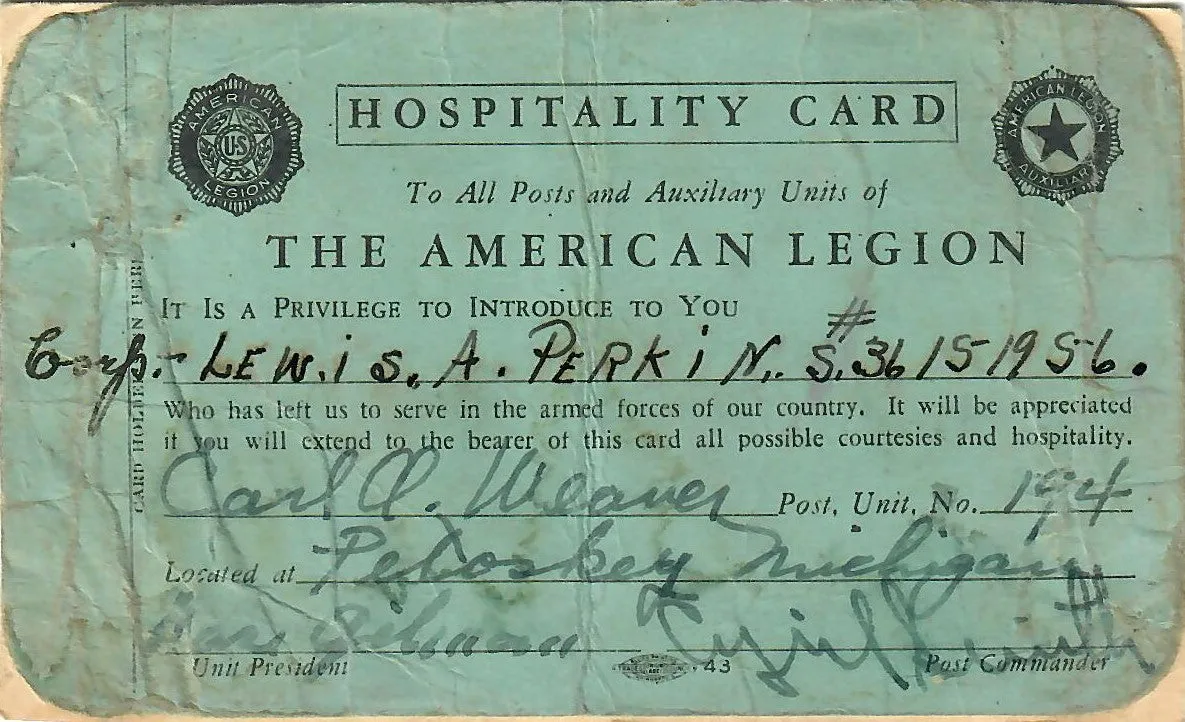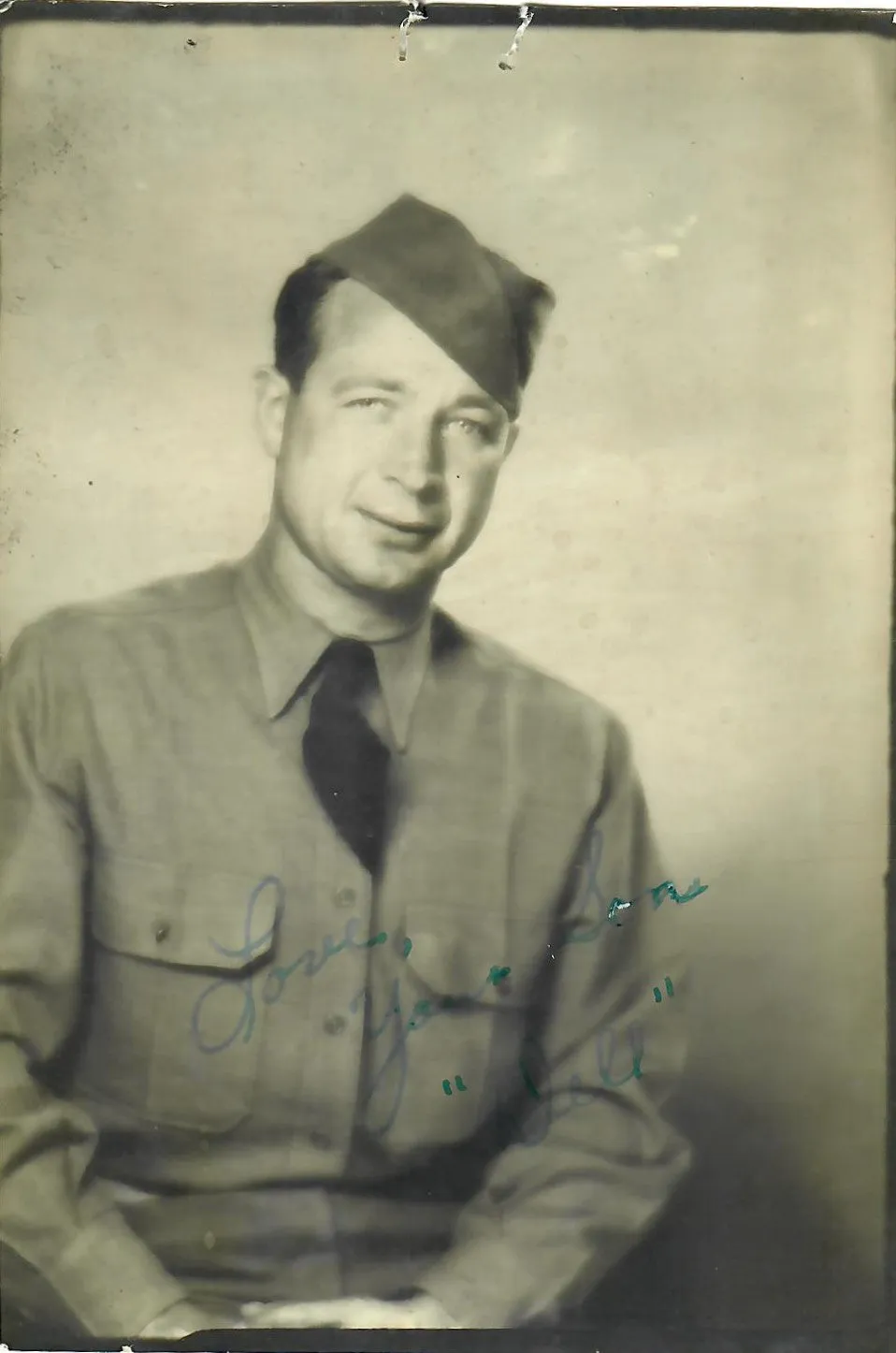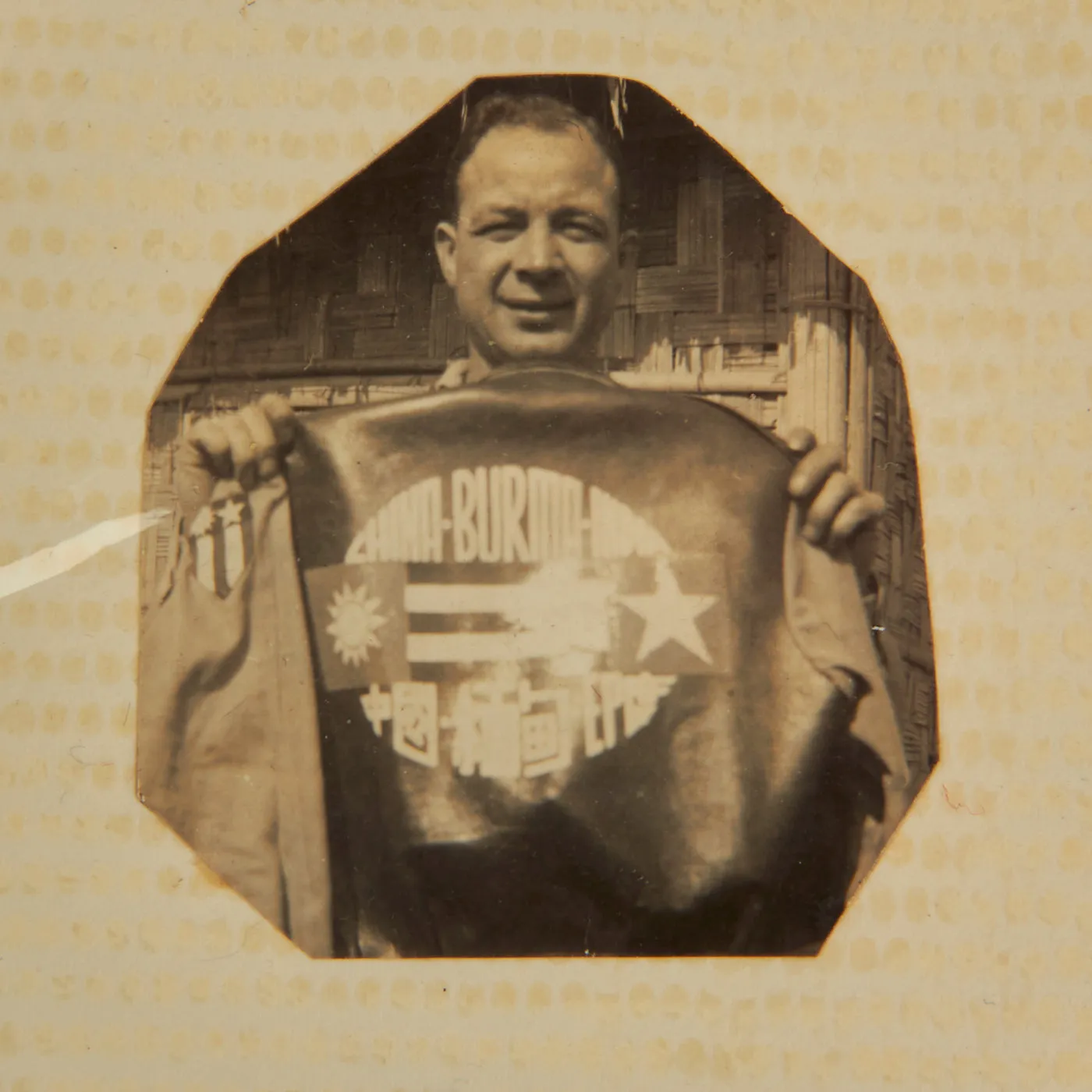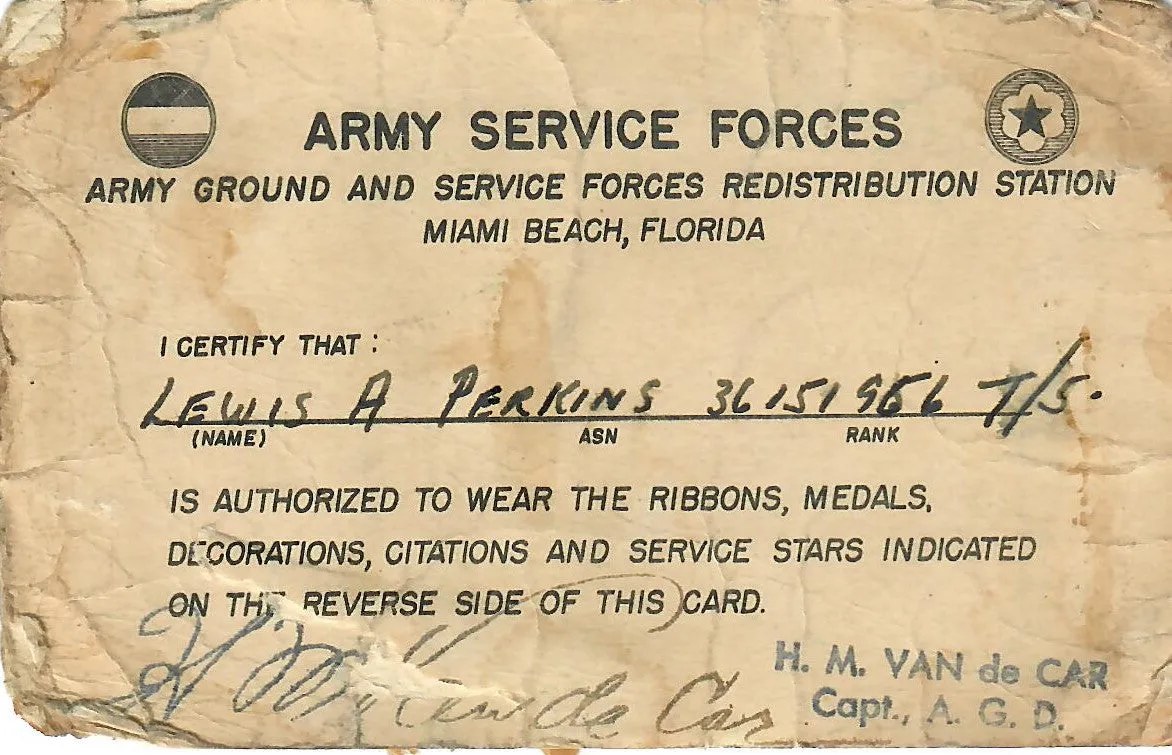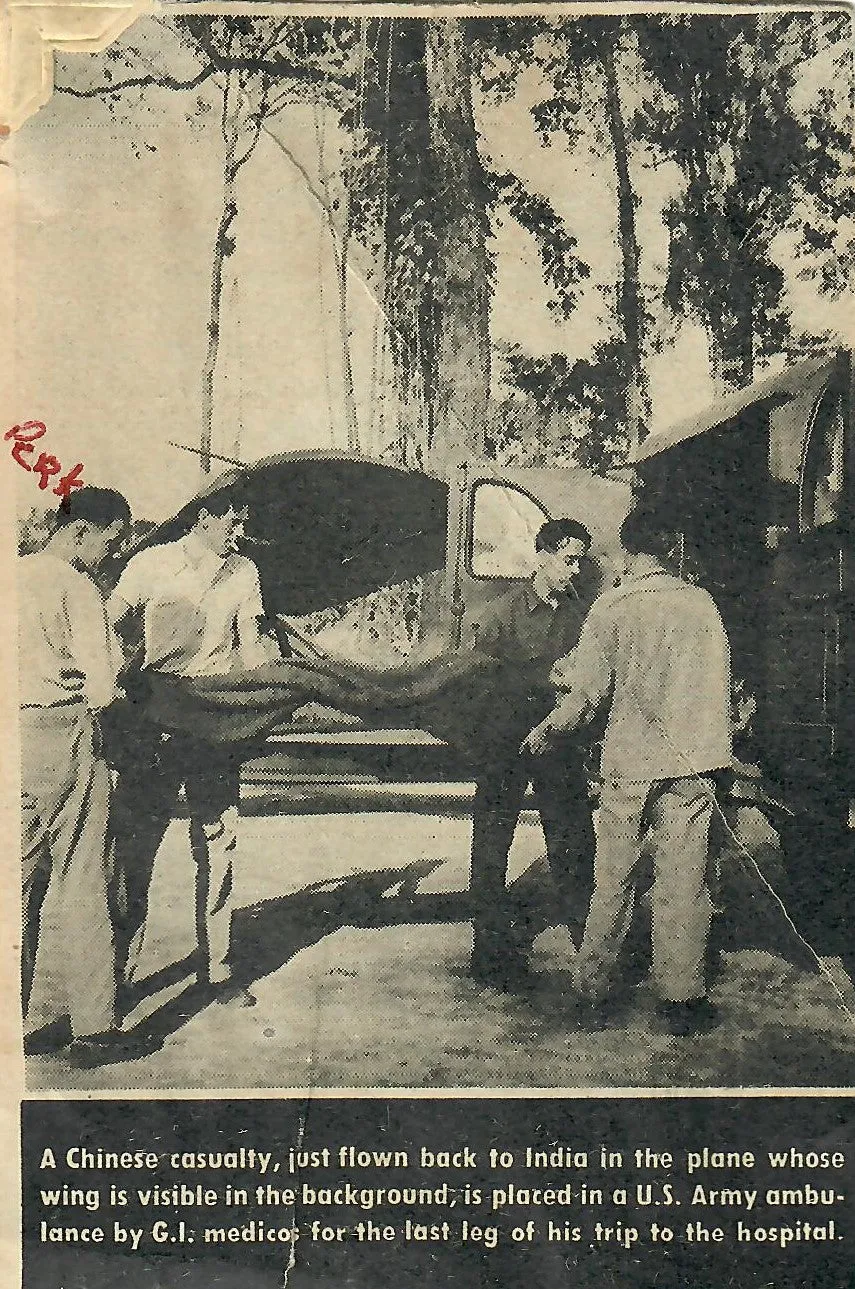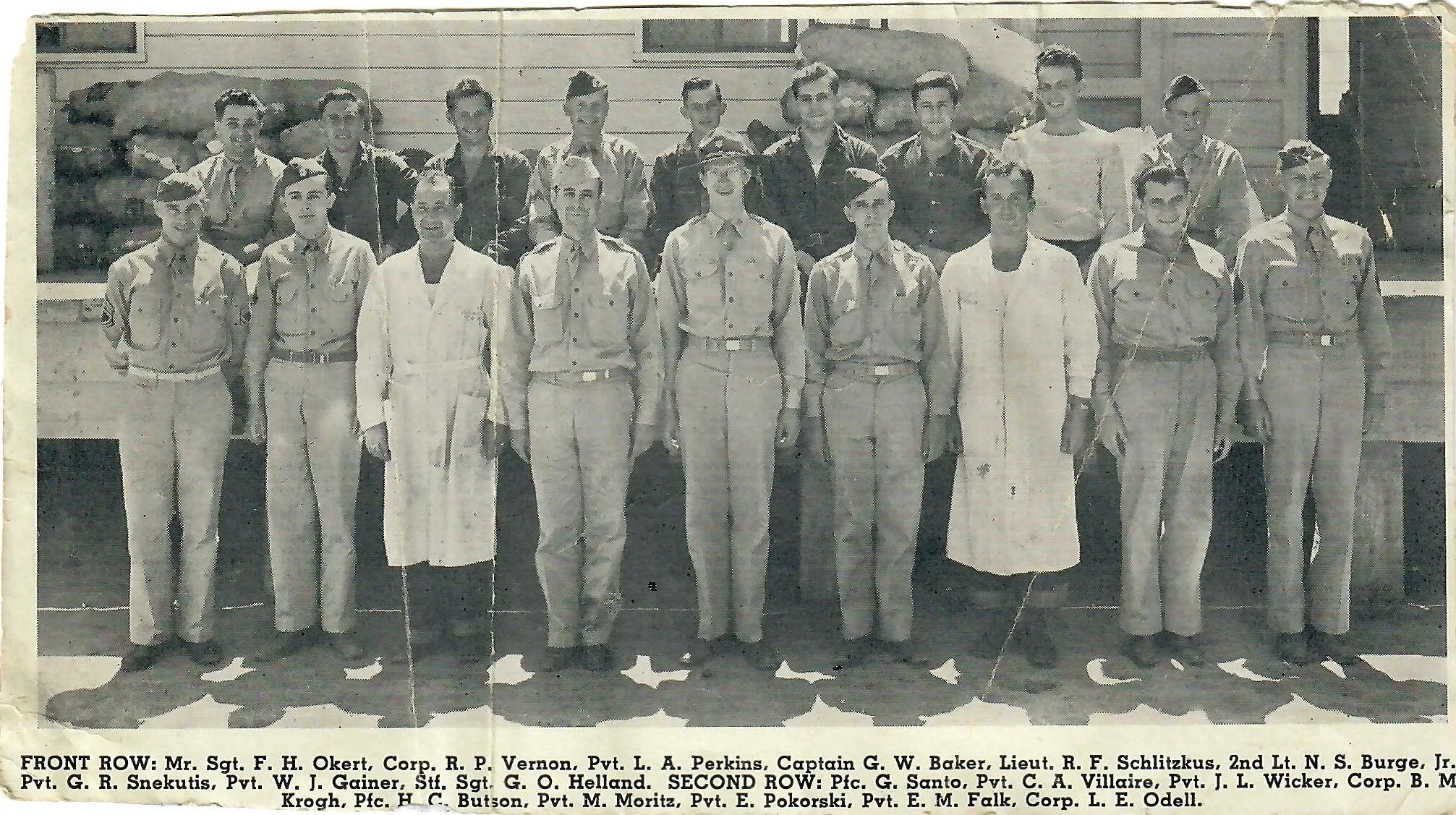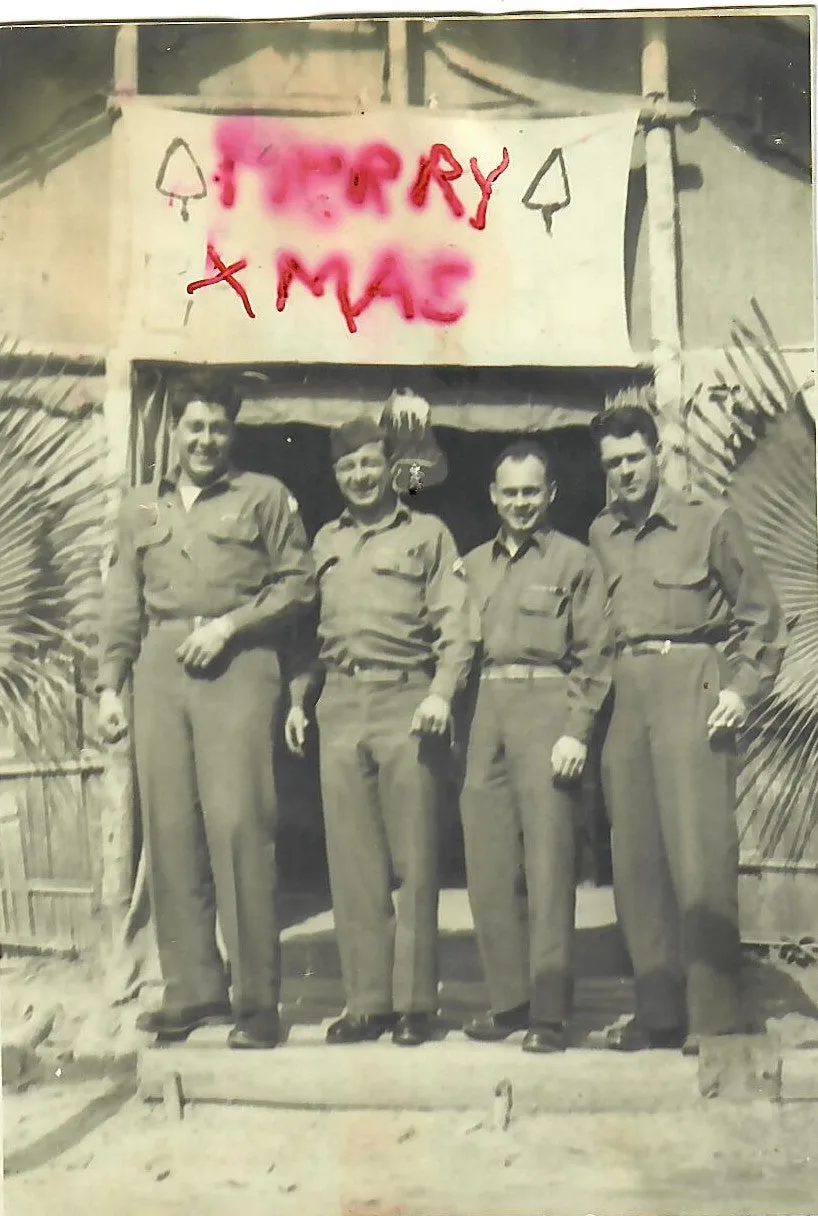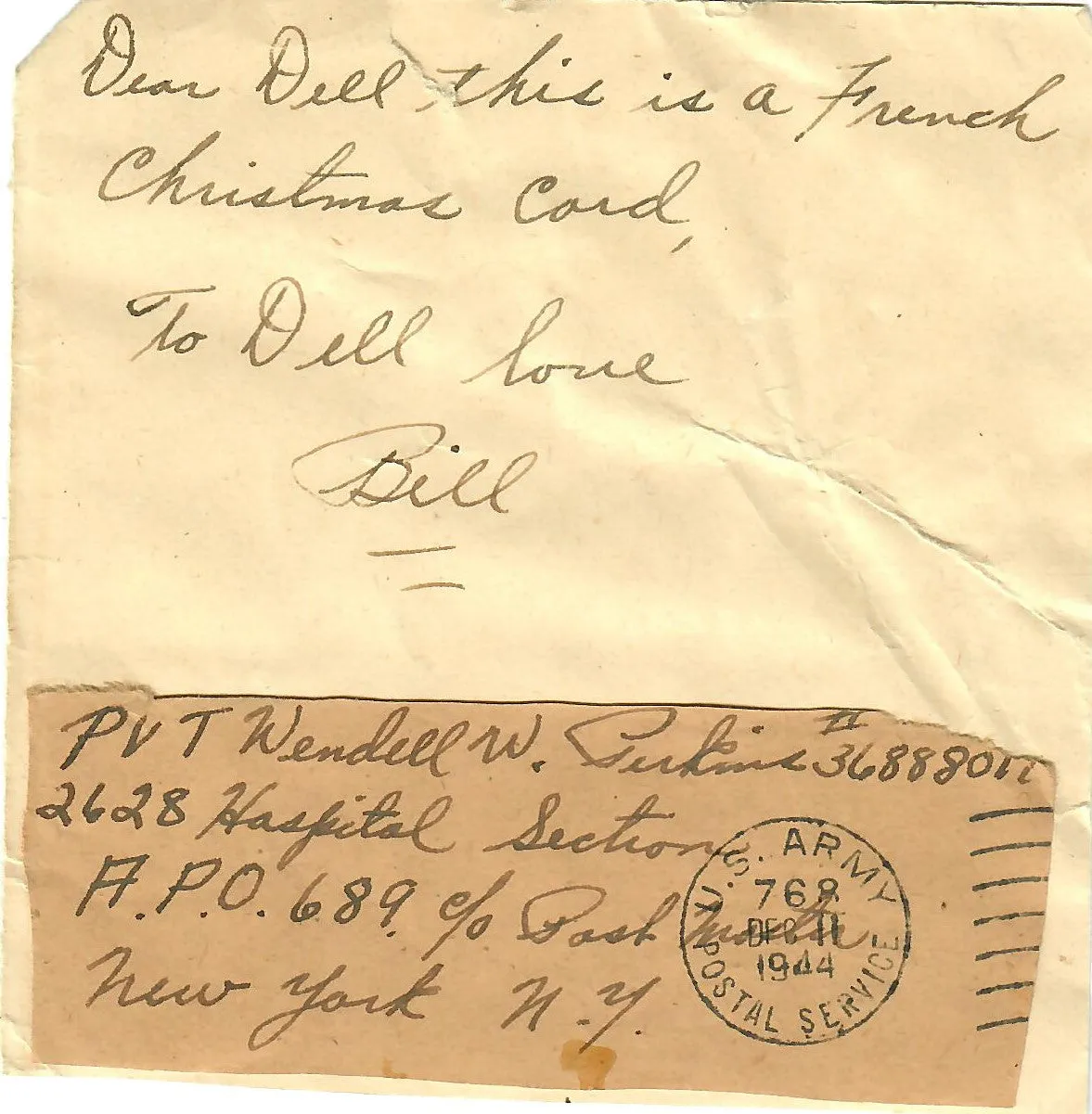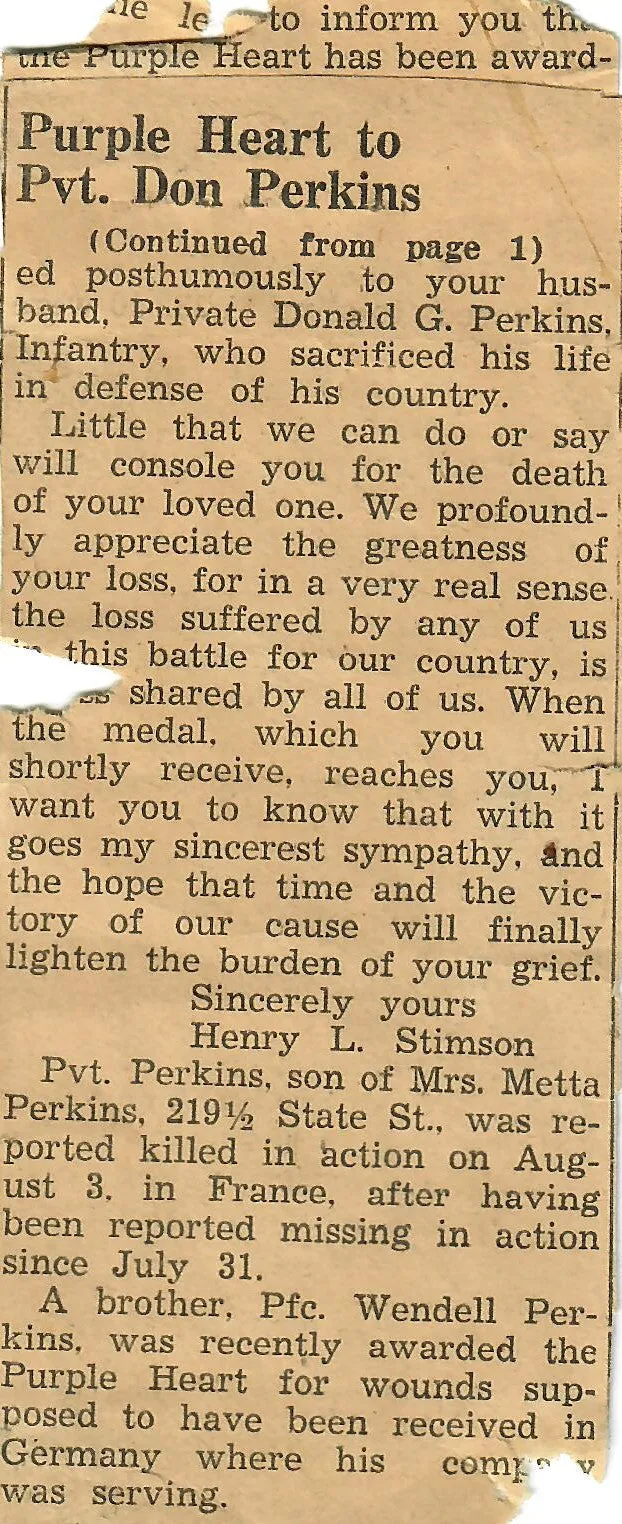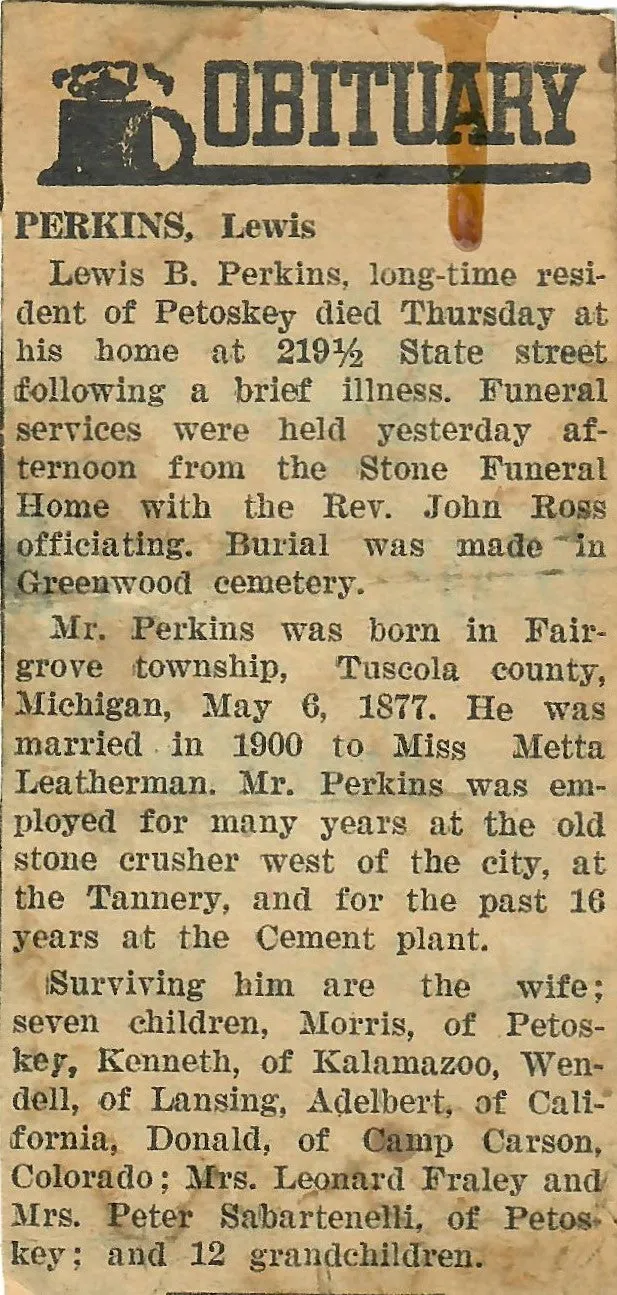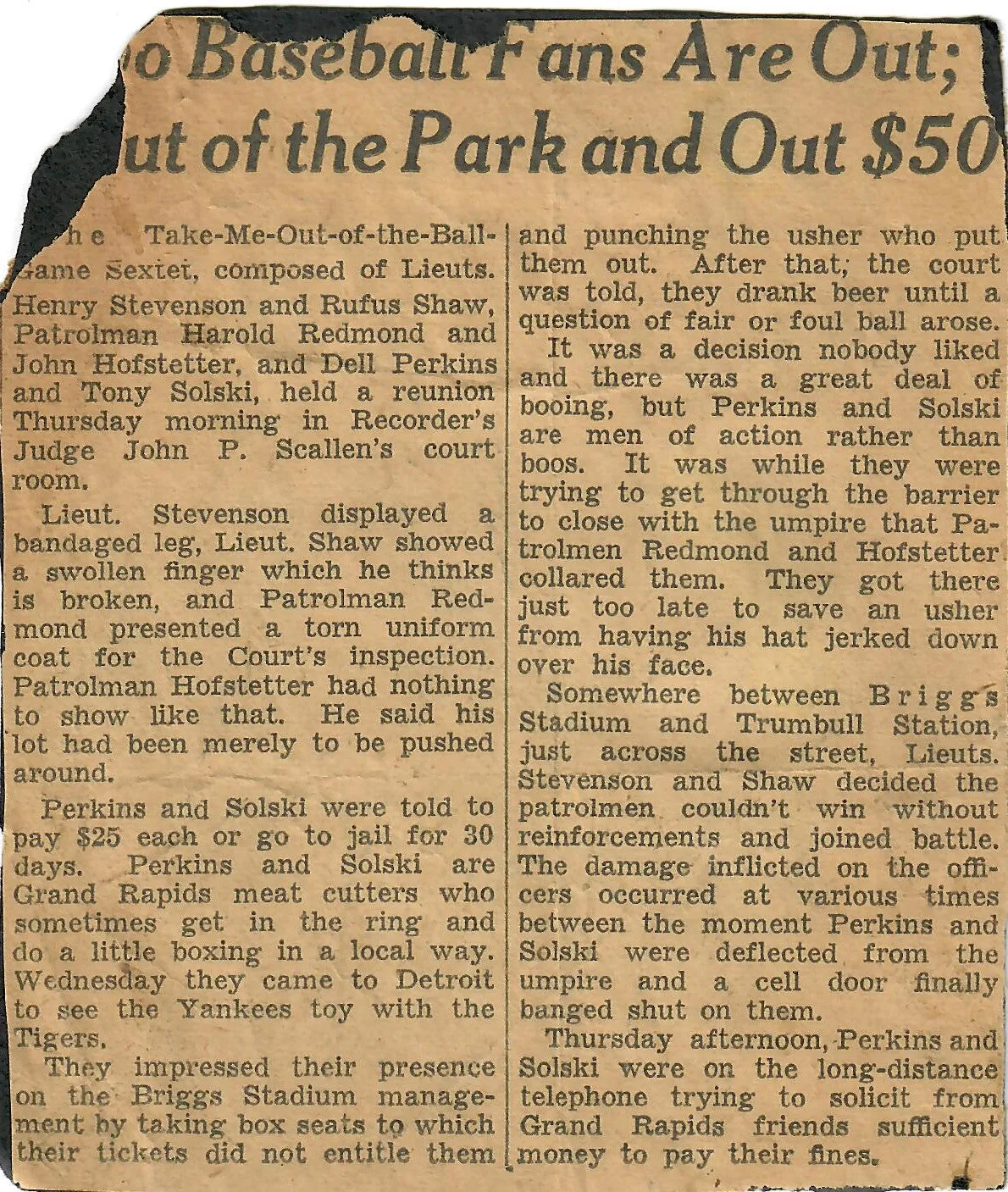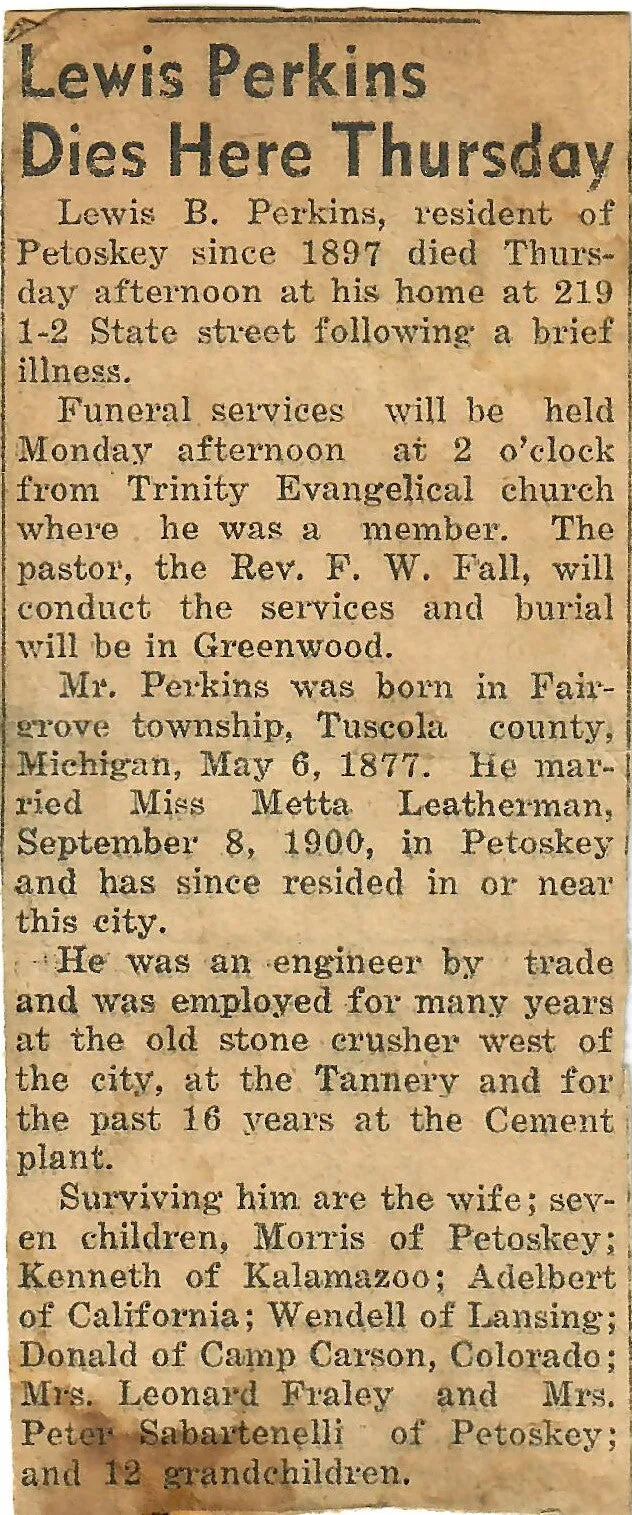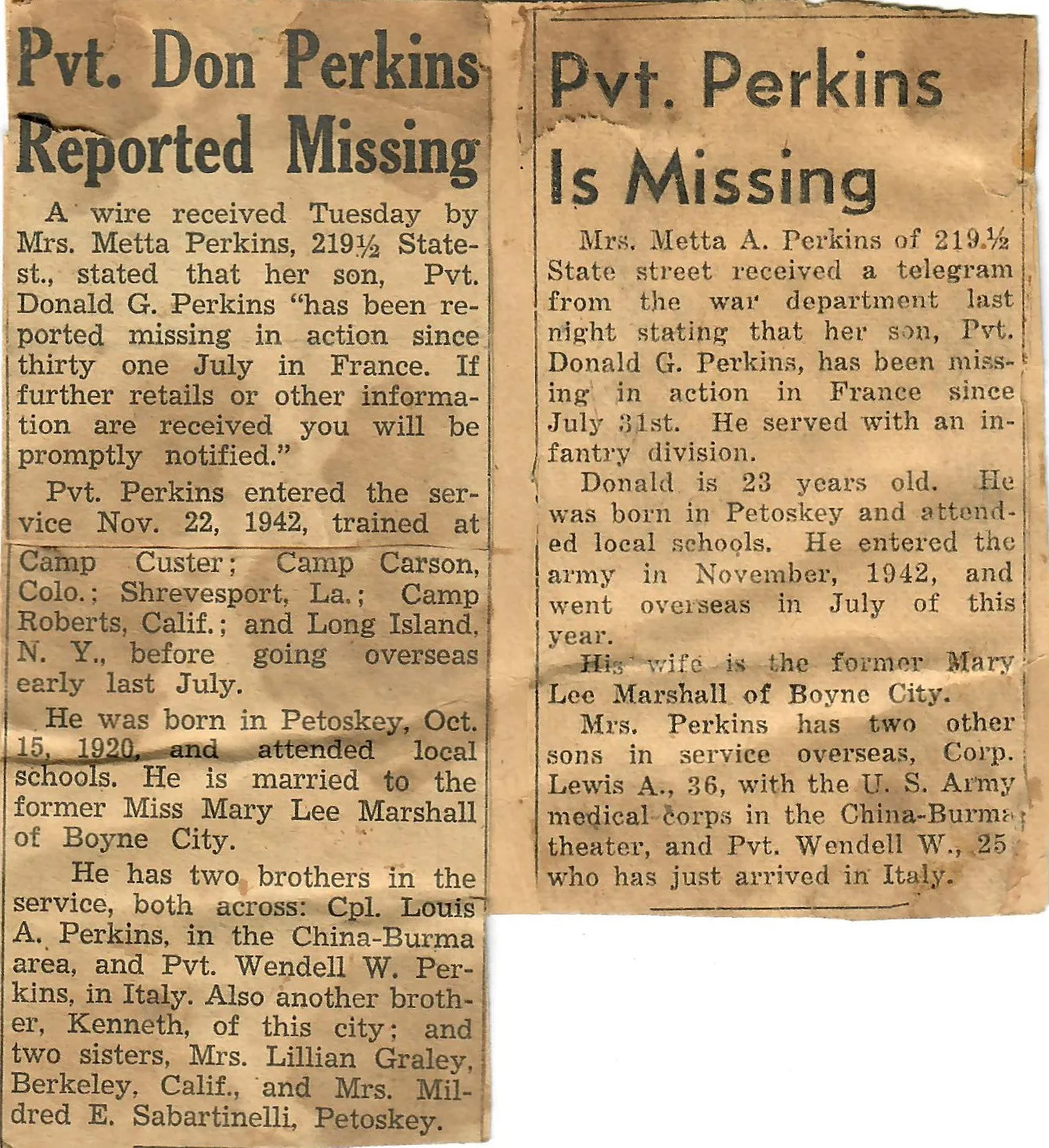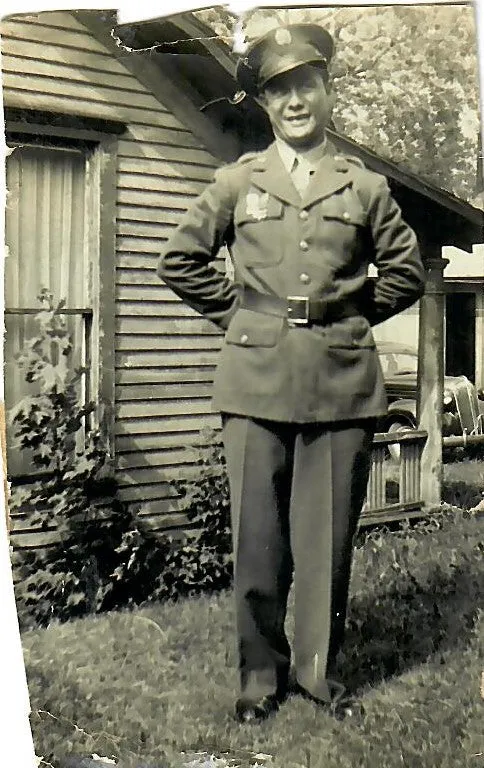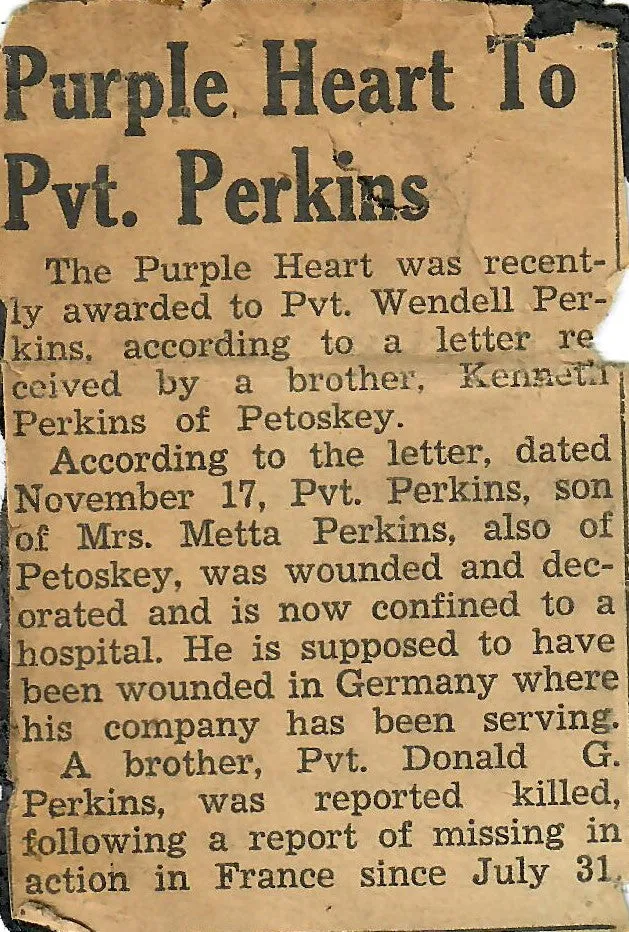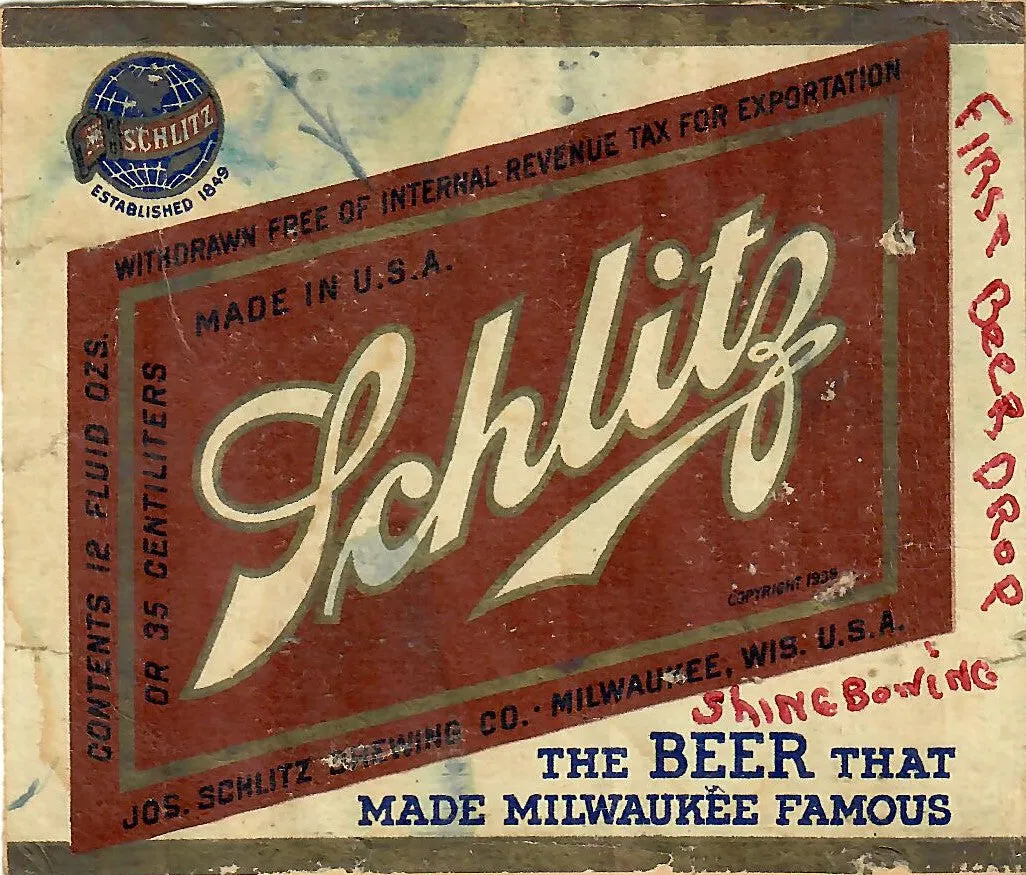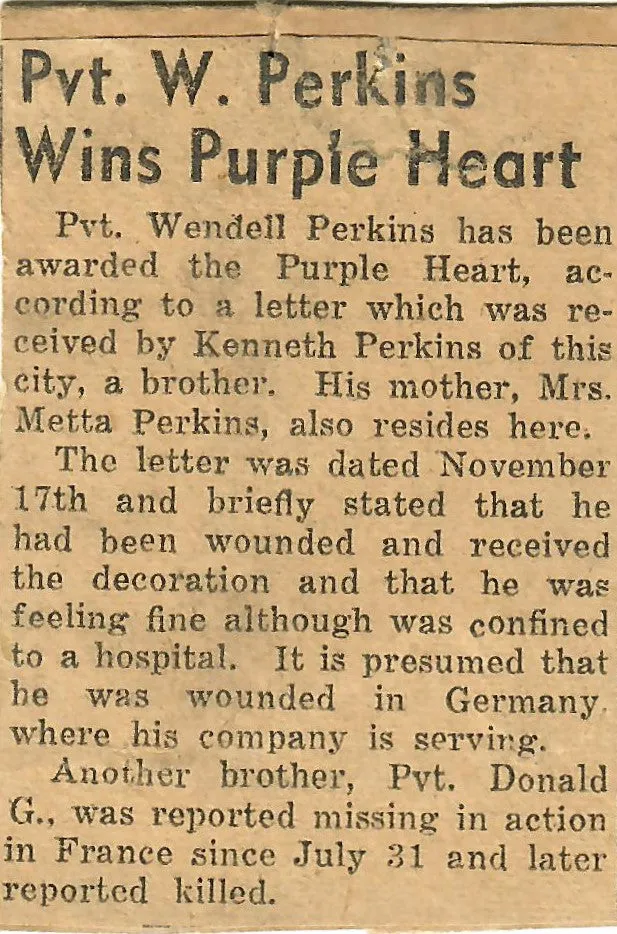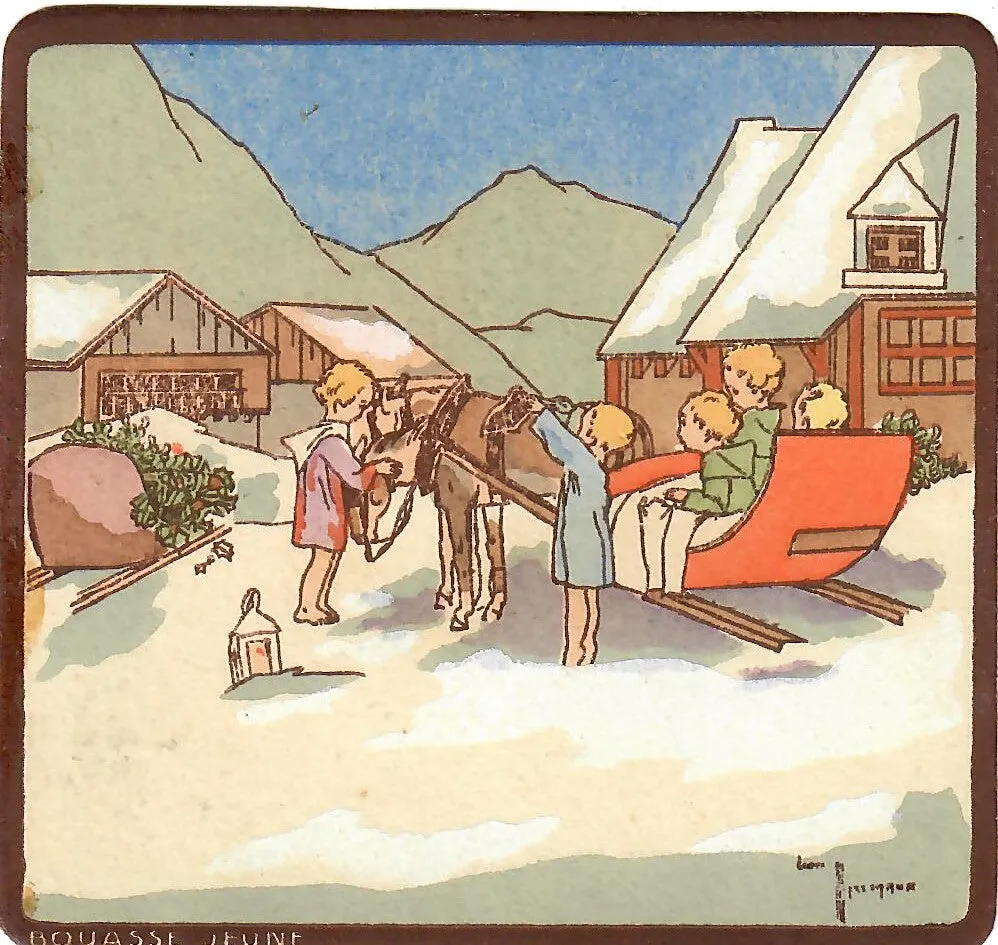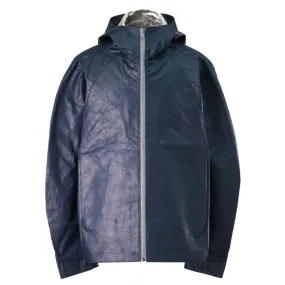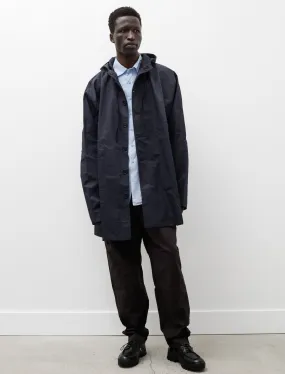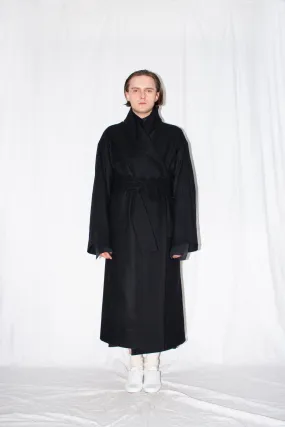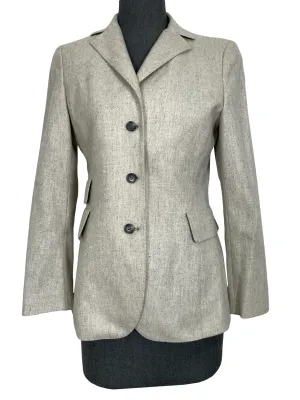Original Items: Only One Grouping Available. This is a heavily photo documented grouping belonging to Corporal Louis A. Perkins, also known as Dell Perkins from his glory days as an Amateur Boxer. This wasn’t the only Perkins to serve during the war either. “Dell” had two brothers who fought in the war as well. His one brother, Wendell, received life threatening wounds in Germany and was sent home while his other brother, Don, was reported missing in action in France before he was known to have been killed in action.
Corporal Dell Perkins served in the Chine-Burma-India Theatre for over 31 months leading into the Occupation. During his time in the CBI theatre, he earned two Bronze Stars for actions in two major battles (unknown) in Burma. He entered service on January 19, 1941 but was discharged for being over the max age to serve the Saturday before the Attack on Pearl Harbor. In January 1942 he was able to enlist again due to the age limits being changed for the war. We have not been able to locate any service information on Perkins, making for a wonderful research opportunity.
Even though we could not find his service information, this grouping contains dozens of photographs as well as newspaper clippings, aiding us in uncovering his story. Perkins was proud of his military service and luckily for us he ensured that there were plenty of photos of him and where he served taken. A few of the best photos of him are the ones of him wearing the jacket in this grouping, even showing the painted artwork on the back in a few of them! The artwork is almost completely faded away but thanks to his pride we still know what it looks like.
Another few images that are incredible are the ones of him with the captured Japanese goodluck flag in this grouping. There are images that shows where he had hung the flag and of him holding it up for a photo shoot. If you thought it couldn’t get any better than this, you’re mistaken because it does! After sorting through the newspaper clippings we uncovered the origin story of the flag and it’s a great one at that! The column talks about how he:
“brought with him a silk Jap company flag inscribed with “Good Luck – God Bless You” in Japanese. He obtained this flag from the helmet of a dead Jap Major at Myitkyina in Burma”
The condition of the flag reflects just how it is described and has the faded red organic stains and tears still visible.
The jacket that Perkins is wearing in a majority of his photos is a non issued type. This jacket has the appearance of an A-2 leather flight jacket but with heavy canvas sleeves and waistband. The back of the jacket was once painted with CHINA-BURMA-INDIA in both English and Chinese with an Art Deco style appearance. The paint is now faded and hard to read but as previously stated there is plenty of photo evidence. He was proud of this jacket and it appears to have had a long service during the war as well as post war.
Other items include a lovely Class-A service coat with incredible bullion insignia on both sleeves. The left sleeve is the standard CBI Shield constructed partially in bullion threading and the right sleeve is the “Ledo Road” patch in bullion.
The Ledo Road was well on its way through Burma and would need a symbol. In April of 1944 a competition to design a Ledo Road insignia was announced by General Pick and published in the April 13, 1944 issue of CBI Roundup, theater newspaper. T/4 Robert Smith, a cartographic illustrator assigned to the 20th General Hospital, had samples made for his design entry.
The October 5, 1944 edition of CBI Roundup contained an announcement of the contest results. According to that account, there were actually three winners and T/4 Robert Smith was not listed as one of them. Roundup listed T/Sgt. R. G. Powell of Atlanta, Ga., Engineers; T/4 Stewart D. Randolph of Chicago, Ill., Engineers, and T/4 Ralph B. Fuller of Minneapolis, Minn., Ordnance, as co-winners of the award.
The photo from Roundup showed two Red Cross women holding a large sample of the winning design, which was said to be a compilation of the three winners' entries. This account may have been from Public Relations sources and may not be completely accurate as to who actually designed the patch. The May 24, 1945 issue carried a story indicating official approval of the patch was hung-up in War Department red tape in Washington.
Although approved locally for uniform wear, the insignia was never officially approved by the U.S. Army. Having been created over two years after construction of the road began, most who were qualified to wear it, never did, at least not until they were sent home. Smith himself never saw the final version until after he had been home for several months.
Other items include countless photographs, keepsakes and newspaper clippings. All items are in wonderful condition though all paper items appear to have once been in a photo album. This grouping has fantastic research opportunities and is perfect for the serious collector.
Comes more than ready for further research and display.
The Ledo Road (from Ledo, Assam, India to Kunming, Yunnan, China) was built during World War II so that the Western Allies could supply the Chinese as an alternative to the Burma Road (which had been cut by the Japanese in 1942). It was renamed the Stilwell Road, after General Joseph Stilwell of the U.S. Army, in early 1945 at the suggestion of Chiang Kai-shek. It passes through the Burmese towns of Shingbwiyang, Myitkyina and Bhamo in Kachin state.
In the 19th century, British railway builders had surveyed the Pangsau Pass, which is 1,136 metres (3,727 feet) high on the India-Burma border, on the Patkai crest, above Nampong, Arunachal Pradesh (then part of Assam). They concluded that a track could be pushed through to Burma and down the Hukawng Valley. Although the proposal was dropped, the British prospected the Patkai Range for a road from Assam into northern Burma. British engineers had surveyed the route for a road for the first 130 kilometres (80 miles). After the British had been pushed back out of most of Burma by the Japanese, building this road became a priority for the United States. After Rangoon was captured by the Japanese and before the Ledo Road was finished, the majority of supplies to the Chinese were delivered via airlift over the eastern end of the Himalayan Mountains known as the Hump.
Of the 1,726 kilometres (1,072 mi) long road, 1,033 kilometres (642 mi) is in Burma and 632 kilometres (393 mi) is in China with the remainder in India.
After the war, the road fell into disuse. In 2010, the BBC reported, "Much of the road has been swallowed up by jungle.





